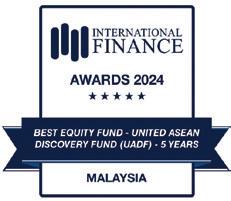BDB elevates Bahrain’s SMEs & economic growth
BDB is emerging as a guiding force in Bahrain's SME revolution, led by Group CEO Dalal Al Qais

Green Banking: Promising future, yet challenging
Can Claudia Sheinbaum break AMLO’s shadow?

EDITOR’S NOTE

BDB is emerging as a guiding force in Bahrain's SME revolution, led by Group CEO Dalal Al Qais

Green Banking: Promising future, yet challenging
Can Claudia Sheinbaum break AMLO’s shadow?

EDITOR’S NOTE
United States President Donald Trump, in his second stint at the White House, has been quite vocal about the future direction of the American energy industry. He wants the sector's players to enter the "Drill, Baby, Drill" mode and set new records for oil and gas exploration and extraction. However, oil majors are concerned that increasing oil and gas output even further could create a glut and drive prices down, which is a development they want to avoid at any cost.
Meanwhile, the small Caucasian country of Georgia has become a new global tech hotspot. In 2020, only 1,971 IT companies were operating in the nation, with 79% of them being locally owned. But in 2024, the tally has risen to 24,117, with 84% now being international. The sector recorded a turnover of GEL 2.4 billion ($816 million) in 2023, marking a significant boost to Georgia’s economic landscape.
Let’s shift gears and focus on "Green Banks," mission-driven institutions designed to drive the transition to clean energy and combat climate change. Unlike traditional banks, their primary goal is not profit maximisation but rather the deployment of clean energy solutions. These institutions work to create a steady pipeline of sustainable projects and actively seek out opportunities within the market to make a meaningful impact.
Our cover story for the April 2025 edition of International Finance highlights the Bahrain Development Bank (BDB), which, since its inception in 1992, has been a cornerstone of the Kingdom’s financial ecosystem. Standing in 2025, BDB has evolved into Bahrain’s primary hub for SME development, and it is actively working to build a stronger entrepreneurial ecosystem in the Kingdom.
APRIL 2025
VOLUME 25
ISSUE 47
editor@ifinancemag.com www.internationalfinance.com

Bahrain Development Bank is emerging as a guiding force in the country's SME revolution, led by Group CEO Dalal Al Qais
ECONOMY BANKING & FINANCE

GREEN BANKING: PROMISING FUTURE, YET CHALLENGING
Green banking, has transformed itself from a niche concept to a central strategy for financial institutions

THE BIG TECH CRACKDOWN: A THREAT TO INNOVATION?
For the EU, competition is just as important as competitiveness when it comes to regulating big tech

CAN CLAUDIA SHEINBAUM BREAK AMLO’S SHADOW?
Claudia Sheinbaum’s presidency represents a significant step forward for women in leadership in Mexico

DOGE’S ‘REFORM PLANS’ FOR FAA: WHAT IS MUSK UP TO?
According to reports, Elon Musk’s DOGE project directed the firing of hundreds of Federal Aviation Administration employees
'ACQUISITIONS ACCELERATE GROWTH EFFECTIVELY'
Harbourfront Wealth has developed and grown a leadership team with deep operational knowledge
MIDDLE EAST INVESTORS BET BIG ON TURKEY

BUSINESS DOSSIER
48 BCEL Bank: Revolutionising banking for Laotians
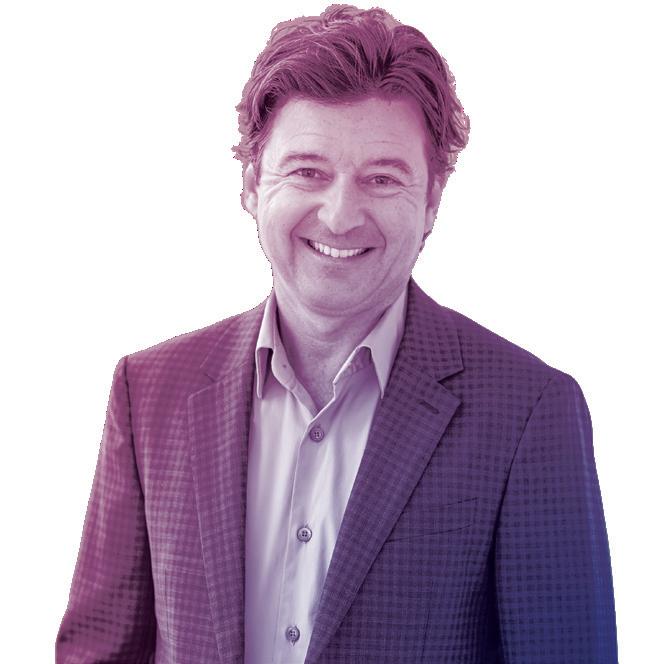
Over the past 18 months, bond yields in Turkey have increased significantly 44 INSIGHT
60 finexis advisory shines in global financial rankings
70 Mohammed Alsolami: A financial entrepreneur’s success story
82 Petroleum Trading Lao revolutionises fuel access
92 ABK: Kuwait’s Best Investor Relationship Bank
104 SAFE: Leading Saudi security & economic growth IN CONVERSATION
of

Are African ports ready for global trade boom?

In corporate lending, the use of real-time financial analytics is

Director & Publisher Sunil Bhat
Editorial
Prajwal Wele, Agnivesh Harshan, CL Ramakrishnan, Prabuddha Ghosh
Production Merlin Cruz
Technical Team Prashanth V Acharya, Bharath Kumar
Business Analysts
Alice Parker, Indra Kala, Stallone Edward, Jessica Smith, Harry Wilson, Susan Lee, Mark Pinto, Richard Samuel, Merl John
Business Development Managers
Christy John, Alex Carter, Gwen Morgan, Janet George
Business Development Directors
Sid Jain, Sarah Jones, Sid Nathan
Head of Operations Ryan Cooper
Accounts Angela Mathews
Registered Office INTERNATIONAL FINANCE is the trading name of INTERNATIONAL FINANCE Publications Ltd 843 Finchley Road, London, NW11 8NA
Phone
+44 (0) 208 123 9436

Fax +44 (0) 208 181 6550
Email info@ifinancemag.com
Press Contact editor@ifinancemag.com
Associate Office
Zredhi Solutions Pvt. Ltd. 5th Floor, Sai Complex, #114/1, M G Road, Bengaluru 560001
Ph: +91-80-409901144

As it releases its results, Apple is likely to be questioned about the impact of the China-US tariff standoff on its business and the delayed roll-out of important AI features. Despite Apple profiting from a surge in sales of its cheaper iPhone 16e during the January-March period due to possible tariffs, Wall Street analysts still predict the company will report a slight sales decline. That would be the second consecutive quarter with declines. Electronics have not yet been subject to tariffs under the Trump administration, but Washington has hinted that some levies may be implemented. Improvements to Siri have been delayed to 2026, and Apple pulled a commercial that promoted unreleased AI functionalities.

OnePlus recently confirmed that the device will not be launching in the US or Europe, despite the fact that the more compact and somewhat alluring OnePlus 13T attracted attention when it was announced. In essence, the OnePlus 13T is merely a scaled-down version of the OnePlus 13, one of the greatest Android flagships in recent years. Its powerful specifications, larger battery, and more are all included in a more compact design with a 6.32inch display.
Gulf Bank has accelerated its efforts to inform clients about the value of utilising secure platforms, like the "Sahel" app, when making payments for services provided by government organisations as part of its ongoing support for the "Diraya" awareness campaign. Gulf Bank advised users to confirm the legitimacy of websites and digital platforms before making any payments or entering information, cautioning against relying too much on internet search engines, which can be deceptive and may direct users to fraudulent websites that look legitimate.
The Zimbabwean government has wrapped up public consultations on a new bill that aims to standardise fish production and handling practices in its aquaculture operations and streamline the regulation and management of the country's fisheries. The Ministry of Lands, Agriculture, Fisheries, Water, and Rural Development is pushing the Zimbabwean Fisheries and Aquaculture Bill, which would place all regulatory authority over fisheries and aquaculture under the ministry's Fisheries and Aquaculture Resources Production Department.
Source: Statista




In Doha, Saudi Foreign Minister Prince Faisal bin Farhan met with Sheikh Mohammed bin Abdulrahman bin Jassim Al Thani, the Prime Minister and Foreign Affairs Minister of Qatar. They talked about bilateral relations, aspects of cooperative efforts, and strategies for their development during the
meeting, apart from co-chairing the Saudi-Qatari Coordination Council's Executive Committee meeting. Within the framework of the Saudi-Qatari Coordination Council, the two parties reviewed the strong fraternal ties and talked about ways to develop them both bilaterally and multilaterally in the international arena.

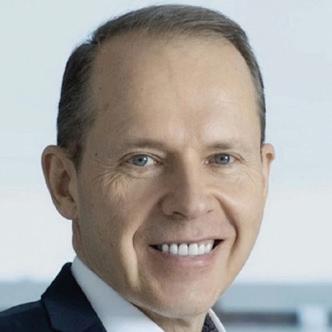
HEIKKI MALINEN
CEO OF OUTOKUMPU Heikki Malinen addressed the limited direct impact of recent US tariffs on the company's operations but cautioned about ongoing challenges from renewable fuel oversupply and market volatility
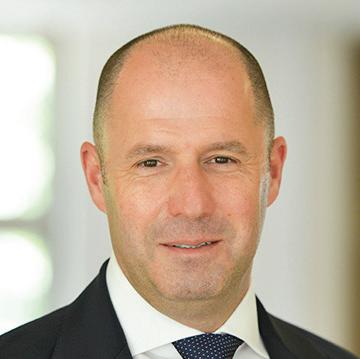
THORSTEN MICHALIK
CEO OF HSBC Thorsten Michalik was appointed as the new CEO of HSBC's asset management business for the UK, Europe, and the Americas, having previously led HSBC’s asset management operations in Germany

JOCHEN ZEITZ
CEO OF HARLEY-DAVIDSON Jochen Zeitz announced his intention to retire after five years at the helm, having previously served as Chairman and CEO of Puma for 18 years and being instrumental in steering Harley-Davidson
The UAE provides a stable and business-friendly environment, with an emphasis on diversifying the economy
Egypt is predicted to contribute 5,891 hotel rooms in 2025, ranking fourth in the Middle East and Africa region

Aldar Properties' first-quarter 2025 profit before tax increased by 33% year over year to AED 2.2 billion ($599 million), while net profit after tax increased by 22% year over year to AED 1.9 billion. Chairman Mohamed Khalifa Al Mubarak stated that the company's early-year performance demonstrates the strength and diversification of its business sectors, as well as its capacity to function effectively and expand in accordance with a well-defined plan to generate long-term, sustainable value.
According to him, the UAE provides a stable and business-friendly environment, with an emphasis on diversifying the economy, luring in foreign investment, and investing in key industries. He pointed out that the development revenue backlog has hit a record AED 55.7 billion and stated that Aldar is in a strong position to deliver sustainable performance, deploy capital effectively, and reinforce its role as a longterm partner in guiding the UAE's economic developmental trajectory.
According to Aldar Group CEO Talal Al Dhiyebi, the company's first-quarter
financial results were impressive, fuelled by sustained growth in its core business areas. Development sales climbed 42% to AED 8 billion, showing continued strength.
Aldar has taken proactive measures to improve liquidity and fortify its financial position by obtaining a syndicated loan and issuing capital markets securities. Key financial highlights include Aldar's AED 46.7 billion UAE revenue backlog, which shows good revenue visibility for the ensuing two to three years.
Aldar obtained AED 9 billion in syndicated revolving credit facilities and an AED 1.8 billion hybrid capital solution from Apollo, and it issued AED 3.7 billion in hybrid capital notes and AED 1.8 billion in green sukuk to further improve its capital structure and financial flexibility.
Strong government investment in housing and infrastructure is reflected in the AED 49.5 billion in construction currently underway, out of the AED 88.7 billion project management services backlog.


According to Sherif Fathy, Egypt's Minister of Tourism and Antiquities, the country is extending its options for lodging tourists with new rules for vacation rentals in an effort to alleviate the current hotel room shortage caused by an increase in tourists.
The minister said Egypt's tourism industry saw 15.78 million visitors in 2024, a recordbreaking 21% increase over pre-pandemic levels and a 6% year-over-year increase. He further noted that international visitor arrivals increased by a staggering 25% in the first quarter alone, compared to the previous year, despite the initial forecast for 2025 calling for a 6% increase.
“We are happy with the developments, but we are extremely challenged by the lack of rooms to accommodate the demand… that's why we're encouraging all types of investments in rooms and hotels,” he said.
As per Fathy, the Airbnb business model serves as the basis for the recently approved set of minimum requirements for vacation rentals. It is anticipated that the action will help areas like the New Valley and Aswan,
where a large number of establishments have historically operated unofficially without a Tourism Ministry license.
The ministry also offered an incentive for investment in both vacation homes and hotels by waiving all fees associated with changing a property's license from any business to a touristic business.
Fathy noted that Egypt's tourism vision for 2031 calls for 30 million tourists annually, and reaching this target will necessitate doubling the number of hotel rooms.
“If the supply of rooms grows ahead of schedule, the tourism target could be met earlier,” he said.
A February 2025 report by Zawya Projects revealed that Egypt is predicted to contribute 5,891 hotel rooms in 2025, ranking fourth in the Middle East and Africa region after Saudi Arabia, the United Arab Emirates, and Qatar, respectively.
Tourism marketing expert and CEO of Digital Experts, Alaa Khalifa, predicts that vacation rentals will fill 75% of Egypt's current 200,000 hotel room deficit.
DXB reached its highest monthly traffic ever in January alone, welcoming 8.5 million visitors
Economies that rely on imports and oil exports have been severely impacted this year
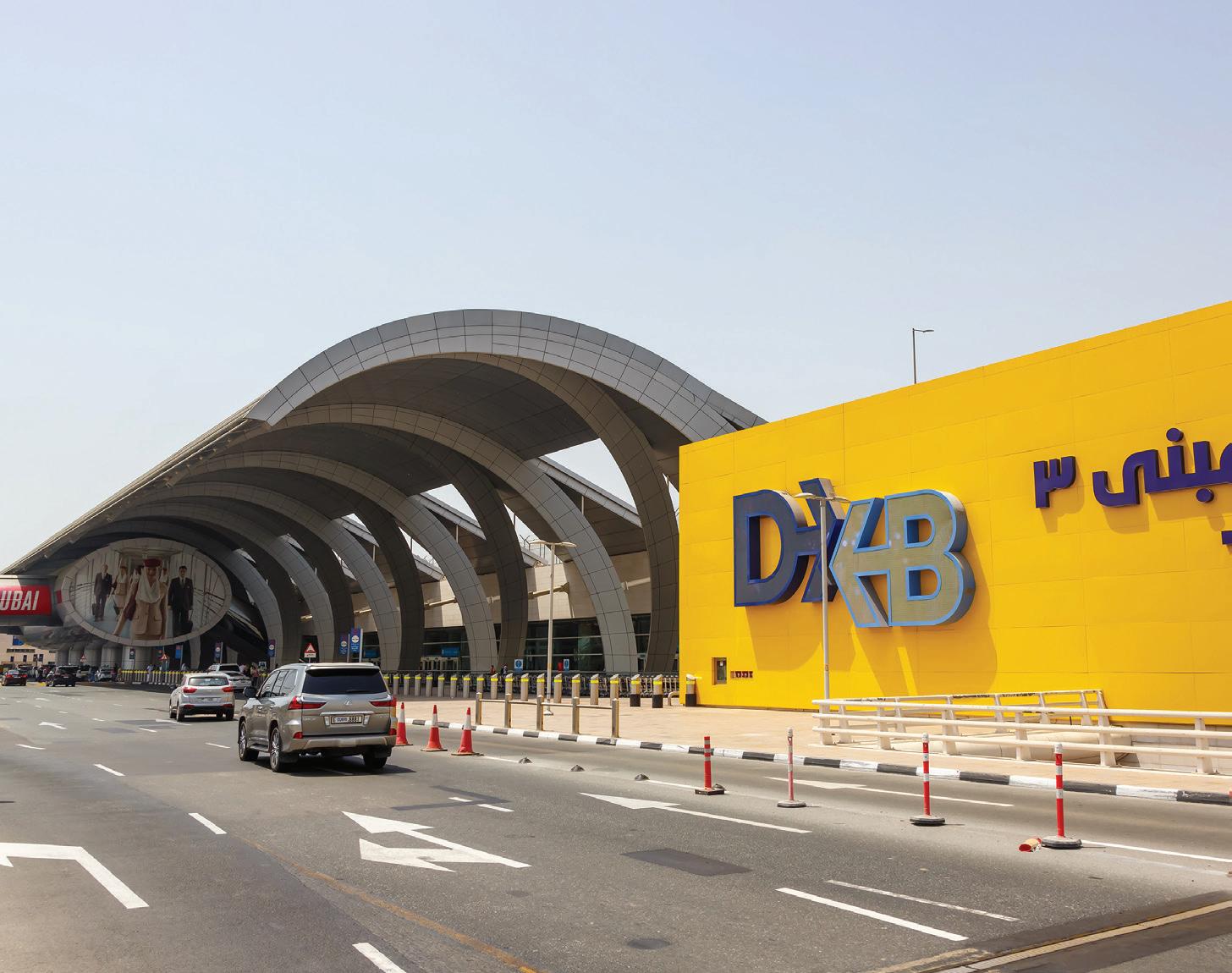
Senator lauds Tinubu's tax reforms
According to Senator Olamilekan Adeola, who represents Ogun West in the National Assembly, President Bola Tinubu's administration's tax reform programme will save the country's economy from the "cabal's" influence. He explained that the "cabal" no longer controls the nation's affairs. Adeola made this declaration during the second Mega Empowerment/Town Hall Meeting and Thank You Tour of Ogun West in Ipokia. He pointed out that Tinubu had virtually eliminated the cabal's ability to govern the nation. According to the lawmaker, the country is headed toward stable growth and economic recovery. Adeola also said he would continue to facilitate developmental projects for Ogun West.
DXB receives 23.4 million guests in Q1
In Q1 2025, Dubai International (DXB) welcomed 23.4 million visitors, sustaining its momentum and solidifying its position as the world's top international airport. Both Dubai's increasing popularity as a global travel destination and DXB's status as the preferred entry point for millions of tourists were reflected in the performance. Even though the first quarter of this year broke all previous records, traffic was up 1.5% from the same period in 2024. DXB reached its highest monthly traffic ever in January alone, welcoming 8.5 million visitors. However, there was a bump. Cargo volumes registered a minor contraction of 3.6% year-on-year during the first quarter, with Dubai Airport handling 517,000 tonnes of cargo.
Source: Statista




African and Caribbean consumers will be seamlessly able to source gasoline, diesel, jet fuel, and other products from refineries on the continent thanks to the $3 billion revolving credit line that the African Export-Import Bank has launched. For the facility's first three years, the bank anticipates that it will provide $10-14 billion in trade finance and help reduce the region's yearly fuel import bill, which is approximately $30 billion. Economies that rely on energy trade have been impacted by a decline in crude prices and an increase in freight expenses. Brent crude is down over 20% since January on supply dynamics and fears that a global trade war will sap demand.
The internationally recognised interior architecture and design firm Two | 88 by Rina Rankova has teamed up with Swiss real estate developer DHG Properties on their most recent residential project in Meydan Bukadra, Dubai. This partnership combines Two | 88's expertise in world-class design and upscale interiors with DHG's dedication to real estate excellence and Swiss-quality construction, setting new standards for upscale living in Dubai. Two | 88 has studios in Dubai, London, and Marbella, and possesses vast experience designing ultra-prime homes and businesses. The partnership comes at a time when Dubai is experiencing a surge in record-breaking luxury property transactions.
Bretton Woods had a crucial role in saving a globe ravaged by conflicts, poor leadership, and geopolitical uncertainty
Russia's invasion of Ukraine in the winter of 2022 brought to light once more the shortcomings of the World Bank and the International Monetary Fund (IMF), two international organisations tasked with coordinating strategies to address the ensuing economic crisis.
Following the attack, US Treasury Secretary Janet Yellen, a former chair of the US Federal Reserve, issued a warning.
When representatives from 44 countries, led by the United States and the United Kingdom, convened in New Hampshire for the so-called United Nations Monetary and Financial Conference in July 1944, Bretton Woods was established
Janet Yellen said, "We will need to modernise our existing institutions—the IMF and the multilateral development banks— so that they are fit for the 21st century, where challenges and risks are increasingly global."
She added that the defeat of Russia calls for actions that the World Bank and IMF might not be able to implement.
Yellen, a pivotal figure in the previous Joe Biden administration, was referring to a wide range of issues, including trade disputes that are getting worse, sanctions against Russia, big-power rivalry that is causing geopolitical tensions, and— perhaps most worrying of all—the deterioration of the 80-year-old Bretton Woods institutions that were initially created for this very reason.

Bretton Woods had a crucial role in saving a globe ravaged by conflicts, poor leadership, and geopolitical uncertainty.
"The IMF was formed in 1944 from the wreckage of two world wars. The old-world order was in ruins, and populism had taken over most of the world in the decades before we were born. The IMF was crucial to the world's remarkable advances in global integration and wellbeing following Bretton Woods," IMF Managing Director Kristalina Georgieva said, earlier this year.
When representatives from 44 countries, led by the United States and the United Kingdom, convened in New Hampshire for the so-called United Nations Monetary and Financial Conference in July 1944, Bretton Woods was established. From the wreckage, they established a new, globally coordinated economic system aimed at growth and restoration. Thus, they established the World Bank and IMF.
“Eighty years later, the global economy is once again in a moment of significant turmoil as countries recover from the pandemic and conflict has flared across Europe, the Middle East, and Africa,” Georgieva continued, “but here we are again. The question that remains in the midst of all of this is whether the Bretton Woods Institutions (BWIs) can handle the demands of a much larger and more intricate global economy. If not, what other options are there?”
Georgieva summarised, "We still face many of the same challenges as when we first started. A
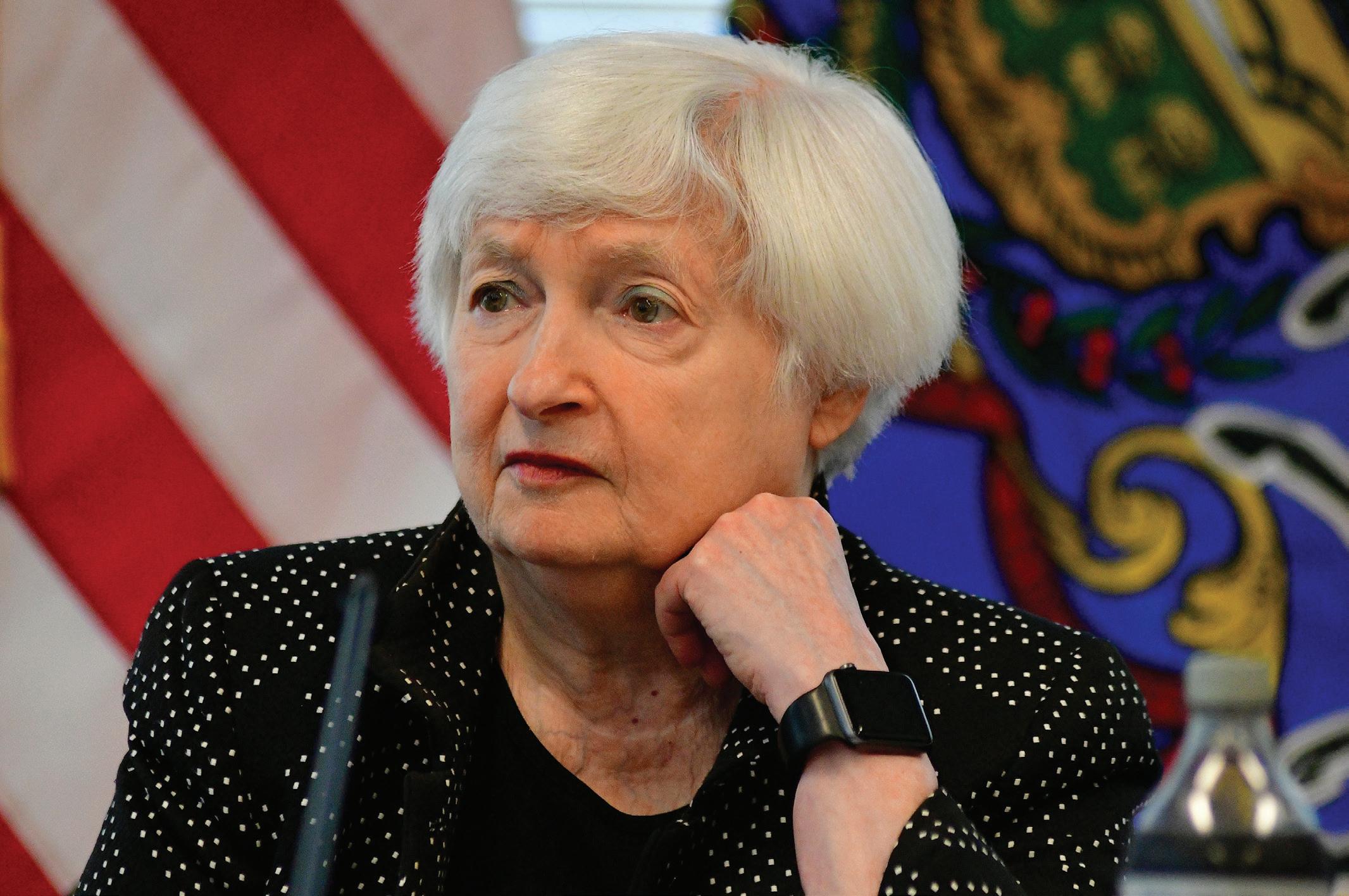
military force has once again invaded a neighbour in Europe, and regional conflicts are escalating, increasing the risks to the entire world. Once more, protectionism and populism are growing. In addition, we are battling disruptive technologies like artificial intelligence (AI) and virtual currencies, as well as global megatrends like climate change and the demographic shift.”
The majority of economists concur that, just when the world needs to avoid it, it is breaking apart into Global Economic Fragmentation (GEF).
GEF is seen as a policy-driven reversal of global economic integration that makes it less likely for countries to work together to solve global crises, stops new ideas from spreading in emerging markets, and risks sending money to countries with low incomes. In other words, by concentrating on ourselves, we are regressing.
The IMF, which is facing the possibility of becoming obsolete, explains that "in our increasingly fragmented world, nations have focused on reshoring essential goods and supply chains, including minerals crucial for green technologies, semiconductors, and military hardware due to concerns over national security and geopolitical motives."
Higher import prices, divided markets, limited access to labour and technology, decreased productivity, and a decline in living standards are the direct consequences, according to the IMF.
Bretton Woods had a crucial role in saving a globe ravaged by conflicts, poor leadership, and geopolitical uncertainty.
Tariffs, subsidies, currency wars, protectionism, industrial policies, and penalties are the causes of this fragmentation. Together, they are suppressing the international trade that may help turn things around. In summary, nations are choosing their own paths and taking opposing positions. This generally undermines Bretton Woods' primary goal of global financial stability.
Many nations are therefore at risk of experiencing a decline in their wealth. According to recent studies, developing markets and mature economies may suffer long-term losses of up to 4% of GDP. The repercussions? Food insecurity, social unrest, and debt problems, with the most vulnerable countries suffering the most.
A new IMF report estimates that the spread of GEF might result in a long-term drop in global economic production of up to 7%. That would come at a disastrous cost, estimated at over $7.4 trillion.
Although the phrase is frequently used, economists are certain that we are at a crossroads once again and are not even close to reaching a consensus on a Bretton Woods-style solution.
“We can choose to pursue a path of instability and conflict in the future. Or we can decide on the route of collaboration and mutual gain," Georgieva said.
However, is it feasible to reform the BWIs? The
BRETTON WOODS WORLD BANK
IMF and the World Bank are facing "existential challenges," according to macroeconomist Amin MohseniCheraghlou of American University in Washington, DC, who is also the head of the Atlantic Council's Bretton Woods 2.0 Project.
He provides a long list of examples to support his claims, including the rise of new competitors, revolutionary new technologies like artificial intelligence, and two decades of social and economic upheavals like the Great Financial Crisis, the destruction caused by COVID, and the severe issues brought on by climate change, especially in Sub-Saharan Africa. Furthermore, as non-Western economists frequently note, the GFC and climate change are two of these ills that originated in the West.
Mohseni-Cheraghlou asserts that a significant problem in BWIs is the concentration of power in the wrong hands. In other words, at a time when "economies that are not part of the high-income club are playing an increasingly large role in global trade and finance," the leadership is firmly rooted in the US, Group of Seven (G7), and European Union (EU).
The United States and the European Union hold almost 40% of the votes, even though "their relative prominence in the global economy has eroded." Chinese scholars concur, pointing out that Beijing has been denied a position in the BWIs that, in their opinion, is appropriate given its undeniable economic power.
Professor Qin Yaqing, a political scientist at Shandong University, is adamant that a global governance structure that is "multi-level, multi-
World Bank Group financing disbursements to partner countries from 2019 to 2023, by agency (In Million US Dollars)
Recipient-Executed Disbursing Account
Source: Statista
issue, and multi-organisational" must take the place of what he refers to as "US hegemony" over these institutions. In fact, he shares Beijing's belief that economic fragmentation is best for China.
It would enable China to "choose allies to achieve various objectives and operate nimbly across regions, issues, and organisations."
He contends that the disintegration of global governing organisations would ultimately contribute to the collapse of the former hegemonic system.
The majority of Western nations, along with several Asian ones, are undoubtedly concerned about China assuming a more aggressive leadership role in a post-Bretton world. They're halfway there already. China's Belt and Road Initiative (BRI) has drawn other nations into Beijing's web, as noted by American political scientists.
As could be predicted, two of the 24 United Nations members that voted not to denounce Russia's invasion of Ukraine were North Korea and Russia, while the other 22 are all Belt and Road beneficiaries.
The fact that 49 out of the 58 countries that did not cast ballots are also involved in the Belt and Road is maybe more indicative of China's own predominance among the more disgruntled countries. We have the option of going down the route of instability and conflict. Or we might decide to follow the route of mutual prosperity and cooperation.
Since their own coffers are far from deep enough, the IMF and World Bank now have to deal with a far more complicated world of international financing.
According to Yellen, "We have been working in billions so far, and experts put the funding needs in the trillions."
Positively, there are many new lenders available, including sovereign wealth funds, pension funds, regional multilateral development banks, and state-led development finance organisations. For example, there were more than 40 multilateral development banks and financial institutions at the time of the previous count, but there are now at least 50 solely national development banks. Additionally, a total of 130 sovereign

wealth funds are investing $12 trillion. While private pension funds have $42 trillion in assets in their treasuries, public pension funds have $24 trillion worldwide.
Furthermore, the number and financial clout of multinational firms has skyrocketed in the past eight decades.
They "command economic and technological might larger than many countries," according to Mohseni-Cheraghlou.
Multinational corporations account for a quarter of all jobs worldwide and nearly one-third of the global GDP, based on solid data. In fact, Walmart alone generated more income in 2023 than the GDP of over 170 countries.
To sum up, Bretton Woods was built for a different time period and urgently has to be updated to meet the demands of this new, far more complicated one. The Nixon
administration's 1971 removal of the gold standard, a significant disruption to the system, exemplifies how the institutions have adeptly navigated past challenges.
Despite the challenges posed by "intractable geopolitical tensions," the Bretton Woods table presents numerous benefits. Some of these, according to economists, include an unjust global tax system, a role in responding to crises like COVID (Yellen thinks the GFC response was "too timid and short-lived"), the quick mobilisation of capital to aid developing nations, and World Trade Organisation reform (China prefers regional trading blocs that allow it to get around WTO regulations). All things considered; this massive package is poised to challenge the foundations of Bretton Woods.
While the Bretton Woods institutions were pivotal in rebuilding
the global economy after WWII, their current structure and mechanisms appear outdated in addressing the complexities of today’s interconnected and fragmented world.
The rise of new economic powers, shifting geopolitical dynamics, and evolving global challenges require a radical overhaul of these institutions to ensure they remain effective. This is no small task, but the alternative—a more fragmented world without coordinated economic governance—could be far more destabilising. As the global landscape continues to evolve, the question remains whether the BWIs can adapt in time or if we will see the rise of new structures altogether.


While Eurozone banks have demonstrated resilience, doubts over their long-term profitability persist
IF CORRESPONDENT
Many of the largest banks in the Eurozone exceeded second-quarter earnings forecasts, despite worries about a more challenging outlook. Although their shares were limited, Reuters claims they profited from high interest rates and substantial investment banking activity.
According to Chris Burt, Director of the Risk Coalition Research Company, "where the market suspects the organisation is taking more risk than might be appropriate," shares may be lower than expected due to financial results and company performance.
"Imagine the Titanic moving at full speed across the Atlantic, making fantastic progress," he continues.
While European banking shares increased by 20% between January and July 2024, hitting nearly nine-year highs, "the STOXX Europe 600 Banks index was down 0.5% after a raft of bank earnings fed into analyst and investor concerns about the sustainability of the sector's profit growth. Eurozone banks see investment banking boost but outlook stalls shares," according to Mathieu Rosemain, Tom Sims, and Valentina Za's article.
A legal provision related to Deutsche Bank's failing Postbank unit contributed to the company's quarterly loss and 7% stock decline. The company also scrapped plans for a repurchase and increased bad loan loss charges. Although BNP Paribas anticipates exceeding its €11.2 billion net profit goal, an 11% decline in net interest income (NII) has raised worries in its retail division.
Additionally, Moody's Ratings thinks that UniCredit and Santander's NII have essentially peaked. As a result, risk charges will go up, even though growing profits have improved investor mood. Despite this, lenders have traded below their tangible book value, which raises questions about whether their profitability can last.
Despite this, the investment banking businesses of BNPP and Deutsche helped to diversify revenue streams in recent quarters by offsetting any shortfalls.
"At BNPP, revenue from equities trading and prime brokerage services jumped 58%," added Rosemain, Sims, and Za.
According to Olivier Panis, Associate Managing Director of Financial Institutions Group at Moody's Ratings, the outlook for Eurozone bank earnings remained rather stable. In 2023, the banks in the zone increased their net interest margins (NIMs).
"We expected profitability to stabilise in countries where variable-rate lending predominates," he said.
In the first half of 2024, HSBC and other Italian and Nordic banks did better than their counterparts. In 2025, Moody's Ratings predicts that bank profitability in the Eurozone will "remain strong" notwithstanding a drop.
As per Panis, Moody's Ratings believes most profit margins have peaked as policy
rates began to decline this year. However, the move from current accounts to more costly term accounts will slow down.
After two years of low lending activity, Panis continues, "Stable economic growth and inflation near central bank targets will offer the opportunity for stronger lending volumes while also supporting asset quality and risk charges."
However, he believes that operating costs will continue to rise. Higher compensation costs and technology are to blame for this. As a result of higher interest rates in nations like Spain, Portugal, and Italy, Moody's Ratings believes that there may be some divergent profitability trends among banking systems with a larger percentage of assets at variable rates.
According to Fitch Ratings, the biggest banks in Europe are expected to be profitable in 2024, matching the high levels of 2023. Fitch's September 2024 "Large European Banks Quarterly Credit Tracker" indicates that most of the 20 major banks experienced strong results in the first half of the year.
Due to their "better than expected earnings," it raised its full-year projections for a few banks. For instance, according to a press release, HSBC and other Italian and Nordic banks did better than their counterparts in the first half of 2024.
They were expected to continue performing at a high level from July to December. French banks, on the other hand, are falling behind their counterparts and are only predicted to see modest increases in profitability.
According to Z/Yen Senior Research Partner Hugh Morris, the outlook is generally favourable. He claimed that the Eurozone's growth rate is likely between 3-4%, which should boost bank profits throughout the banking industry because mortgages account for half of bank lending in the Eurozone, and demand for

them has been generally weak over the past few years.
He clarifies that the European Central Bank (ECB) "believes the banks will be able to improve with a forecast of global GDP growth of 3.4% for the next two years."
ECB believes that the Eurozone is expected to closely align with this forecast. One of the driving factors behind this is the anticipated long-term increase in mortgages, in contrast to their previous period of stagnant growth in the region.
Morris finds the banks' net interest incomes (NIIs) among the most intriguing aspects. They are crucial to the mediumterm financial gains of banks. He claims that cost management has been a major driver of BNP Paribas and that it is one of the factors that drive short-term development.
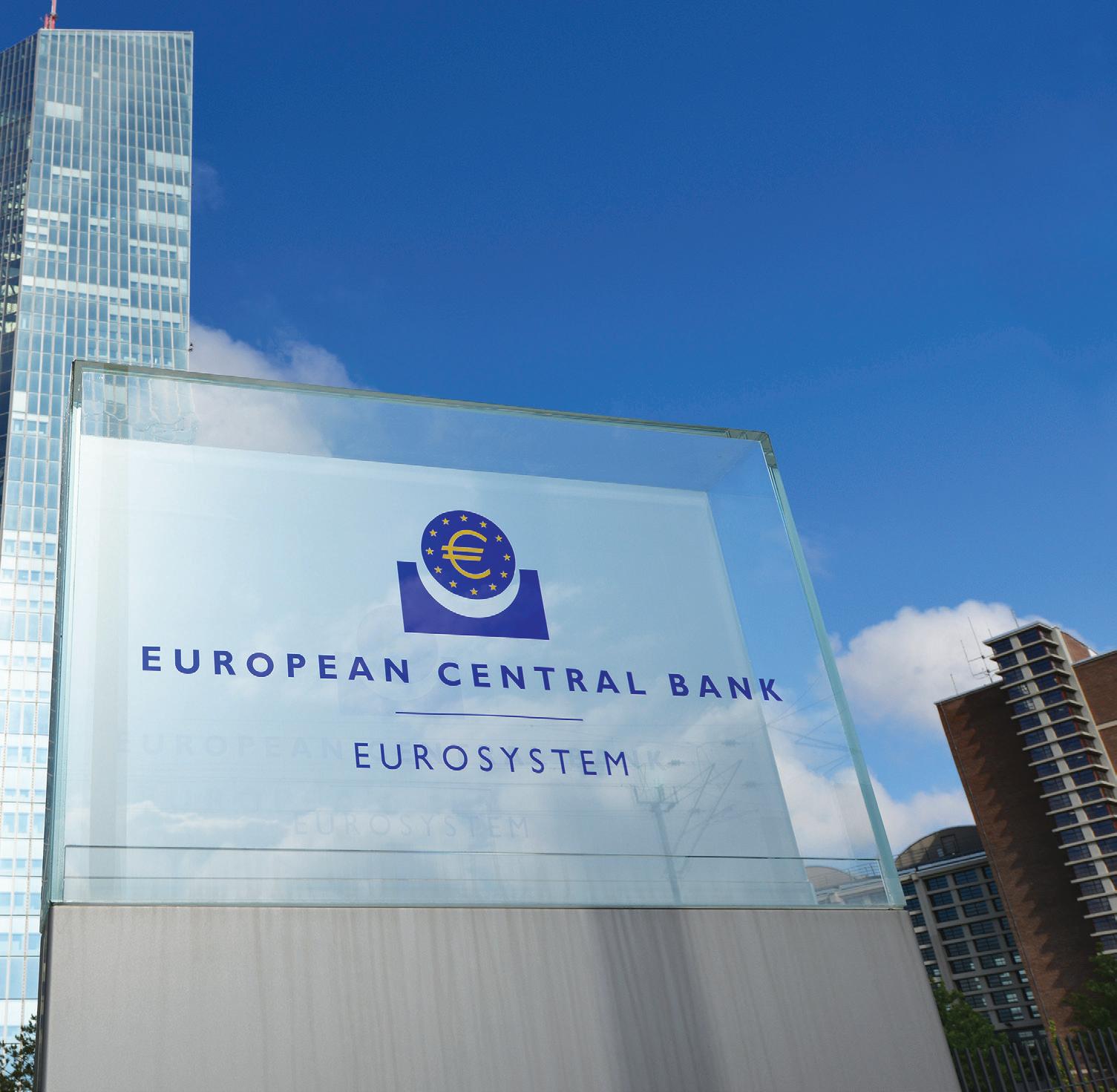
He underscores that while other criteria may fluctuate, NII remains the benchmark. For instance, cost control helped BNP achieve record profits, Morris continues. During a 40-50-year cycle, banks manage costs when they have to and don't when they don't.
The market examines NII because it has doubts about BNP's ability to maintain rigorous cost control. That is the crux of the problem. For what reason does the market have doubts about BNP? A significant portion of the solution is NII.
"A full-scale conflict in the Middle East is another possibility. The entire world will get sick if someone sneezes in that region. More than Ukraine is to blame for the rise in the price of Brent crude oil. These kinds of price shocks will impact bank lending and investment decisions. Although no one can predict what will occur, these are the main contributing elements. Morris also believes that the Eurozone is
growing slowly and that banks' expansion would be constrained by the West's latent productivity," Morris added.
It is possible that certain banks were undervalued and are not receiving the full reflection of profitability, which is why
they have been held back. Morris thinks that worries about NII and the long-term viability of headline profits may be to blame.
He said, "A lot depends on how each bank is made up, and there is cyclical falling in love and out of love with investment banking as a way to kick start growth."
Deutsche Bank incurred significant losses as a result of this mistake. Twenty years ago, Deutsche Bank aimed to establish itself as a global investment bank to rival the American market, but within five to ten years, everything crumbled. Despite having fewer assets than Santander, it is the 22nd largest bank globally. In terms of assets, it is only somewhat larger than the Toronto Dominion Bank.
The NII is a significant measure of medium-term performance, and stock markets are attempting to price in the value of future performance. If they observe that the NII's performance deviates from short-term gains, they will pay closer attention to that.
Interest rate issues have hindered certain banks, according to Panis. The sustainability of banks' profit growth may be affected, he believes, as the advantages of higher rates to their net interest margins have begun to wane.

Despite rate reduction by central banks, he predicts that borrowing costs will continue to be higher than they were before 2022. This will have an impact on borrowers' capacity to refinance and repay debts.
The increased cost of living and the fact that asset values in Europe have not changed significantly since 2022 only make the situation worse.
"As a result of the monetary tightening, the cost of funding has materially increased, with the end of targeted longerterm refinance operations (TLTROs) and a material shift in the deposit mix toward more expensive term deposits," he continues, adding that he believes this could affect asset quality and moderate lending volumes.
Even while this change may have stabilised, the deposit mix hasn't changed since 2022, and central banks have started lowering interest rates once more.
The revenue and expenses from the stock market compound these difficulties.
According to him, capital markets income helps sustain revenue, but
inflation in salaries and one-time expenses are driving up costs, which may hurt the long-term viability of profit growth.
He agrees with Morris that "geoeconomic fragmentation, which could increase volatility, impact banks’ operating environments, their asset risk, and profitability," has several sources of uncertainty. The turmoil in the Middle East and the war in Ukraine are two prime examples of this.
However, Morris believes that NII is primarily responsible for the worries regarding the durability of profit increases.
Before adding that the market has witnessed the emphasis on cost management and the interest in erratic industries, like investment banking, come and go, he states, "It is the breadand-butter business, and it is not looking so rosy."
The biggest banks in Europe are probably going to be profitable in 2024, matching the high 2023 levels.
Despite the market's attempt to

incorporate its likely performance into the current stock price, NII remains a persistent presence. Since the share price ought to reflect the present value of anticipated medium-term profit streams, Morris views it as Economics 101.
He believes that this indicates that "the markets' perception of forward value will outweigh one set of half-year results."
He doesn't know Unicredit well, but he thinks it's an unusual strategy that the CEO, Andrea Orcel, decided to give back almost all of the company's profits to shareholders in the form of dividends and buybacks.
Morris further says it is unclear whether the choice to purchase a digital bank in Belgium resulted in a decline in quarterly revenues, especially with regard to the latter, and whether it caused a 3% decline in shares.
Even if purchasing a digital bank costs money up front, Unicredit may benefit in the long run. At the same time, it will not become distinctly apparent for a considerable amount of time.
"This uncertainty would cause its shares to decline, and although the markets appreciate innovation, they are leery of money pits and white elephants," Morris noted.
According to Panis, increased market volatility is driving activity for investment banking, and client transactions are increasing capital markets revenue. He claims that this will help revenue growth in 2024. This is especially true for banks that "may suffer from low lending activity in commercial banking, as is the case for French banks, for example."
Nevertheless, he notes that the growth of the capital markets division "drove a 6% rise in adjusted revenue to $65 billion for European global investment banks in Q2 2024, with a significant boost from equity and investment banking income."
Then there are the fees associated with underwriting and advising on debt issuances, equity, and M&A transactions.

According to him, each of them adds to the total earnings.
"When a deal is there to be done, the fees and margins are probably better than they have been," Morris adds, even though there are fewer opportunities available.
Leverage against the cost base is necessary, and he discovers that if three individuals are needed to complete a $50 million deal, it might take all of them to complete a $500 million contract. He asserts that while this approach is advantageous for finding deals, it may leave you with an uncovered cost base when market conditions change. This indicates that the cost base stays essentially fixed. Growing economies of scale tend to make profitability highly volume-dependent.
However, diversification of capital markets activities in Europe has benefited investment banking, in part because of the COVID-19 pandemic, which caused several banks to suffer considerable losses. Panis pointed out that certain banks also decided to lower their risk appetite restrictions for specific
equity derivatives with exotic structures. Banks have also developed more balanced worldwide market divisions with a more diverse product mix as a result of geopolitical crises, such as the Russia-Ukraine war, which generated price instability.
"This diversification is rather creditpositive when implemented successfully because it exposes less of the overall business model of those banks to market turbulence and makes capital market revenues relatively less volatile," he says, adding that not all European banks have equal access to the depth of the US capital market.
Nonetheless, Morris holds the belief that certain banks are concealing issues and should return to their fundamental role as a value store. He believes that banking should be a boring, mediummargin industry.
However, he believes that balance sheets are very challenging to correctly understand since "human ingenuity has added multiple layers of risk and complexity to that, to the point that banks’ report and account. This leads to a wobble and a misconception of share value.”
According to author and banking futurist Brett King, a conceptual shift is necessary to align investments with broader social initiatives and evolving value creation. This requires a re-evaluation of how performance is assessed.
He argues that, despite the profitability of investment banking, it is not appropriate for the modern world. He believes that investment banks, along with banks in general, must adopt a fundamentally new way of thinking to continue thriving. To achieve this, they need to develop more diverse revenue sources that align with contemporary value systems.
High interest rates and strong investment banking revenues have driven banks’ profitability, but market scepticism persists, reflected in restrained stock performances. Analysts attribute this hesitation to factors such as declining net interest income (NII), rising operational costs, and geopolitical uncertainties.
Geopolitical tensions, inflation, and fluctuating deposit mixes further complicate the outlook. While stable economic growth and improved lending volumes offer hope, rising operating costs and risk charges may offset these gains. The banking sector's ability to navigate these challenges will depend on strategic cost management and adaptability to evolving financial conditions.
Ultimately, while Eurozone banks have demonstrated resilience, doubts over their long-term profitability persist. The market remains cautious, weighing short-term earnings against the broader economic landscape. As interest rates shift and global uncertainties loom, the banking sector must strike a balance between growth and risk management to sustain investor confidence and maintain profitability in an increasingly complex financial environment. FEATURE BANKS
BANKING AND FINANCE
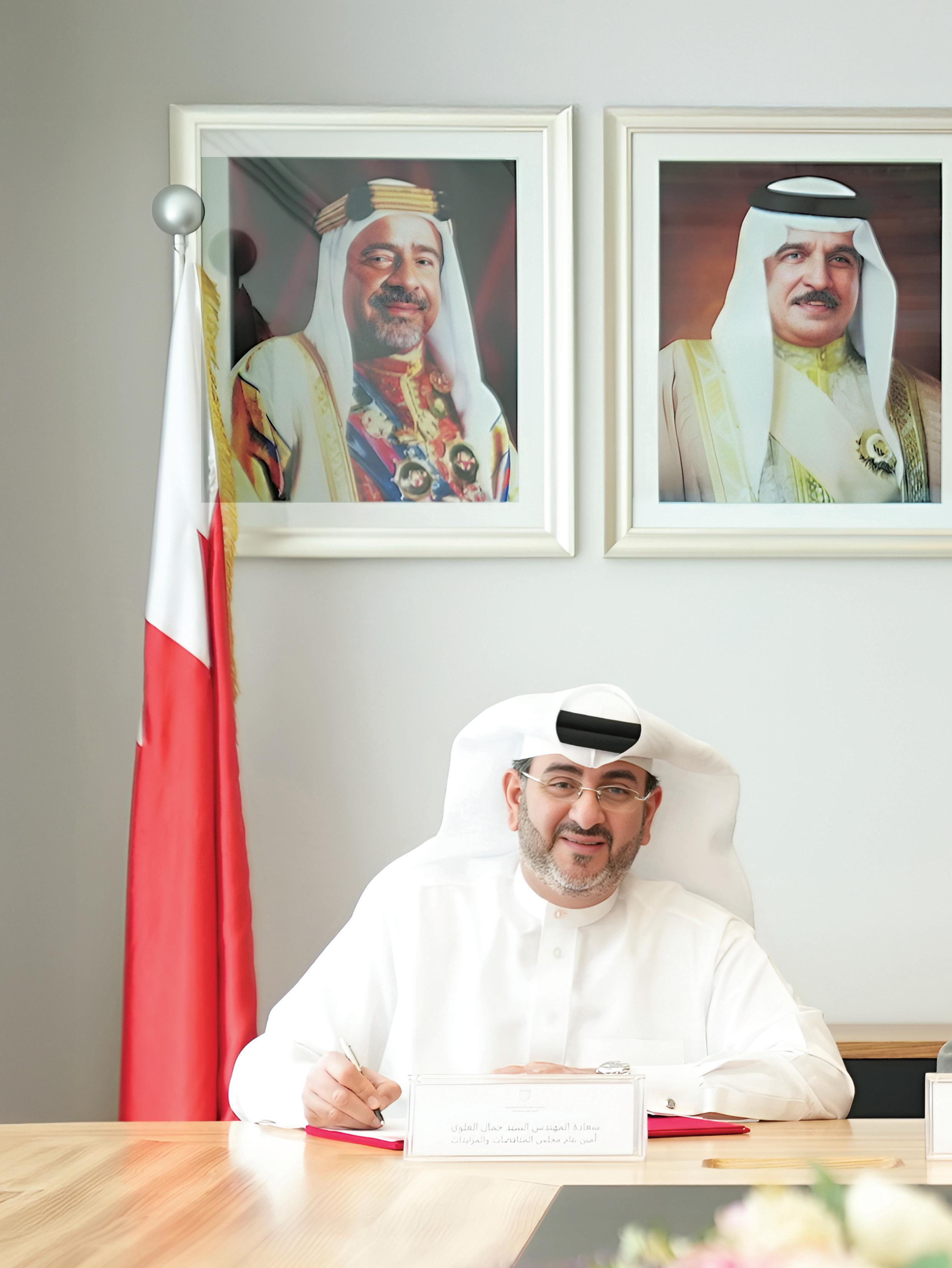

IF CORRESPONDENT
Established in 1992 to catalyse Bahrain’s economic advancement, the Bahrain Development Bank (BDB) has long served as a cornerstone of the Kingdom’s financial ecosystem. From the outset, BDB was established to advance sustainable development across Bahrain by offering critical financing support to the country’s Small and Medium-Sized Enterprises (SMEs).
Today, BDB’s role as a trusted partner in Bahrain’s financial sector is further accentuated by its commitment to innovation, strategic investments, and economic diversification.

BDB is emerging as a guiding force in Bahrain's SME revolution, led by Group CEO Dalal Al Qais
What began as a specialist institution in 1992 has evolved into Bahrain’s primary hub for SME development, one that is actively working to build a stronger entrepreneurial ecosystem in the Kingdom.
Aligned with "Bahrain Economic Vision 2030," BDB has adopted a dynamic strategy to stimulate business activity and support the sustained growth of the vital SME sector.
Bahrain's SME Development Board wants to establish the country as a leading hub for startups and emerging businesses by formulating promising developmental strategies that will increase the contribution of these enterprises to the national GDP, boost exports, and create quality employment opportunities for the national workforce.
This vision aligns with Bahrain's Economic Recovery Plan, which includes 43 initiatives focused on SME development. The plan is a collaborative effort involving the Economic Development Board (EDB), the Labour Fund (Tamkeen), the Bahrain
Development Bank (BDB), the Ministry of Youth Affairs, and the Tender Board. These stakeholders are working together to create a supportive infrastructure for SMEs, recognising their pivotal role in cultivating new industries.
Currently, SMEs constitute approximately 93% of Bahrain's commercial establishments. This significant presence underscores the importance of targeted initiatives to support and enhance the sector's contribution to the national economy. BDB plays an active role in fulfilling this strategy by providing SMEs with essential growth capital.
With the vision of becoming the regional leader in digital solutions and financial services for SMEs, BDB wants to enable businesses to grow locally and internationally by facilitating access to finance and export markets.
Over the years, BDB has transformed from being a traditional bank into an agile, innovationdriven institution deeply committed to supporting Bahrain’s growing economic landscape. Established during the early days of the Kingdom’s modern economic growth journey, the bank has provided
critical financial support to enterprises at key milestones, reinforcing its position as a longstanding contributor to national progress.
Leading BDB's emergence as a guiding force in Bahrain's SME revolution is Dalal Al Qais, the bank's Group Chief Executive Officer.
A banking veteran with professional experience spanning over 20 years in the banking and financial industry, Dalal Al Qais possesses deep-rooted knowledge in areas such as retail, SME, digitisation, as well as risk across conventional, Islamic, and international banks.

She earlier served as Chief Retail Banking Officer for the region at Standard Chartered Bank, apart from donning the role of Chief Retail Banking and Wealth Management Officer at the Bahrain Islamic Bank (BisB).
Since assuming charge at BDB, Dalal Al Qais has steered the bank towards a new era of growth marked by innovation and inclusivity. Her leadership at BDB and dedication to the growth of Bahrain’s SME sector have been a game-changer for the organisation.
BDB’s role in supporting SMEs
BDB offers business loans with flexible terms and competitive interest rates that accommodate the varied needs of emerging enterprises.
"BDB plays a major role in driving Bahrain’s economic diversification. By channelling funding into innovative projects and supporting sectors beyond traditional industries, the bank contributes significantly to the nation’s Vision 2030 goals. Its proactive support for sectors such as technology, renewable energy, and modern manufacturing has enabled the Kingdom to reduce reliance on conventional industries while making way for a more dynamic and inclusive economy. Our strategic investments and forward-thinking initiatives have been integral to creating job opportunities, enhancing competitiveness, and ensuring long-term economic resilience," said Dalal Al Qais.
In April 2024, BDB entered into a ground-breaking partnership with Export Bahrain to introduce tailored export and supply chain financing solutions that offer competitive interest rates to support businesses in expanding into global markets. With a focus on facilitating international product and service exports, this initiative aligns seamlessly with the SME Development Board’s 2022-2026 Strategy, aiming to encourage a vibrant ecosystem of thriving businesses.
In November 2024, BDB, in partnership with a consortium of leading local and regional banks, launched the Kingdom’s first $265 million (BD100 million) Private Credit SME Growth Fund. The fund aims to accelerate economic development by providing critical financial support to SMEs.
The Central Bank of Bahrain (CBB) is offering incentives to participating banks, allowing their funded portions to count towards their share of SME lending with a risk-weighted average of 25%. The fund’s capital is pooled from key local and regional financial institutions, demonstrating a strong commitment to Bahrain’s SME sector. Managed by BDB with the support of Tamkeen, the fund was developed in collaboration with the Ministry of Industry and Commerce (MOIC), National Bank of Bahrain (NBB), Al Salam Bank, Bank of Bahrain and Kuwait (BBK), and Khaleeji Commercial Bank. It focuses on high-value sectors with significant export potential and job creation opportunities.
The fund has a 10-year structure, with a five-year
BDB offers a comprehensive range of financial products, services, and solutions, including business loans, advisory support, and diverse financing options tailored for entrepreneurs
deployment period dedicated to loan disbursements. Contributing to Bahrain’s sustainability goals, up to 10% of the fund will be allocated to support green economy initiatives.
Key products and services offered
BDB’s Investment Division supports its mission to accelerate the development of SMEs in the Kingdom. Targeting establishments that have the potential to grow locally and internationally, and have high commitment from both their owners and management, investments can be made at different levels of their business cycle.
Apart from heavily focusing on sectors like healthcare, manufacturing, food security, financial institutions, logistics, and technology, BDB has also shown keen interest in supporting companies that promote import substitution, export opportunities, job creation, value addition, and foreign investment.
"Our extensive experience across various industries stems from a deep understanding of the unique challenges and opportunities faced by SMEs in Bahrain. The Director nominated by the bank on the board of the investee companies supports and guides the firm to achieve its full potential and reach its goals. The Investment Division provides minority interest equity, which is typically up to 20% of the paid-up equity share capital, as a shareholder in private companies as a means of funding," BDB’s Group CEO added.
BDB offers a comprehensive range of financial products, services, and solutions, including business loans, advisory support, and diverse financing options tailored for entrepreneurs. Prominent among these offerings is Shariacompliant Finance, which offers business owners to secure a minimum amount of BHD 3,000 to finance specific assets like plant or machinery. The bank also provides working capital loans with comfortable repayment tenors and grace periods for sectors like manufacturing, ICT (information and communication technology), agribusiness,
private education, healthcare, tourism, trading, transportation, and other services.
BDB has also partnered with Labour Fund Tamkeen to introduce "BDB & Tamkeen Finance," a suite of soft financing programmes for MSMEs offered in accordance with Islamic Sharia principles. Through this collaboration, Tamkeen facilitates access to finance by subsidising a percentage of the loan profit for eligible applicants under applicable schemes.
Key offerings under this joint initiative include Start Your Business, which is designed to support new enterprises within their first three years of operation. This programme empowers earlystage businesses with financial solutions tailored to their growth requirements, aiming to foster entrepreneurship, productivity, and innovation. Go Digital is another initiative that encourages MSMEs to integrate relevant digital technologies into their operations, helping them advance their business models, increase efficiency, and improve agility. Business Growth is targeted at scaling existing enterprises by providing financial support for strategic objectives such as entering new markets, launching new products or services, franchising, expanding locally, or boosting exports. Lastly, Business Turnaround supports struggling enterprises by providing temporary access to financing, along with a structured recovery plan to help them stabilise operations and return to sustainable growth.
In addition to these programmes, BDB provides trade finance instruments to facilitate commercial activity. These include letters of credit (L/C), issued on behalf of importing clients to guarantee payments to exporters, and various types of Letters of Guarantee. These guarantees, such as Bid Bonds, Performance Bonds, and Advance Payment Guarantees, are commonly used in project-based transactions to support clients’ contractual obligations.
The bank also offers an overdraft facility for its client MSMEs, which essentially authorises them to overdraw their accounts up to an agreed limit. Such facilities are normally granted to meet working capital requirements arising from the customer’s operating cycle.
BDB’s role in financial inclusion
Financial inclusion is deeply embedded in BDB's mission to empower underserved and high-

potential business segments across the Kingdom. For over three decades, the bank has been a strategic enabler of business growth, a role it continues to play through its impactful initiatives and innovative financing solutions that directly address the sector’s evolving needs. BDB has become a transformative force for startups, women entrepreneurs, and rural businesses' access to finance.
In November 2023, BDB collaborated with The Supreme Council for Women, the BENEFIT Company (the Kingdom’s leading innovator in fintech and electronic financial transactions services) and Bahrain FinTech Bay to establish the Innovate for Bahrain Centre (I4B) at the Riyadat Centre in A'ali.
This pioneering initiative aims to drive comprehensive programmes that promote gender equality in the technology industry through multifaceted programmes that align with national strategies led by the Supreme Council for Women in partnership with the private sector. Operated by
Bahrain Fintech Bay and supported by Tamkeen, I4B is designed to equip women with the tools, resources, and networking needed to succeed in the digital economy.
As stated by Group CEO Dalal Al Qais: "We have launched purpose-driven initiatives such as the Riyadat scheme to empower female business owners, zero-interest loans to boost food security and sustainable development in the agriculture and fisheries sectors, and the SME fund to expand capital access for high-impact ventures. In collaboration with Tamkeen, we have also introduced co-financing programmes that extend tailored support to MSMEs across various sectors."
Believing in Bahraini women's ability to fuel the Kingdom’s economic growth and create a transformational impact, the Riyadat Scheme is helping these entrepreneurs scale their businesses with access to favourable Sharia-compliant financing and dedicated advisory services. The scheme supports both new and existing enterprises
BDB’s strategic goals for the future centre around expansion, new product introductions, and other priorities aligned with Bahrain’s broader economic vision
through two financing tracks, delivered in collaboration with Tamkeen’s “Start Your Business” and “Business Growth” programmes.
Innovation and technology in banking
BDB has continued to lead by example in digital transformation, consistently embracing innovative technologies to enhance operational efficiency, customer experience, and service accessibility.
Central to this transformation is tijara, BDB’s flagship digital banking platform. Built to meet the evolving needs of MSMEs, tijara provides real-time account information, transaction details, statement downloads, fund transfers within BDB and to external accounts, as well as international transfers via SWIFT, all in a secure and userfriendly environment.
BDB customers can use the Tijara platform to view account balances and account and transaction details, download statements, generate account reports, and transfer funds to their own accounts and other BDB (and non-BDB) accounts. Funds can
also be transferred to international bank accounts through SWIFT. With advanced security features such as two-factor authentication and password encryption, the platform offers peace of mind while delivering convenience at scale.
In October 2020, BDB took a major step forward by selecting the TCS BaNCS Global Banking Platform, developed by Tata Consultancy Services (TCS), a leading global IT services, consulting, and business solutions organisation, to modernise its core banking infrastructure. The decision was driven by a strategic goal to deliver personalised digital customer experiences and align with Bahrain’s national vision of cloud-based transformation.
Hosted on Amazon Web Services (AWS), the TCS BaNCS platform integrates cutting-edge technologies like APIs, artificial intelligence, and data analytics to support the rapid rollout of new products and services. This cloud-native solution not only enhances scalability, security and cost efficiency, but also enables BDB to tap into TCS’s fintech ecosystem to accelerate innovation and create contextual, value-driven interactions with customers.
In a further demonstration of its digital-first strategy, BDB entered a strategic partnership in February 2025 with Mazad, a leading online auction

platform. This collaboration enables the bank to conduct asset sales through live bidding, creating a more transparent, efficient and competitive process. By leveraging Mazad’s advanced digital capabilities, BDB is building a more accessible, fairer, and reliable bidding ecosystem for investors.
In June 2024, BDB won the “Excellence in Sustainable Environmental Development” Award at the GCC International CSR Awards. This achievement reiterated the bank’s ongoing commitment to environmental sustainability, its efforts to promote green initiatives, and its continued support for agricultural projects, including the Farmers Market in Hoorat A’ali, which serves as a key platform for local farmers to showcase their products and boost sales.
As part of its efforts to support food security and agricultural production in the Kingdom, BDB offers zero-interest financing solutions to farmers and fishers in partnership with the Ministry of Finance and National Economy. The product enables farmers to expand their businesses and allows local fishermen to purchase equipment with ease.
The bank has also shown longstanding support for the National Initiative for Agricultural Development (NIAD)’s Forever Green campaign over the past four years by contributing to tree planting efforts across various areas within the Kingdom. BDB’s diverse initiatives highlight its active role in contributing to the United Nations’ Sustainable Development Goals (SDGs), promoting economic growth, gender equality, supporting MSMEs, and enhancing education in Bahrain.
BDB’s support for individuals in the fishery and agriculture sectors includes offering interestfree loans for production development. As of December 2023, 2,729 individuals had received loans amounting to BD 22.7 million, illustrating the bank’s commitment to promoting sustainable agriculture.
In addition, BDB’s provision of education loans aligns with SDG 4 (Quality Education). The bank also supported 1,160 individuals with loans totalling BD 20.4 million as of December 2023, reflecting its dedication to enhancing educational opportunities and human development.
Partnerships, collaborations, and a promising future
BDB has continued to build strong partnerships with financial institutions, government agencies, and international bodies to enhance its service offerings and contribute meaningfully to Bahrain’s long-term economic vision.
Among the most impactful of these is BDB’s collaboration with the Labour Fund Tamkeen, which subsidises over 50% of the interest on eligible loans, significantly improving access to capital for MSMEs. The bank has also played a leading role in empowering female entrepreneurs through its partnership with the Supreme Council for Women, offering tailored business loans for women-led ventures.
BDB’s partnership with the Bahrain Tender Board is easing SME access to government tenders. Meanwhile, its collaboration with Export Bahrain empowers Bahraini SMEs to scale internationally by providing export support and financing mechanisms.
In November 2024, BDB signed a strategic agreement with Lumofy, an AI-powered talent management platform, to enhance employee upskilling practices at the bank. This collaboration marks a significant step forward in BDB’s ongoing efforts to build internal capabilities that support longterm operational excellence and sustained success.
BDB’s strategic goals for the future centre around expansion, new product introductions, and other priorities aligned with Bahrain’s broader economic vision. Plans for the near to medium term include broadening the spectrum of financial products and developing innovative digital platforms to simplify banking services. The bank is also improving its advisory and funding programmes to strengthen Bahrain's entrepreneurial landscape. At the same time, it continues to invest in state-of-the-art fintech innovations to improve operational efficiency and extend its competitive edge in an evolving market landscape.
As it looks to the future, BDB will continually seek new alliances with both local and international stakeholders to drive collaborative efforts in innovation, sustainability, and inclusive economic progress across the Kingdom.


Green banking, has transformed itself from a niche concept to a central strategy for financial institutions
IF CORRESPONDENT
Green Banks are known as mission-driven institutions that use innovative financing to accelerate the transition to clean energy and fight climate change. These institutions are supposed to care more about deploying clean energy than maximising profit. It actively develops a pipeline of clean projects and seeks out opportunities in the market.
All Green Banks have the mission to address climate change, though many also have additional objectives, such as improving resiliency or addressing underserved markets.
With the mission of combating the impacts of climate change becoming the new normal in the 21st-century socio-economic setup, the financial sector has become a pivotal force in driving sustainability. Banks, too, are aligning their lending, investment strategies, and product offerings with environmental, social, and governance (ESG) objectives.
While ESG has become integral to achieving global net-zero carbon emissions, green banking, on the other hand, has transformed itself from a niche concept to a central strategy for financial institutions aiming to support the green transition and safeguard the planet.
Becoming "Green Banks" has become the policy imperative for 21st-century financial institutions. Take HSBC, for example, which has made a bold commitment to align its portfolio with the Paris Agreement’s goal of netzero financed emissions by 2050. The London-headquartered bank in 2024 made significant strides on the ESG front.
Prominent among them was the collaboration with Google Cloud, as part of which new initiatives were launched to support the burgeoning climate tech sector. This partnership, particularly through the Google Cloud ReadySustainability (GCRS) programme, will offer tailored financial products and services in the United States and the United Kingdom, designed to propel the growth of innovative startups.
In 2024, HSBC also partnered with Dun & Bradstreet (D&B), a global provider of business decision data and analytics, to support Hong Kong businesses in enhancing their resilience and competitive edge through environmental, social, and governance (ESG) reporting.
Last but not least, HSBC’s Hong Kong division partnered with Cathay Pacific and biofuels platform EcoCeres started a new initiative aimed at helping to decarbonise air travel by supporting the use of sustainable aviation fuel (SAF) in the Chinese administrative region.
Source: Wiley Online Library
HSBC will now purchase 3,400 tonnes of SAF produced by EcoCeres for use by Cathay Pacific on flights departing from Hong Kong International Airport. The transaction marks HSBC’s largest SAF purchase to date, and the initiative will support Cathay Pacific’s goal to scale the use of SAF to 10% of its fuel consumption by 2030.
In 2024, German giant Deutsche Bank announced a series of finance and due diligence commitments aimed at strengthening its ocean protection policies, including the implementation of a freeze on direct financing of deep-sea mining projects.
The new announcement forms were part of Deutsche Bank's commitment to the BackBlue initiative. Backed by the United Nations (UN) and led by the blue economy-focused organisation the Ocean Risk and Resilience Action Alliance (ORRAA), the Blue Finance Commitment
(BackBlue) initiative was launched in 2021 to incorporate ocean considerations in finance and insurance decisions.
In Asia, too, ESG is rapidly capturing the attention of financial institutions and governments. Across the continent, a number of new regulations were introduced recently, increasing scrutiny of corporate operations. China announced in 2024 that listed companies would be required to publish sustainability reports by 2026. A similar rule for reporting is already in place for companies on the Hong Kong Stock Exchange.
Singapore, too, took steps with the creation of the Green Finance Industry Taskforce (GFIT). The GFIT is divided into workstreams, with focuses on developing a taxonomy with clear sustainability objectives, improving environmental risk management, and supporting green financing solutions.
In response, banks operating in Asia are now becoming innovative in their way of supporting their clients in their environmental, social, and governance goals, tying the products and services they offer to environmental targets. Standard Chartered launched an ESGlinked cash account for their corporate banking clients, tying the interest rates and fee pricing to the company’s performance.
According to Elizabeth Girling, head of sustainable finance products and frameworks at Standard Chartered, the accounts will incentivise clients at the organisational level to work sustainability into their treasury management arrangements.
As companies began to focus on their Scope 3 emissions (which track the indirect carbon emissions throughout the length of a company’s value chain), banks are developing products to support their

decarbonisation goals.
Uzayr Jeenah, partner at McKinsey, noted that DBS has supported fashion retailer H&M in developing financing tools to assist with the decarbonisation of their supply chains. H&M’s suppliers are now able to access financing via DBS and technical support from sustainability consultant Guidehouse to reduce their climate impact through initiatives like upgrades to factories.
Jeenah termed these initiatives, which are focused on value creation, as ones that go beyond the trend of “green lending for the sake of green lending" and are driven by the corporate customer base, which has become increasingly demanding evidence of their net-zero progress.
The Banker reported that the "banks are being further assisted in gaining greater oversight of the companies across a value chain by the integration of datarich messaging systems, which increase transparency and accountability."
Jeenah also pointed to the move from MT standards to ISO 20022 standards used in transaction messaging, saying it will “unlock use cases," such as decarbonising the supply chain. Through these messages, greater detail is given on the recipient of funds, allowing for further traceability along a supply chain and across borders.
As per June 2024 research titled “Sustainability Reporting for Banks: The Climb Starts Here,” The London Institute of Banking & Finance (LIBF) noted that sustainability is becoming a key focus area in the financial sector of the MENA (Middle East and North Africa) region, driven by regulatory frameworks, market demand, and technological advancements.
Initiatives like the "Unified ESG Metrics for GCC Listed Companies" and national sustainability agendas
in the UAE and Saudi Arabia are setting standards for transparency and comparability.
"Consumer and investor pressure for sustainable financial products is pushing banks to integrate ESG principles into their strategies. The rise of green bonds, sustainable loans, and FinTech solutions is further advancing the sector’s commitment to environmentally and socially beneficial projects. Moreover, partnerships with educational institutions like the London Institute of Banking & Finance (LIBF) are enhancing the knowledge and capacity of financial professionals in ESG practices," the study noted.
Financial institutions are strengthening corporate governance and ethical leadership to support sustainability goals. Leadership commitment and enhanced governance structures have become crucial for driving the sustainability agenda. Regional partnerships and

the adoption of global benchmarks are promoting best practices and improving local sustainability efforts.
Additionally, there is a growing emphasis on comprehensive and transparent ESG reporting, financial inclusion, and social impact investments. By diversifying investment portfolios towards sustainable assets and regularly assessing their environmental and social impacts, the financial sector in MENA aims to achieve long-term risk management and positive social outcomes.
ESG has become even more important in MENA, considering it is a region vulnerable to environmental challenges. According to a report by the World Economic Forum, temperatures here rise twice as fast as the global average.
This harsh reality calls for an urgent pivot to sustainable practices, which extend well into the finance space. In early 2023, PwC identified green financing as a key economic theme to watch. Green finance focuses on raising funds to tackle environmental problems, such as reducing emissions, climate change, and restoring biodiversity. It is part of sustainable finance, a broader approach that involves considering ESG factors in investment decisions.
In the MENA model of green finance, we have green bonds, which, issued by governments or private companies, are a kind of loan created to fund projects that help the environment. Green sukuk is similar to a green bond, while remaining compliant with Islamic law. According to OECD (The Organisation for Economic Co-operation and Development) data from 2020, the region has consistently received between $2 and $3 billion each year in climate finance since 2012.
"While the inflow of climate finance has been steady, it falls short of meeting the region’s demands, prompting several
MENA countries to innovate and expand their green finance mechanisms. After all, green finance offers vital opportunities for the region, especially those belonging to the Gulf Cooperation Council (GCC).
An analysis by Strategy& revealed that by 2030, green investments in six major GCC industries could significantly boost the economy. These investments could contribute up to $2 trillion to the cumulative GDP, generate over 1 million jobs, and attract foreign direct investment (FDI)," reported The Middle East Economy.
Closing the financial gap in MENA’s transition toward a more sustainable economy, governments in this part of the world have begun enacting laws and regulations driven by sustainability goals. Take the UAE, for example, where the Securities and Commodities Authority mandates that public joint-stock companies on the Abu Dhabi Exchange or Dubai Financial Markets issue an annual sustainability report. Such an initiative aims to boost investor confidence and
ensure companies disclose and manage important ESG factors effectively.
The year 2023 marked a significant surge in green social, sustainable, and sustainability-linked bonds (GSSB) issuances in the MENA region. Total sales reached a new high of $24 billion, equivalent to a 155% increase from the previous year. Leading the way were the UAE and Saudi Arabia. Together, these two powerhouses accounted for 77% of the total issuances in MENA. Egypt also made a mark with the Green Panda Bond, the first from the region to be issued in China. It raised RMB 3.5 billion to fund public transit projects and received a partial guarantee from the Asian Infrastructure Investment Bank (AIIB).
The same year also turned out to be an important one for green sukuk in the region, as Islamic issuances made up more than a quarter of the total regional output for the first time. MENA also dominated the global market in green sukuk, achieving sales of around $6.5 billion.
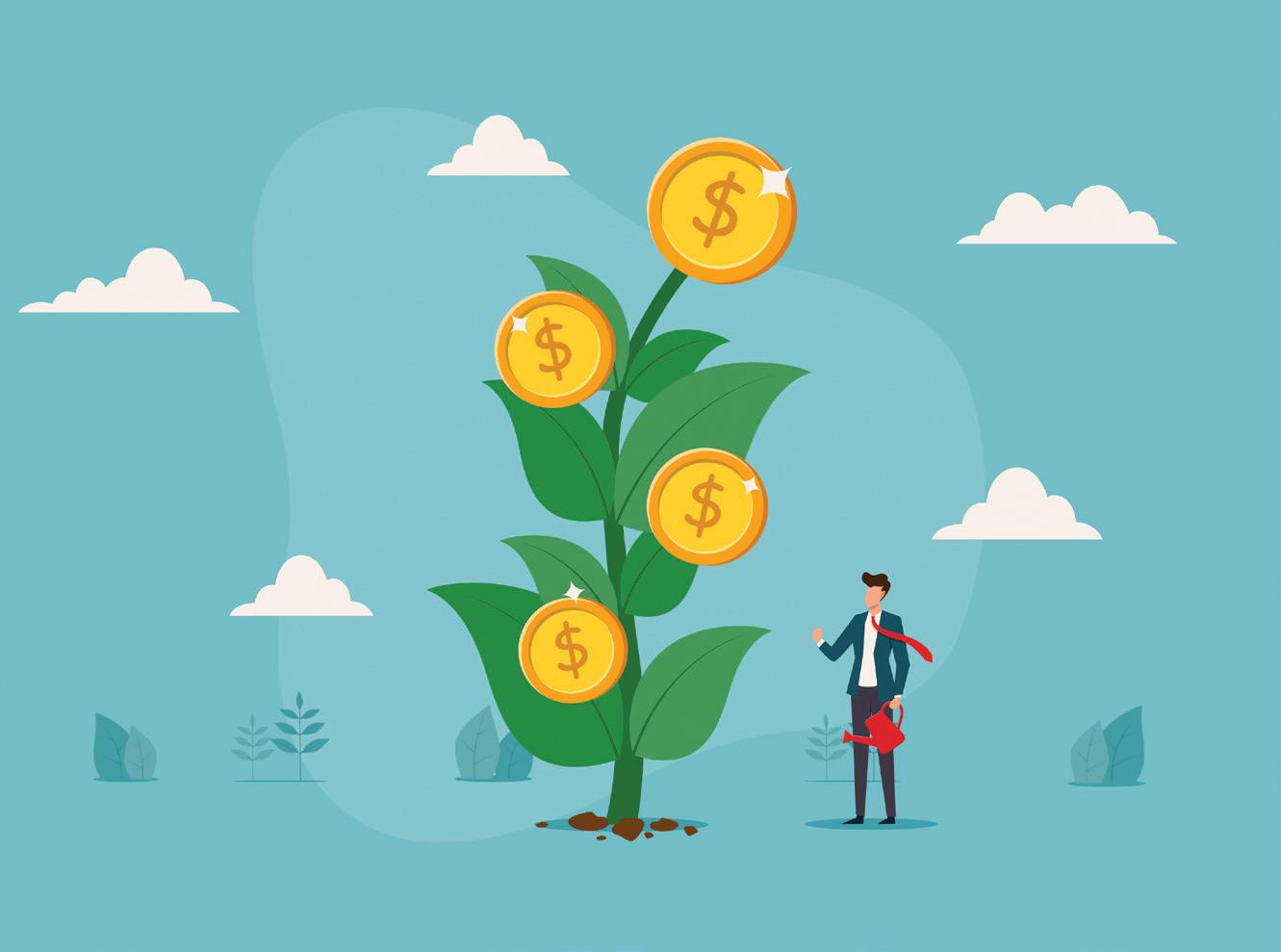
In 2024, MENA further solidified its position in the global green finance market. While Oman introduced a sustainable finance framework, this allowed for the issuance of various financial instruments, including green bonds and sukuk, to fund renewable energy projects.
The Saudi Ministry of Finance also unveiled its Green Financing Framework, a detailed plan supporting projects across clean transportation, renewable energy, and climate change adaptation. Fitch Ratings projected that ESG sukuk would exceed $50 billion globally within two years.
The end of Q1 2024 marked a significant milestone, with ESG sukuk reaching $40 billion, demonstrating a year-on-year growth of 60.3%. Saudi Arabia and the UAE further consolidated their positions at the forefront of this growth, holding the largest shares of Fitch-rated ESG sukuk — 45% and 33%, respectively.
Businesses are now realising that integrating sustainability into core operations is not just about fulfilling social responsibility, but is also critical to long-term business viability. However, these commitments come with significant risks, particularly for banks with substantial exposure to high-emission sectors like energy and mining.
financing green transitions opens new growth avenues and positions them as leaders in the future of green finance.”
For banks, the green transition requires a fundamental rethinking of traditional business models, where profitability and sustainability are no longer mutually exclusive. Instead, they are interdependent. As demand grows for sustainable products and investments, financial institutions that successfully integrate ESG factors into their business strategies will outperform their competitors, both in terms of market share and profitability.
This shift, however, comes with its challenges. Banks must address risks associated with greenwashing and navigate complex regulatory frameworks, which pose significant obstacles in balancing profitability with sustainability commitments. To tackle this multifaceted landscape, financial institutions are creating new financial products, utilising innovative technologies, and investing in transparency and data verification to achieve their financial and sustainability objectives.
When it comes to developing and deploying green financial products, banks are employing strategies like green bonds, sustainability-linked loans (SLLs), and ESG-focused instruments, which are at the forefront of this financial innovation. These products enable banks to fund projects that support sustainability objectives while maintaining strong financial performance.
The global green bond market, for example, has seen exponential growth in recent years, reaching hundreds of billions of dollars in annual issuances.
He said, “Sustainability-linked loans and green bonds are essential in meeting the growing demand for sustainable investments. They offer performancebased financing that encourages companies to meet their ESG targets while maintaining financial viability.”
However, despite green financial products holding some potential, challenges remain. Banks must manage the reputational risks associated with accusations of greenwashing (companies falsely claiming to meet ESG standards) and navigate an evolving regulatory environment. Frameworks like the "EU Green Taxonomy" and the UK’s "Sustainability Disclosure Requirements" (SDR) demand that banks provide detailed ESG data and ensure that their products align with sustainable finance principles.
Banks now require robust systems for collecting and verifying ESG data. Without transparent and measurable outcomes, these financial institutions also risk losing credibility and investor confidence.
"Reducing exposure to carbonintensive industries can weigh on shortterm profitability, but financing the shift to a low-carbon economy presents enormous long-term opportunities," said Peter Panayi, Head of Global GoTo-Market at BuildingMinds, while explaining, “Banks are finding that while reducing exposure to carbon-intensive sectors may affect short-term profits,
Rajul Sood, Managing Director and Head of Banking at Acuity Knowledge Partners, highlighted the importance of data in this process, as he said, “Banks monitor green loans through impact reports and key metrics, such as renewable energy projects financed, energy efficiency improvements, and carbon emissions reductions. This data is essential for ensuring that investments are both financially sound and aligned with sustainability goals.”
The issue of greenwashing has become a significant concern for banks and their stakeholders. Greenwashing is a phenomenon where companies/financial institutions exaggerate or falsely claim their environmental credentials to attract capital. Regulatory bodies are tightening the rules around sustainable finance BANKING AND
Richard Bartlett, co-founder and CEO of GreenHearth, a fintech focused on financing renewable energy projects, shared his thoughts about the increasing importance of these products.

to ensure transparency and prevent misleading claims. The EU’s Green Taxonomy, for instance, now provides a clear framework for what constitutes a ‘green’ investment, making it more difficult for institutions to claim green credentials without substantiating them.
In the United Kingdom, the Sustainability Disclosure Requirements (SDR) aim to increase transparency around ESG reporting.
However, Bartlett notes that the UK lags behind the European Union in implementing comprehensive regulatory frameworks.
Fintech solutions like digital twin software are enabling banks to monitor the financial and environmental performance of green projects in real time, apart from helping these businesses provide stakeholders with clear, measurable outcomes, enhancing both transparency and accountability. The same technology is also helping banks streamline compliance with regulatory frameworks.
Automating the reporting process allows banks to efficiently meet regulatory requirements, thereby reducing the
risk of non-compliance and the penalties that may follow. The rapid growth of sustainable finance offers numerous opportunities for banks, especially in creating innovative financial products. Among the most promising options for banks aiming to support the green transition while remaining profitable are sustainability-linked loans and green bonds.
By availing of sustainability-linked loans, companies are receiving financial incentives to meet specific ESG targets, such as reducing carbon emissions or improving energy efficiency. If the company meets these targets, it benefits from lower interest rates, making the loan more affordable. This performance-based financing model has become increasingly popular as companies strive to align their operations with global sustainability goals.
Green bonds have become another powerful tool, allowing banks to raise capital for projects that have a positive environmental impact, such as renewable energy or sustainable infrastructure. The success of these products demonstrates the strong demand for ESG-aligned investments, delivering financial returns and contributing to a more sustainable future.
Stakeholders are increasingly demanding that banks not only talk about sustainability but also demonstrate genuine commitments to ESG principles through their actions.
Beyorch CEO Dre Villeroy, a wealth management firm specialising in ESG investments, emphasised the importance of authenticity in green finance.
He said, “You can talk about improving society or the environment, but unless you make a real difference, it’s just talk.”
Villeroy further highlighted that at Beyorch, investments are evaluated not only on their financial returns but also on their impact on society and the environment. This focus on authenticity shows that there is a broader shift in the financial industry, where ESG investments are increasingly judged by their real-world impact, rather than just their token financial performance. Banks that balance profitability with meaningful sustainability contributions will be well-positioned to thrive in the green finance landscape.

ANDRES
In corporate lending, the use of real-time financial analytics is vital
The lending environment in Germany for SMEs and corporates is at a turning point. On the one hand, interest rate cuts are set to make financing more accessible, providing businesses with much-needed relief after a period of rising borrowing costs. On the other hand, structural challenges remain, particularly in SME lending.
Credit demand among SMEs have been below average, and nearly 32% of SMEs reported stricter lending conditions from banks in late 2024. This tightening of credit standards reflects ongoing caution among lenders, who must balance risk management with the need to support business growth.
Despite these constraints, there is a path forward for lenders who can leverage digital transformation to meet the needs of SMEs and corporate borrowers more efficiently. With corporate lending in Germany expected to grow by 0.9% in 2025 (EY European Bank Lending Economic Forecast), institutions that streamline both loan origination and servicing will be best positioned to capture new lending opportunities.
Businesses today expect a seamless, data-driven loan origination process, whether small enterprises seeking working capital or large corporations securing financing for strategic investments. Yet many struggle with complex, slow, and often bureaucratic loan application processes. This friction is one reason why credit demand remains subdued; many businesses either encounter lengthy approval times or fail to meet stringent lending criteria.
To adapt to these conditions, financial institutions must simplify loan origination, ensure real-time integration of financial data and risk assessment tools, offer greater transparency in lending criteria, introduce workflow
automation to expedite approvals, and ensure flexibility in lending models.
One of the most significant shifts in business financing is the rise of embedded finance. For lenders, this shift presents an opportunity to reach SMEs and corporates more effectively.
By incorporating loan origination into existing workflows, financial institutions can secure a competitive advantage and provide a more seamless borrowing experience, thereby reducing the obstacles that often deter businesses from applying for credit. To facilitate this, lenders require flexible, automated origination solutions that can integrate with third-party platforms, ensuring real-time risk assessment and compliance.
By adopting technology-driven origination processes, lenders can improve financial access while managing risk more effectively—a vital factor, particularly as Germany’s corporate lending market moves towards modest growth.
Once a loan is issued, the effectiveness of its management determines both lender profitability and borrower success. Traditional loan servicing methods, which rely on manual processes, create inefficiencies that can result in mismanagement, delayed repayments, and borrower dissatisfaction.
With the right approach, lenders can automate account creation and payment workflows, implement predictive analytics for arrears management, improve borrowerlender communication, leverage data for strategic decisionmaking, manage syndicated loans, and handle multicurrency loan portfolios.

Many SMEs encounter barriers to accessing credit because they do not conform to traditional risk models. However, lenders are increasingly utilising alternative data, such as transaction histories, digital payment patterns, and supply chain activity, to create a more comprehensive view of creditworthiness.
By integrating alternative data into loan servicing and risk monitoring, financial institutions can identify potential risks earlier and offer tailored repayment solutions that enhance loan performance. This approach also aids lenders in expanding access to credit while maintaining robust risk controls.
In corporate lending, the use of real-time financial analytics is equally vital. Lenders are now integrating AI-driven analytics to monitor corporate performance in real time, ensuring they can detect early warning signs of financial distress. This is particularly pertinent for sectors experiencing volatility, where predictive analytics can assist lenders in managing exposure more effectively.
As lending conditions remain stringent, lenders who prioritise efficiency in servicing will cultivate stronger borrower relationships and reduce risk exposure, ultimately leading to a more resilient loan portfolio.
While interest rate cuts will reduce borrowing costs, the broader challenge remains: how to improve lending for both financial institutions and the businesses they serve. The demand for a digital-first, automated approach to loan origination and servicing has never been more pressing. Regulatory changes are also shaping the future of SME and corporate lending. The European Commission
has implemented new frameworks aimed at enhancing SME access to finance, while open banking regulations are facilitating better data-sharing between financial institutions. For corporate lenders, Basel III requirements and sustainability-linked lending guidelines are affecting how risk is assessed and how ESG factors are integrated into credit decisions. With corporate lending in Germany expected to grow at a steady yet cautious pace, lenders must adopt a strategic approach to digitalisation, ensuring they can expand lending without increasing operational complexity or credit risk.
Lenders who proactively align their processes with these changes will ensure compliance and gain a competitive advantage in digital lending.
By embracing modern technology, data-driven decisionmaking, and customer-focused lending models, financial institutions can navigate the challenges of SME and corporate lending and position themselves for long-term success in a shifting market.
Daniel Andres, Aryza’s Head of Sales for the DACH region, brings extensive experience in financial services, IT sales, and business development. With a strong foundation in banking, trading, and risk management, he assists financial institutions in optimising processes and adopting advanced technology. Daniel has led sales teams, driven business turnaround strategies, and expanded software solutions across Europe and the Middle East. His expertise spans software development, sales strategy, and mergers and acquisitions. With a deep understanding of industry challenges, he is committed to helping businesses embrace innovation and build more efficient, future-ready financial solutions
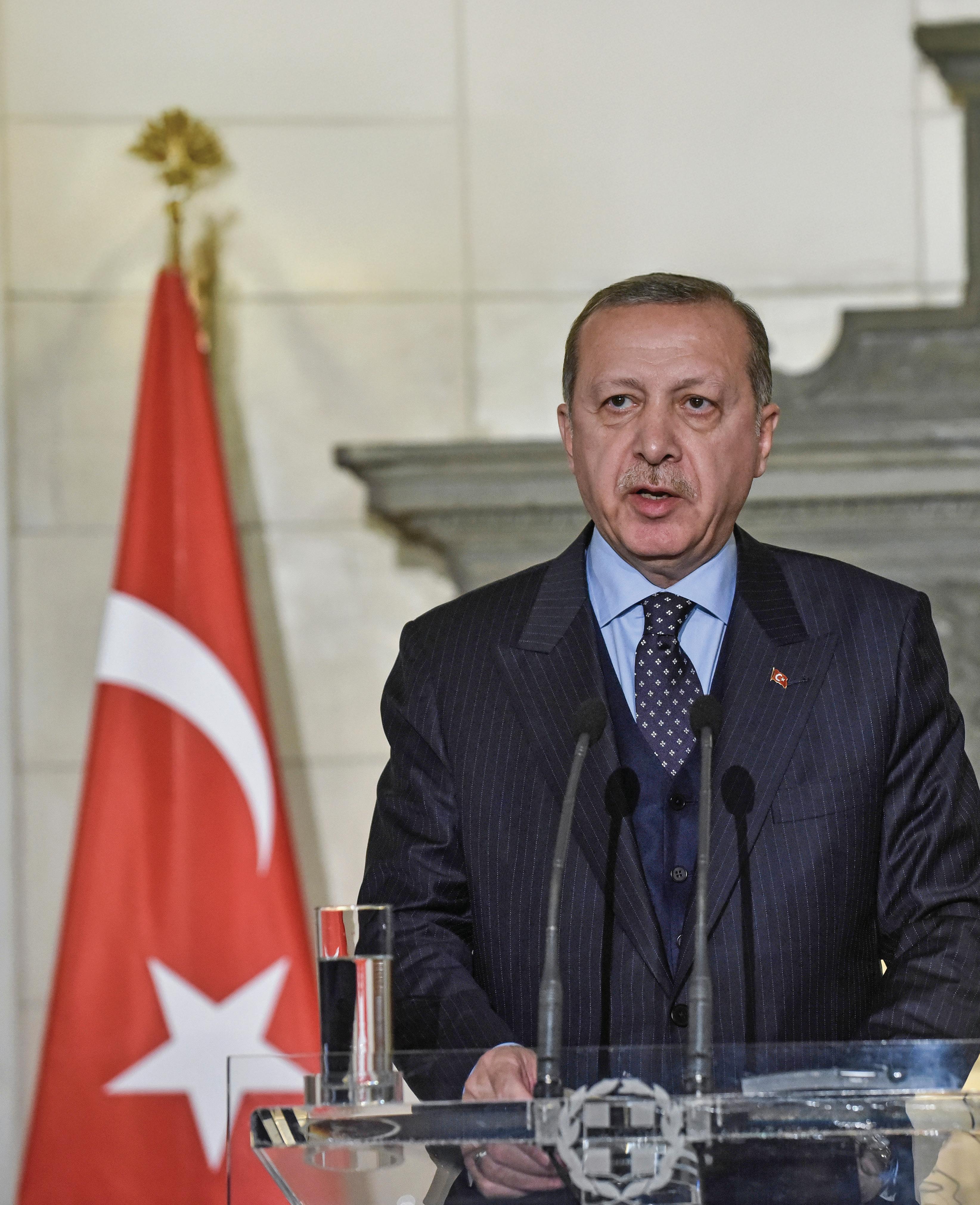

Turkey undertook a series of robust economic policies that have been drawing foreign investors to the country's debt markets, after President Recep Tayyip Erdogan was reelected in 2023. As the nation has been aggressively utilising the capital markets over the past 24 months, GCC (Gulf) banks have been instrumental in attracting the proper kind of investors.
Due to recent rate reductions, indications of declining inflation, strong corporate sell-side participation, and the wider Middle East's faith in Turkey's leadership, investors have been placing large wagers in the nation's bond market.
Between June 2023 and January 2024, Turkey issued 64 bonds and sukuk from corporations, financial institutions, and the government. Volumes increased by 89% to $33 and 6 billion in 2024.
HSBC priced 21 deals at that time, but Emirates NBD Capital, the investment banking division of Emirates NBD, the biggest lender in Dubai, priced four deals in January 2025 and 26 deals in Turkey in 2024.
"Last year was super busy for us in Turkey. We priced 26 deals in Turkey last year. In 2021 we did two deals. The years 2021, 2022 and 2023 to some extent were very quiet because of orthodox policies and geopolitics. But now
Over the past 18 months, bond yields in Turkey have increased significantly
we are seeing a significant jump in volumes," Ritesh Agarwal, Head, Debt Capital Market at Emirates NBD Capital, said.
Turkey's annual volumes, which were mostly made up of sovereign funding, averaged $13 billion between 2015 and 2022. Over the past 18 months, bond yields in Turkey have increased significantly. At the moment, its bond yields are rising by 250 basis points. Around 500 bps was its peak in October 2023.
The renewed interest from investors is not just a yield story. To put it in perspective, Khaled Darwish, MD, Head of Debt Capital Market, CEEMEA Region at HSBC, said, "Since the country's presidential election, the Turkish bond market has been strong; macro risk has significantly decreased in Turkey. The government's policies to address inflation, the fiscal deficit, the current account deficit, and other issues have garnered significant investor confidence. The international market now has more faith in the government and its bonds as a result of everything mentioned above.”
Numerous GCC banks maintain subsidiaries in Turkey and aim to expand their loan and asset portfolios in the Turkish market.
The banks were able to take part in syndicated loans in the country, according to Darwish, and their operations were not concentrated on the bond and sukuk markets. Emirates NBD's subsidiary DenizBank has a significant presence in Turkey.
“Now it’s become a full bank and we can showcase our strength across product suites. We used to primarily work on FI transactions, but now we are adding it up with corporates. We do a lot of loans as well. We are very active on the loans as well in Turkey,” Ritesh Agarwal said.
Qatar National Bank has a presence in Turkey through QNB Finansbank, and Kuwait Finance House has a subsidiary that operates in Turkey. Middle Eastern investors currently
make up 15-25% of the Turkish bond market. It was 1-2% before. Next, which makes up 40-50%, are the United Kingdom and the larger European region.
“Middle Eastern investors have become very active players in the Turkish bond market in the last two years. We have spent a lot of time with regional investors over the last few years to educate them on the Turkey story, including reverse roadshows in Turkey, and the effort is paying dividends now,” Ritesh Agarwal added.
To diversify funding sources, the government has actively promoted Islamic finance by encouraging the issuance of sukuk and other Shariahcompliant securities.
Abdeslam Alaoui, MD, Head of CEEMEA Capital Markets at Deutsche Bank, said, "This is reflected by Turkey’s DCM being one of the third largest among the core Islamic jurisdictions, with a 15% share after Indonesia (24%) and Malaysia (20%) at
Revenue of the online food delivery industry in Turkey from 2016 to 2024
end-3Q24, and it is one of the three G20 countries active in the sukuk market."
In what seems to be another boost for Turkey's banking sector, UAE's biggest Islamic bank, the Dubai Islamic Bank raised its stake in TOM Group, from 20% to 25%, in January 2025. The move followed the initial stake acquisition in September 2023, further cementing DIB’s presence in that country's "dynamic financial landscape."
"Turkey continues to be a pivotal market for DIB, given its sizeable population, rapidly expanding digital infrastructure, and impressive economic growth trajectory. The move aligns with DIB’s vision to drive financial inclusion and bring innovative Sharia-compliant financial services to underbanked and nonbanked segments," said a statement from the UAE-based venture.
"The increased shareholding not only solidifies DIB's position as a key stakeholder in Turkey's thriving
digital banking sector but also underscores our deep-rooted belief in the country’s strategic intent around tech-based economic development. The partnership with T.O.M. Group goes beyond our financial growth aspirations. It reflects the larger objective of building a comprehensive, future-proof and tech-rich global Islamic financial model with built-in intelligence to evolve with the fastchanging customer mindsets of today," said Dr. Adnan Chilwan, Group CEO at DIB, during the occasion.
Despite anticipated fiscal consolidation, sovereign financing is still anticipated to be the primary source of DCM issuance in Turkey. Experts assert that banks and corporations, however, have enormous potential to expand their market presence.
“While the government funding makes up most of the supply, we have seen a major increase in corporate and
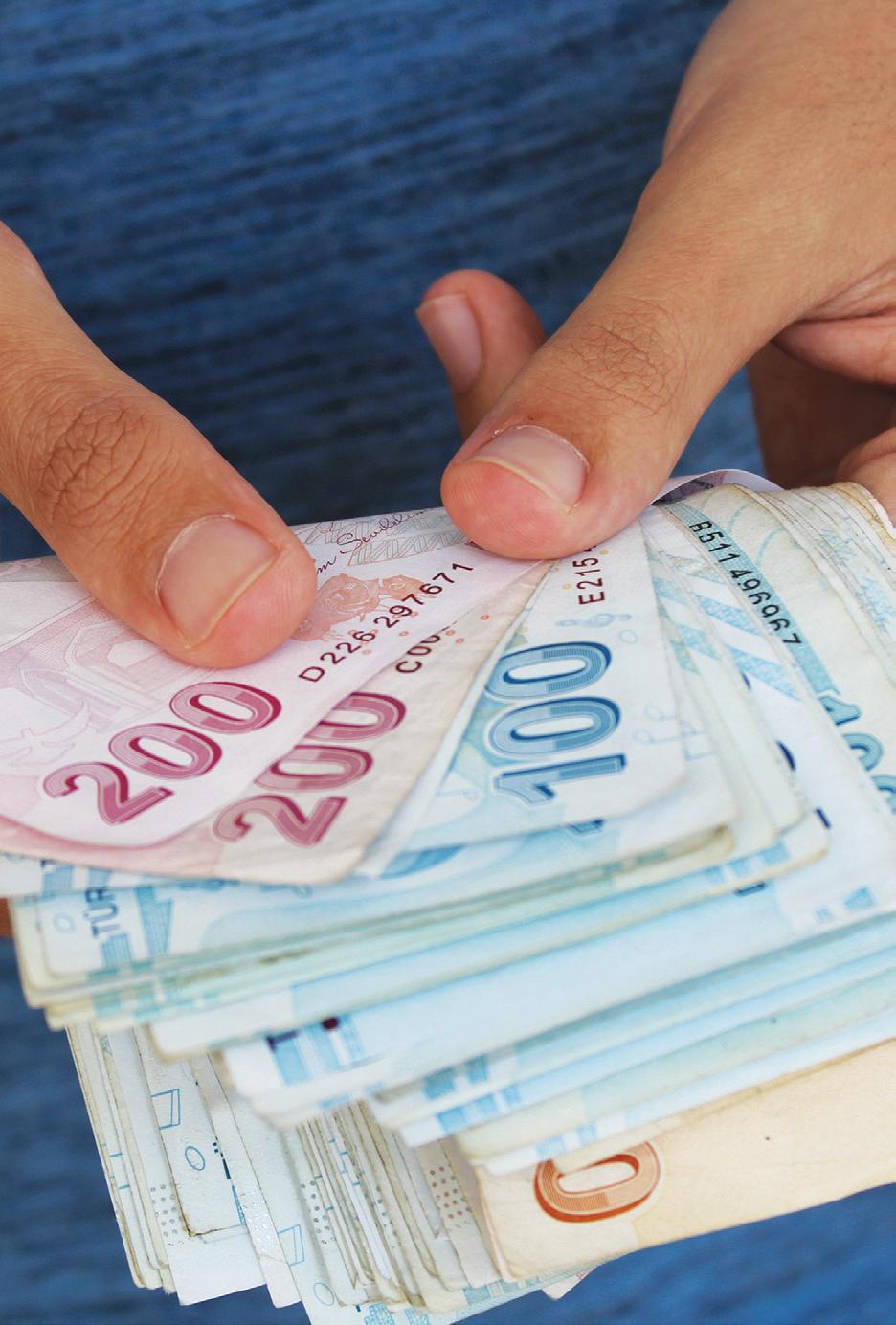
FI issuers accessing markets. In 2024, FI supply increased 298% YoY and corporate supply increased by 332% YoY. The share of supply has greatly changed in 2024 versus 2023, where we started seeing more of a balance between the makeup of government supply from Turkey vs Corp/FI,” Alaoui said.
HSBC’s Darwish noted that the corporate sector is bringing a larger share of debut issuers compared to the banking sector, where HSBC already has the majority of banks as existing issuers.
“On the corporate side, we had at least four-five new debuts last year and will continue to get more debuts this year, including from new sectors that previously relied on bank lending,” Darwish concluded.
This shift towards a more diverse mix of issuers indicates that Turkey is moving towards financial stability, where corporate and financial institutions are increasingly tapping into
the capital markets. As a result, there is greater opportunity for investors seeking new avenues for growth.
The continued success of Turkey's bond and sukuk markets will depend on the country's economic steadiness, the government’s commitment to fiscal reforms, and the ongoing global demand for Sharia-compliant securities. With a strong track record and a supportive environment, Turkey remains an attractive destination for international investment.
Harbourfront Wealth model is designed to support advisors in maintaining a personalised approach to their clients
'Acquisitions
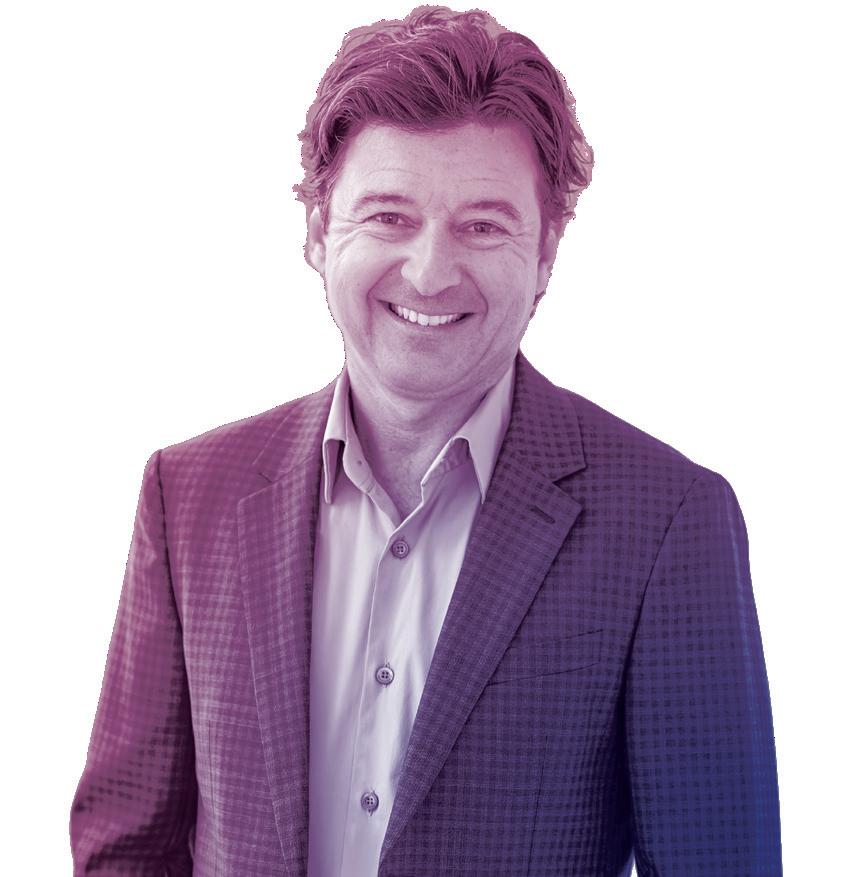
CL RAMAKRISHNAN
Danny Popescu is the CEO of Harbourfront Wealth Holdings and is responsible for the business operations of five underlying businesses, including its investment dealer, asset management firm, and US investment arm.
In 2013, Danny founded an IIROC (now CIRO) investment dealership called Harbourfront Wealth Management, to bring pension-type investment vehicles such as private equity, private real estate, and private credit to Canadian retail investors.
Danny launched Harbourfront with an $11 million personal investment and within 9 years, established a $425 million enterprise value when Boston-based Private Equity firm, Audax Group bought a stake in the firm.
In an exclusive interview with International Finance, Danny Popescu, CEO of Harbourfront Wealth Holdings, shares insights on the firm’s recent acquisition of KJ Harrison & Partners, emphasises the importance of transparency, discusses future acquisitions, and touches on other key topics.
What strategic factors made KJ Harrison & Partners the right fit for Harbourfront Wealth's latest acquisition?
We look for like-minded, profitable wealth management practices that value independence and put the client first. KJ Harrison (KJH) has an exceptional reputation in the wealth management community, with a strong track record of performance and growth. Their business acumen and vision for the future aligned well with Harbourfront Wealth, making them an ideal candidate to join our firm.
With Harbourfront’s AUA nearing CAD 11 billion, how do you plan to maintain a personalised client experience at scale?
Our model is designed to support advisors in maintaining a personalised approach to their clients. We do not dictate their approach or offerings. One key
Harbourfront Wealth has developed and grown a leadership team with deep operational knowledge

way we support our advisors is with our advanced technology. We provide best-in-class solutions that make day-to-day tasks more efficient and free up advisors’ time to focus on serving their clients. Some examples of this include our integrated data lake and unified experience, digital onboarding, and straightthrough processing (trading by the next day). We are also developing a client portal with automated reporting, which we are planning to launch this summer.
Recently, you spoke about the importance of independence and transparency. In what ways do these values influence how you choose and approach acquisitions?
We partner with advisory teams and wealth management firms that have been successful in building reputable and profitable practices. Each team has its secret to success, and we believe it is important to enable them to continue growing in a way that works for them. We give our advisors the freedom to recommend any security they determine is best for their clients, define their own brand, and communicate with their audience in their own
voice. We believe independence is the key to succeeding on behalf of clients, and we look for advisors who will thrive in an independent environment.
What specific synergies do you expect between Harbourfront and KJH, both culturally and operationally?
The KJH operating model is unique, and this acquisition will not disrupt their model. In fact, our goal is the opposite. We will look for additional advisors to join and benefit from the KJH model. From an operational standpoint, we are assessing common systems, applications, and vendors to take advantage of additional scale in our pricing models.
How does this acquisition position Harbourfront to compete with larger, bank-owned wealth management firms in Canada?
The industry recognises the benefit of independence in wealth management, and the KJH acquisition further emphasises this trend. KJH is an established and recognised High Net Worth and
KJH is an established and recognised High Net Worth and Family Office boutique, and choosing to partner with Harbourfront deepens our clout in the industry.
Family Office boutique, and choosing to partner with Harbourfront deepens our clout in the industry. Wealth management advisory practices are seeing the advantage of joining an independent firm instead of the more bureaucratic, less flexible, bank-owned firms.
What innovations or investment solutions can clients expect to see emerge from this new partnership?
Harbourfront has developed a robust platform of multi-asset solutions across both public and private asset classes. KJH broadens the Harbourfront Wealth expertise into bespoke portfolios built for private clients.
How will the integration of KJH’s CIROregistered dealer enhance Harbourfront’s compliance and regulatory capabilities?
Both KJH and Harbourfront have strong compliance resources and oversight capabilities, and now we will be able to leverage both.
Can you share how your leadership approach has evolved as Harbourfront grows and completes major acquisitions like this one?
We have developed and grown a leadership team with deep operational knowledge, which gives us the expertise to know what to look for in potential acquisitions and how to avoid surprises postacquisition. The strength of my team and their ability to absorb growth and scale our business is what sets us apart.
What trends are you seeing in the independent wealth management space, and how is Harbourfront positioning itself to lead?
We are seeing a large move toward private market investing. Institutional investors have been investing in private markets for decades, but this space has been inaccessible to everyday investors
due to regulatory hurdles, high minimums, low liquidity, and lack of expertise. We have led the way in the industry, in bringing private marketrelated investments to everyday investors (starting in 2018), and we are seeing other firms starting to follow our lead. Our private markets expertise is one of the key reasons advisors choose to join Harbourfront.
Another trend that is resonating with advisors is the move toward firm ownership. When we partnered with Audax Private Equity in 2022, our advisors received handsome cheques through a partial monetisation event. In a couple of years, we will do it again, and four to five years after that, we will be on our third partial exit. Historically in Canada, independent shops often sold to banks or other conglomerates. No advisor desires that in today's environment, which makes our model refreshing. Given that private equity investors are not operators, we will continue to maintain our independence while creating periodic liquidity events for our advisor shareholders.
Looking ahead, do you anticipate further acquisitions, and what qualities will you seek in future partners?
We are looking to close on a fourth acquisition in July and continue to explore others where cultural alignment exists and the deals are economically accretive.
What factors make Harbourfront an attractive acquirer for so many wealth management firms?
Harbourfront is unique in the industry, with a collegial and supportive culture and leading-edge technology that makes it easier for advisors to serve their clients. We are also extremely efficient from an economics point of view, which makes us highly profitable—and advisors get to share in those profits.
Why is Harbourfront making these acquisitions?
We want to be the independent wealth management firm of choice in Canada. These acquisitions enable us to accelerate growth and scale effectively.

As BCEL Bank celebrates 35 years of serving Laos, it has marked the milestone by introducing new features and products that will further revolutionise digital banking
As the leading financial institution in Laos, BCEL Bank has consistently pushed the boundaries of innovation, delivering financial solutions that make banking easier, faster, and more secure than ever.
Over the past decade, the venture has revolutionised how Laotians manage their finances, ensuring that its platforms remain accessible to all, whether the client is an individual, a small business, or part of a large organisation. BCEL Bank’s digital platforms, BCEL One and i-Bank, have remained central to this transformation, offering its customers the flexibility to bank anytime, anywhere.
Mrs. Saysamone Chanthachack Managing Director BCEL Public



Explaining the product, BCEL Bank told International Finance, “Imagine the convenience of having a fullservice bank at your fingertips. With BCEL One, that's exactly what you get.”
“Our mobile banking app gives you secure and seamless access to all your banking needs, from local and international money transfers to paying bills for water, electricity, telecom services, and even taxes. You can also make fund transfers and much more, all from your phone,” the bank noted.
“Our QR code payment system extends beyond Laos, making it easy to use in countries like Thailand, Vietnam, South Korea, and China through our partnership with UnionPay, enabling payments through WeChat Pay, Alipay, and other popular international platforms,” it added.
BCEL One even offers automatic currency exchange to simplify international transactions for its users. With over 1.6 million satisfied customers, BCEL One has transformed the way Laotians bank, with the tagline, “It's all about making banking simple and putting control in your hands.”

For businesses and organisations, managing finances has never been easier than with i-Bank, BCEL One’s webbased platform designed for corporate needs. Whether it’s managing accounts, high-value transactions, or international transfers, i-Bank offers an intuitive, secure solution that’s accessible on a 24/7 basis.
“Enhanced with OTP codes and tokens, i-Bank provides the highest level of security, making it suitable for users of all digital skill levels. Whether you're handling significant funds or cross-border operations, i-Bank empowers you to focus on what matters most—growing your business. At BCEL, innovation is at the heart of everything we do. We're committed to making banking better, more secure, and more accessible for everyone, contributing to financial inclusion and the sustainable growth of Laos. As we strive to maintain our strong position in the market, we continue to advance our technology to meet international standards,” the bank added.
As BCEL Bank celebrates 35 years of serving Laos, it has marked the milestone by introducing new features and products that will further revolutionise digital banking.
Donald Trump has promised tax cuts, which may offset some risk and spur growth, especially if coupled with productivity-enhancing investments
The year 2025 will be an important one for the United States as Donald Trump enters the White House for his second stint as President. The Republican won the election a couple of months back by a landslide margin on the promises of aggressive import tariffs, tough immigration restrictions, reregulation and smaller government.
Investors had already been paring back bets on cuts in 2025, worried by signs that the bank's progress on stabilising prices was stalling. There are also risks associated with policies proposed by Donald Trump, such as extensive border taxes and the deportation of migrants
As the world's largest economy in the post-COVID years fought with headwinds like high inflation, not everything was bad. While a section of analysts has been talking about a potential downturn in the world's largest economy, they have been proven wrong time and time again.
Take the December report for example, where the job gains were much higher than what the roughly 160,000 analysts had expected. American employers added 256,000 workers and the unemployment rate dropped from 4.2% in November to 4.1%. One of the positives of "Bidenomics" was the steady pace in the number of jobs added. In 2024, the tally was 2.2 million, with a monthly average of 186,000.
With a new administration taking over the proceedings, we will talk about what lies ahead for the American economy in 2025.
The US Federal Reserve, charged with keeping both prices and employment stable, cut interest rates for the first time in more than four years in September 2024. While the move boosted hopes of the wouldbe borrowers in the world's largest economy, as they were facing the highest borrowing costs in roughly two decades, the latest data on the job market now removes pressure on the Fed to act.
Investors had already been paring back bets on cuts in 2025, worried by signs that the bank's progress on stabilising prices was stalling. There are also risks associated with policies proposed by Donald Trump, such as extensive border taxes and the deportation of migrants, which could increase prices or wages, thereby exerting pressure on inflation.
The interest rates set by the US central bank have a powerful influence over borrowing costs for many loans, and not only in America. Borrowing costs globally have increased, responding to expectations that American rates are likely to remain higher for longer. Expect the trend to continue for a few months more.
Biden administration’s Achilles' heel has its over-the-top spending binge. The deficit for the fourth quarter of 2024 has reached a record $711 billion, $200 billion more than for the same period in FY2023-24. Revenues reached only $1.08 trillion and would have to be increased by two-thirds to match spending ($1.79 trillion). There was a decline in corporate income tax ($110 billion instead of $150
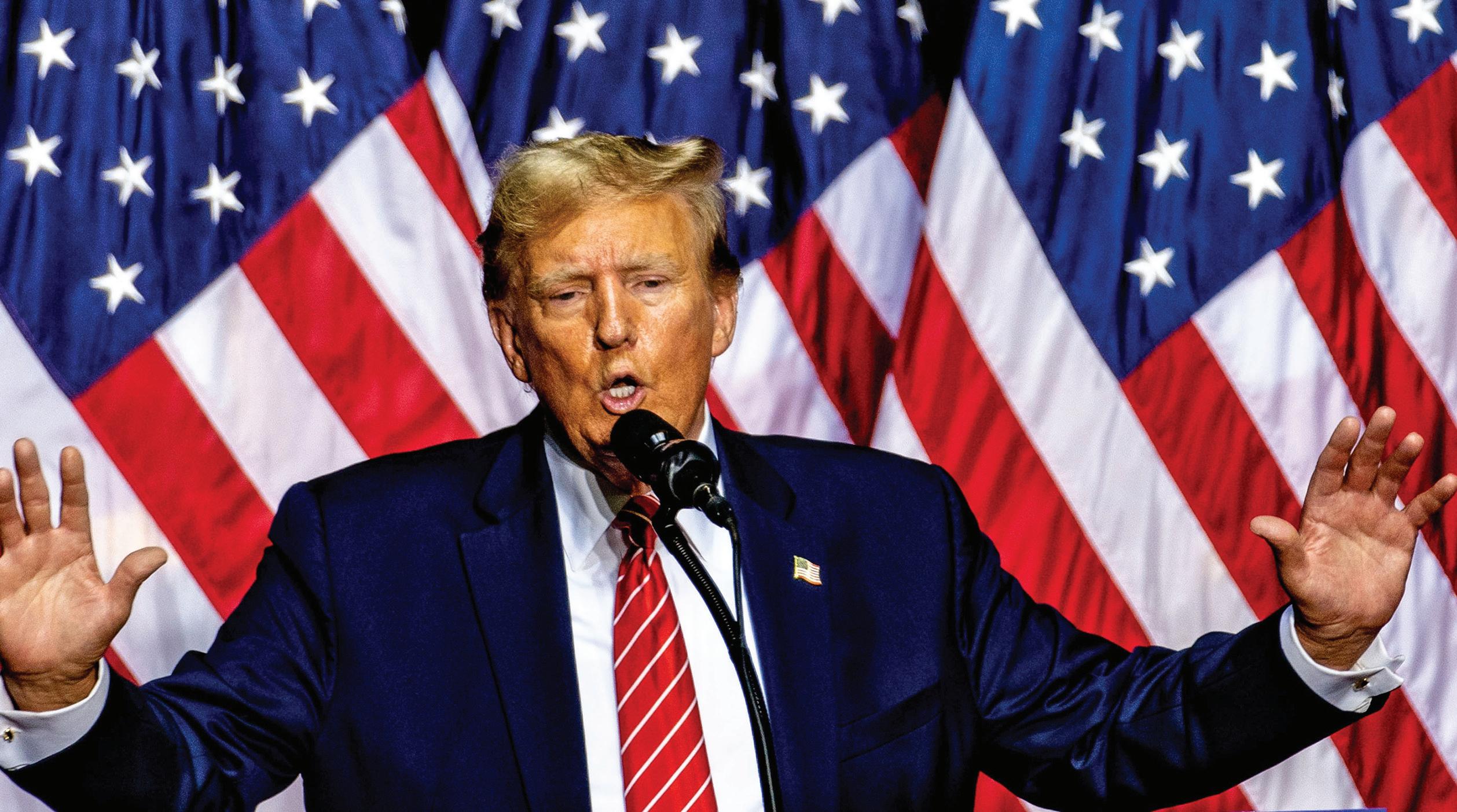
billion), while spending soared by more than 10%, or around $176 billion.
This increase leads to a record estimate of the next annual budget deficit, which would reach $1.88 trillion, above the $1.83 trillion of 2023-2024. It is the highest deficit in history (excluding the COVID period), or 6.2% of GDP. Such a figure during a time of growth, full employment and non-deployment of American troops abroad is a major signal that the world's largest economy is in an untenable fiscal situation.
However, as per Biden's Council of Economic Advisers (CEA), the country had become a magnet for foreign investment given the resilience of its post-pandemic recovery. The push for new investments in infrastructure, clean energy and semiconductor technology attracted global inflows, especially from close allies including Canada, Japan, South Korea and Britain.
The CEA report also noted the world's largest economy receiving 41% of global gross capital inflows in 2022-23, the highest share of any country, and nearly doubling its pre-pandemic share of 23%. The dollar also remained the world's biggest reserve currency and accounted for an outsized share of global trade and cross-border financial transactions.
Under Biden, the US also saw high levels of business investment, one-third of which has gone toward factory construction, thereby resulting in rising productivity and high rates of business formation driven in part by international financing. While total capital inflows remained below the peak of $2 trillion in 2007 just before the global financial crisis, portfolio investment in equity and debt markets totalled a record $1.23 trillion in 2023.
As per Brian Blank, Associate Professor of Finance, Mississippi State University and Brandy Hadley, Associate Professor of Finance and Distinguished Scholar of Applied Investments, Appalachian State University, the American economy did a great job in 2024 by displaying strong economic growth, moderating inflation, and efficiency gains, amid a global high-interest rate regime.
While the world's largest economy is expected to continue its positive momentum in 2025, there will be some caveats. Both Blank and Hadley see interest rate cuts as short-term ones, as the policymakers are now bringing things like inflation and unemployment into the play, based on which they will take calls on whether to stimulate the economy or pump the brakes. The interest rate that neither

stimulates nor restricts economic activity, often referred to as R* or the neutral rate, is unknown, which makes the Fed’s job challenging.
"However, the terminal rate –which is where Fed policymakers expect rates will settle in for the long run – is now at 3%, which is the highest since 2016. This has led futures markets to wonder if a hiking cycle may be coming into focus, while others ask if the era of low rates is over," both analysts stated.
While some economists are concerned the recent uptick in unemployment may continue, others worry about sticky inflation. The Fed’s challenge will be striking the right balance, continuing to support economic activity while ensuring inflation, currently hovering around 2.4%, doesn’t reignite.
While GDP growth for Q3 was revised up to 3.1% and Q4 is projected to grow similarly quickly, in 2025 it could finally show signs
of slowing from its recent pace. However, Blank and Hadley expect it to continue to exceed consensus forecasts of 2.2% and longer-run expectations of 2%.
The main concern here is the current average effective tariff rate, which stands at 2%. If this rate increases fivefold to 10%, it could cause significant disputes between Washington and its trade allies. Such a change would lead to economic challenges and complicate inflation forecasts.
Blank and Hadley expects tariffs to serve as more of a negotiating tactic for the "Trump 2.0" than an actual policy proposal. Also, stricter immigration policies can also create labour shortages and increased prices, while government spending cuts could weigh down economic growth.
Donald Trump has also promised tax cuts, which may offset some risk and spur growth, especially if coupled with productivity-
enhancing investments. However, tax cuts may also result in a growing budget deficit, which is another risk to the longer-term economic outlook.
Talking about the labour markets, hiring rates are normalising, while layoffs and unemployment, 4.2%, up from 3.7% at the start of 2024, remain low despite edging up. The American economy, as per Blank and Hadley, could remain resilient into 2025, with continued growth in real incomes bolstering purchasing power. This income growth has supported consumer sentiment and reduced inequality, since low-income households have seen the greatest benefits.
Overall, the 2025 outlook remains promising, with continued economic growth driven by resilient consumer spending, steadying labour markets, and less restrictive monetary policy. However, higherfor-longer interest rates could put pressure on corporate debt levels

and rate-sensitive sectors, such as housing and utilities.
Trump 2.0 inherited vastly different economic circumstances than the one Republican witnessed while beginning his first term in 2017. Yes, the inflation has slowed down, but hasn't completely disappeared. Then there are larger federal deficits and higher government borrowing costs than before, and a labour force that has grown faster than expected due to immigration, something he wants to curb.
In 2017, the economy had been growing steadily since the end of the 2007-2009 financial crisis, but the pace was often slow and employment had not fully recovered. There was room for the boost of Donald Trump's signature Tax Cuts and Jobs Act, and while the import tariffs that followed dealt a blow to the global economy, the United States proved largely resilient.
Inflation was a distant concern during that period, seemingly anchored below the Federal Reserve's 2% target. Homebuyers could find 30-year fixed-rate mortgages at about 4%, and the government was funding its operations with long-term Treasury bond rates at about 3%. In 2025, inflation is dependent on the Fed's target, mortgage rates are close to 7%, something which is making the market doubt about whether inflation is contained.
Expected GDP of United States from 2025 to 2029 (In Billion US Dollars)
While Donald Trump has created an unofficial Department of Government Efficiency (DOGE) to find savings, there is no plan to address the main drivers of the deficit: the health and retirement benefits for seniors. Key data like employment, inflation, consumer spending and overall growth may not offer much room for improvement without risks.
Analysts' views on Trump's road map for American economy are mixed: they see massive tariffs and deportations reigniting inflation and dampening economic growth. Yet they see the Republican's pledge of expanding the sweeping tax cuts passed in his first term and easing the regulatory burden on businesses potentially juicing the economy.
Forecasters see 2025 as a transition year as the economy continues its post-pandemic re-
covery but at a lower temperature before Trump’s policies fully take effect. For workers, healthy wage growth is likely to keep outpacing slowing inflation, fuelling consumer spending and job gains. The Federal Reserve’s interest rate cuts, set to continue this year assuming inflation eases further, should provide a boost to growth.
Instead of the recession Moody’s Analytics forecast a few months ago, the research firm foresees a more slowly growing economy in 2025. Donald Trump promised to impose 60% tariffs on Chinese imports and 10% levies on shipments from all other countries to prod manufacturers to move production back to the United States. Recently, he threatened 25% tariffs on Canada and Mexico and 10% fees on China to pressure the countries to curtail the flow of illegal drugs and unauthorised immigration to the US.
By contrast, tax cuts likely won’t stoke growth until 2026 since the tax reform Trump spearheaded in his first term expires at the end of 2025. He and a Republican Congress, however, are expected to extend lower tax rates for all income levels, possibly increase immediate write-offs for business capital investments, and lower the corporate tax rate from 21% to 15%.

IF CORRESPONDENT
Widespread sleep deprivation is also having an adverse effect on corporate profits

After a decade, the world is finally beginning to pay attention. There is wearable technology, digital mattresses, sleep trackers, and sleep aids ranging from natural cures to CBD oil. While corporate sleep programmes are being implemented to help employees get a better night's sleep, hotels are focusing on sleep tourism.

According to the consultancy firm
Frost & Sullivan, the global sleep economy is estimated to be worth $585 billion this year. This figure highlights the significant size of the sleep industry, which addresses a fundamental societal issue while also creating numerous opportunities for investors and startups. However, how widespread is the "epidemic" of sleep issues, and are we taking sufficient measures to address them?
The World Health Organisation published research titled Sleep Problems: An Emerging Global Pandemic two years after the American Centres for Disease Control and Prevention (CDC) deemed sleep problems a "public health epidemic" in 2014.
Global health emergency
We're not getting enough sleep, according to experts who agree with the CDC's
analysis. The Chief Executive of the National Sleep Foundation (NSF), an American non-profit organisation established to enhance public health and well-being by educating the public on sleep concerns, John Lopos, states, "It is absolutely correct to say that inadequate sleep is a health crisis."
Additionally, chronic sleep deprivation is associated with an increased risk of burnout, anxiety disorders, and depression.
“According to the organisation's research, almost 60% of US individuals do not receive the necessary seven to nine hours of sleep each night. Our findings indicate that US adults and teenagers would receive a letter grade ranging from a D to an F for their practice of healthy sleep habits and sleep satisfaction,” he said.
It's not only the US. A 2023 Nuffield Health poll revealed that the average sleep
duration in the United Kingdom was just under six hours, with 11% of respondents only getting two to four hours per night.
Japanese Society of Sleep Research found that 71% of Japanese men regularly get less than seven hours of sleep per night, making Japan the country with the lowest average sleep hours out of all 33 countries surveyed by the OECD in 2021. This finding caused widespread concern among health officials.
Numerous studies have examined the negative health effects of sleep deprivation, and experts are worried. In the study Workplace Interventions to Promote Sleep Health and an Alert, Healthy Workforce, researchers found that "less than seven hours of sleep is associated with increased risks for cardiovascular disease, obesity, diabetes, hypertension, depression, and all-cause mortality."
In the meantime, researchers from the
UK and Italy discovered that people who slept fewer than six hours a night had a 12% higher risk of dying than those who slept six to eight hours.
Els Van der Helm, a sleep researcher and adjunct professor at the IE Business School, told World Finance that sleep is essential for brain cleansing.
“The brain accumulates waste products while we are awake; sleep helps remove these toxins, preventing cognitive decline linked to neurodegenerative diseases like Alzheimer's disease,” she explains.
According to her, "Long-term sleep loss is linked to a higher risk of depression, anxiety disorders, and burnout in addition to physical health risks. It's crucial for immunity as well; even one sleep-deprived night impairs the body's defences against infections."
British neuroscientist Matthew Walker's highly regarded book 'Why We Sleep: The New Science of Sleep and Dreams', published in 2017, raised awareness of the negative health effects of sleep deprivation and sparked a conversation about "low-level exhaustion," which has become the norm for many people.
"People don't realise how their chronic lack of sleep has affected their ability to think clearly and their physical health, including the gradual development of poor health," he wrote.
Widespread sleep deprivation is also having an adverse effect on corporate profits. Van der Helm, who works with executives and organisations to solve sleep disorders, asserts that "business performance is measurable when sleep is lacking."
“It hinders creativity and logical reasoning and has an impact on memory, concentration, and problem-
solving skills. Employees who don't get enough sleep are more likely to make bad decisions, make mistakes, and react slowly. Two nights of sleep deprivation can raise errors by 300%, according to research,” she said.
The body's defences against diseases are weakened by just one night of inadequate sleep.
Employees who don't get enough sleep are also more prone to become burned out, which raises hiring expenses and turnover rates. Poor sleep also increases the likelihood that workers may take sick days and need expensive medical care. Lack of sleep affects a leader's ability to control their emotions, which raises stress levels and strains relationships at work, she claims.
More than 23% of respondents (almost 50 million individuals) to a CDC poll claimed that their inability to focus throughout the day was caused by their lack of sleep, and 8.6% (18 million people) said that their inability to get enough sleep was directly affecting their ability to perform their jobs.
Statistics show that this is having a negative economic impact. A study conducted by the research organisation Rand Health (Why Sleep Matters –The Economic Costs of Insufficient Sleep) calculated that the annual cost of insufficient sleep in five OECD countries could reach $680 billion due to absenteeism, poor performance, and mortality.
Japan came in second with an estimated yearly loss of $138 billion, while the US accounted for $411 billion of that. Research indicates that the UK suffers losses of up to £50 billion, or 1.86% of GDP, as a result of lower productivity, higher medical expenses, and mishaps and mistakes brought on by sleep deprivation.
It's not limited to the economy as a whole, either. According to a study
conducted by LSE professors, a onehour increase in weekly sleep increased an individual's earnings by 5% over time. Researchers said in the report Sleeping Our Way to Productivity that "these results are economically relevant."
They say that an additional hour of sleep a week increases income by about half the amount of an extra year of formal schooling.
The world is beginning to realise this, and employers and consumers alike are beginning to pay attention.
"About ten years ago, the public began to make progress on this. Regular consumers now understand the importance even better and are willing to spend on things that can help them get enough of the quality sleep they want and need," Lopos said.
The foundation found that 93% of persons surveyed were open to using a "sleep-promoting environment" to enhance their quality of sleep.
This is manifesting itself in a number of ways, not the least of which is the quick ascent of sleep technology. Customers are taking full advantage of the products being marketed, including wearable technology, timed lights, weighted blankets, smart thermostats, and even smart mattresses that can identify sleeping conditions and modify temperature and firmness accordingly.
According to a survey conducted by the American Academy of Sleep Medicine, over one-third of Americans have used a sleep-tracking device.
In addition to helping to mitigate the "epidemic" of sleep, that is opening up a whole new market for investors and business owners. Crunchbase reports that venture capital funding for sleep technology increased from just under $400 million in 2017 to about $800 million in 2021. Several sleep-focused
venture capital firms have also begun to appear, such as San Francisco-based Supermoon Capital, which debuted in 2021 with a $36 million fund for startups with a sleep focus.
"Everywhere we have a live experience, there are genuine opportunities for products and services to help with sleep health. That could be on our bodies, in our homes, or in our workplaces and social settings. The only restriction on the list is our entrepreneurial creativity, which makes it difficult to cap," Lopos added.
The market is also seeing the emergence of subsectors. The travel industry is promoting "sleep tourism" extensively as hotels, airlines, and other businesses meet the increasing demand from customers for a restful night's sleep. According to a study by the research firm HTF Market Intelligence, the worldwide sleep tourism market alone might expand by $400 billion between 2023 and 2028.
Misty Belles, Vice President of Global Public Relations at Virtuoso, a top worldwide network of travel consultants, claimed that "high-net-worth travellers are now seeking treatments for issues like insomnia, cognitive decline, and disease prevention. These initiatives include customised in-room amenities, sleep-optimised retreats, bespoke spa treatments, and cuttingedge technologies, like smart lighting systems.”
Because of all of this, experts think that the "sleep economy" has a lot of room to grow. According to Lopos, the worldwide sleep economy is worth around $600 billion.
"But when we take into account the whole range of daytime and nighttime
Source: Statista

activities we understand can contribute to healthy sleep, I think that is potentially underestimated," he noted.
The worldwide value begins to rise over the hundreds of billions of dollars and approaches the trillion-dollar range that McKinsey recently proposed for the wellness sector.
Although these new sources of income are encouraging for business owners and venture capital firms involved in the sleep industry, will digital devices, sleep aids, and sleep-enhancing settings be sufficient to address ingrained problems?
Van der Helm is one specialist who expresses skepticism, pointing out that not all of these goods have scientific support.
"By providing consumers with daily insights, wearables and smart products can help raise awareness around sleep. However, a lot of items on the market make unsupported claims about enhancing sleep, and this is why I continue to be skeptical," she said.
She asserts that as consumers gain knowledge, they will start to favour goods with strong scientific foundations.
"In order to validate their products
and achieve tangible, quantifiable improvements in sleep quality, companies are increasingly required to collaborate with sleep scientists," she added.
Naturally, it goes beyond the items' effectiveness. We must look beyond sleepboosting products and sleep-focused vacations, even though these can help increase awareness of the problem. One such remedy is corporate interventions.
Rand Health experts think that organisations have a part to play. In the Why Sleep Matters article, they stated that employers should acknowledge the value of sleep and their part in promoting it.
"They should combat workplace psychosocial risks, discourage prolonged use of electronic devices, and design and construct brighter workspaces," the experts stated.
Some businesses have already taken action in acknowledgement of the financial impact that sleep may have; in 2014, Aetna, a private health insurance firm in the United States, even started providing financial incentives to employees who slept for at least seven hours every night, as measured by sleep trackers.
A few years later, Crazy, a Japanese wedding firm, adopted a similar strategy, giving points to staff members who worked at least six hours per night, as shown by sophisticated mattresses.
Meanwhile, specialised businesses like Circadian and the Sleep Works are providing corporate sleep programmes to assist staff in getting the sleep they require.
Employer interventions may have a place, even though monitoring workers' sleep might seem excessive. According to the Workplace Interventions paper, educational sleep programmes produced "self-reported improvements in sleepEstimated


related outcomes, and may be associated with reduced absenteeism and better overall quality of life," indicating a clear value for organisations that prioritise sleep.
There is still work to be done, though, as most companies do not prioritise sleep "despite compelling evidence of the negative impact," the researchers said.
Work-related stress, long hours, and digital habits significantly impact sleep quality. A study by economists Jeff Biddle and Daniel Hamermesh found that every additional hour of work reduces sleep by 13 minutes.
A recent Sleep Charity poll reported that 75% of respondents struggled with sleep due to work-related stress. Research by Joan Costa-Font indicates that people sleep better during economic downturns and worse during recovery.
Flexible work models, like hybrid
schedules, help but remain insufficient.
The National Sleep Foundation found that during the pandemic, Americans slept more due to increased work flexibility.
However, experts argue that many businesses still equate long hours with productivity, harming employee wellbeing.
Governments have taken steps to improve work-life balance. In 2021, Japan encouraged four-day workweeks, while Belgium became the first European country to legalise them in 2022. Despite this, factors like late-night screen use and blue light exposure disrupt sleep. A study titled Broadband Internet, Digital Temptations, and Sleep found that video games, smartphones, and TV reduce sleep duration by delaying sleep onset.
Experts call for sleep to be recognised as a public health issue. The World Sleep Society's 2022 report urged for sleep to be treated as essential to health, like nutrition and exercise. It found that an extra hour
of sleep per week increased wages by 5%. The report recommends global awareness campaigns, standardised sleep data, and legislative action. Advocates argue that sleep deprivation is a societal issue requiring urgent intervention.
They may have a valid point. This is a significant issue that requires attention at the individual, business, and social levels, if the mountains of study are any indication. Making realistic adjustments to our daily routines and work schedules could be a good beginning step, even though completely changing the way we live our lives from the inside out may be a difficult task.
We may eventually reduce the need for digital beds, sleep trackers, and other devices if the proper actions are taken. In an ideal world, we might not require them at all (for our predecessors, light and darkness were sufficient).
We appear to do so for the time being, which is at least somewhat advantageous. This rush of new products is, at the very least, drawing attention to a problem that has long plagued society and serving as a physical wake-up call for everyone to prioritise their sleep.
Time will tell what the effects will be, but it's obvious that businesses' bottom lines aren't the only ones who stand to lose from this "epidemic." If we take the warning seriously and begin addressing the underlying causes, we may be able to start curbing what some scholars have called "the most prevalent risky behaviour in our society."


finexis advisory, the fastestgrowing financial advisory firm in Singapore, has been named the "Best Financial Advisory Firm – Homegrown - Singapore 2024" and "Most Innovative Homegrown Financial Advisory Firm – Singapore 2024" by International Finance Awards. Building on its 2023 recognition for "Most Innovative," finexis continues to cement its position as a leading and forwardthinking financial advisory firm in Singapore.
finexis advisory Deputy CEO Irene Ho, "We are incredibly honoured to be named the Best and Most Innovative Homegrown Financial Advisory Firm in Singapore. These awards reflect our team's passion and dedication to delivering exceptional service and expertise. As we continue to innovate, we aim to set new benchmarks in financial advisory excellence."
A Leading Homegrown Firm With Global Recognition
finexis advisory’s pursuit of excellence has propelled them to rank 5th among all qualifying Singapore companies and 83rd globally in the 2024 MDRT (Million Dollar Round Table) Top 100 companies (Global). MDRT, a prestigious global association of the world's leading life insurance and financial services professionals, honours those who demonstrate

exceptional professional knowledge, strict ethical conduct, and outstanding client service.
As the only homegrown financial advisory firm in Singapore to earn a spot in the 2024 MDRT Top 100 rankings, this achievement highlights the exceptional calibre of finexis' consultants and their dedication to delivering world-class service. This recognition also reflects the firm's ability to attract top talent in a dynamic financial landscape.
Under the leadership of Deputy CEO Irene Ho, finexis advisory is driving innovation and transforming the client experience through the development of cutting-edge digital solutions designed to streamline processes, improve efficiency, and foster meaningful client engagement.
The Financial Dreams Manager is an interactive tool that allows clients to visualise and assess their financial goals, deepening their engagement in the planning process. With the finConnect mobile app, clients enjoy seamless access to their financial information, enhancing transparency and convenience.
Additionally, the digitalisation of the eKYC process has significantly reduced the time required for
client onboarding, verification, and compliance checks, making these processes more efficient and seamless. The integrated WhatsApp chatbot ensures consultants receive timely support to address queries and work more effectively.
"These digital solutions have transformed the way we engage with clients and deliver value, improving efficiency by more than 30%. By automating routine tasks and providing intuitive tools, we free our consultants to focus on what truly matters: building strong client relationships and delivering expert advice that’s in the best interest of the clients," Irene Ho noted.
At the heart of finexis advisory's success is its focus on putting clients first. With over 800 consultants, finexis empowers its consultants to offer unbiased advice by leveraging partnerships with over 79 international fund houses, 19 life insurance companies, 32 general insurance companies, and 16 banks through mortgage partners. These extensive partnerships provide consultants with access to an extensive range of financial products, enabling them to deliver comprehensive solutions tailored to each client's unique financial
At the heart of finexis advisory's success is its focus on putting clients first needs and goals.
Beyond traditional financial planning, finexis fosters long-term relationships with clients through initiatives like career enhancement workshops, supporting them in both personal and professional growth. This holistic approach underscores the firm’s mission to make a meaningful impact on clients’ lives.
finexis advisory remains steadfast in its commitment to innovation, service excellence, and client satisfaction. To meet the demands of an increasingly complex financial landscape, the firm will continue investing in the growth and development of its consultants, equipping them with the expertise to deliver bespoke solutions in a rapidly evolving market.
With global wealth flowing into Singapore, finexis is also sharpening its focus on regional wealth planning to address the unique needs of clients managing assets and interests across multiple jurisdictions. As the firm advances its mission of impacting lives beyond finance, it remains committed to expanding its capabilities and market reach while staying true to its core values of impacting lives beyond finance.
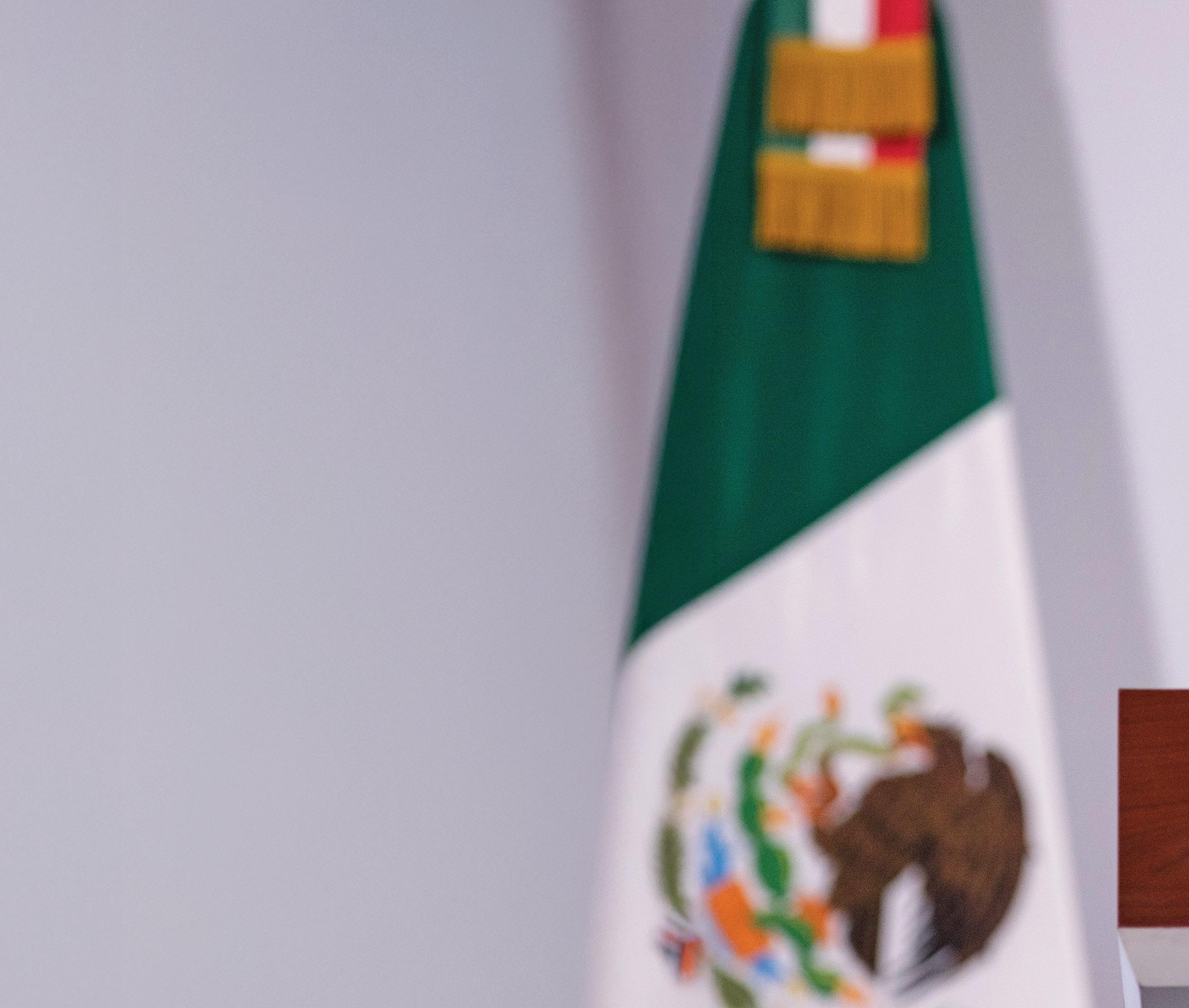
Claudia Sheinbaum’s presidency represents a significant step forward for women in leadership in Mexico
IF CORRESPONDENT

On a bright October day, Mexican politician, scientist, and academic Claudia Sheinbaum made history as she stood in front of jubilant crowds. As the newly inaugurated 66th president of the Latin American country, she also became the first woman to head the nation’s administration. Her words, "It’s time for women. Women have arrived to shape the destiny of our beautiful nation," echoed a message of change, hope, and ambition.
As Mexico's first female and Jewish president, Sheinbaum's ascent to power marks a significant turning point for the nation. It's not just symbolic, but poised with the potential to chart a new political and economic course for a country long weighed down by its burdens.
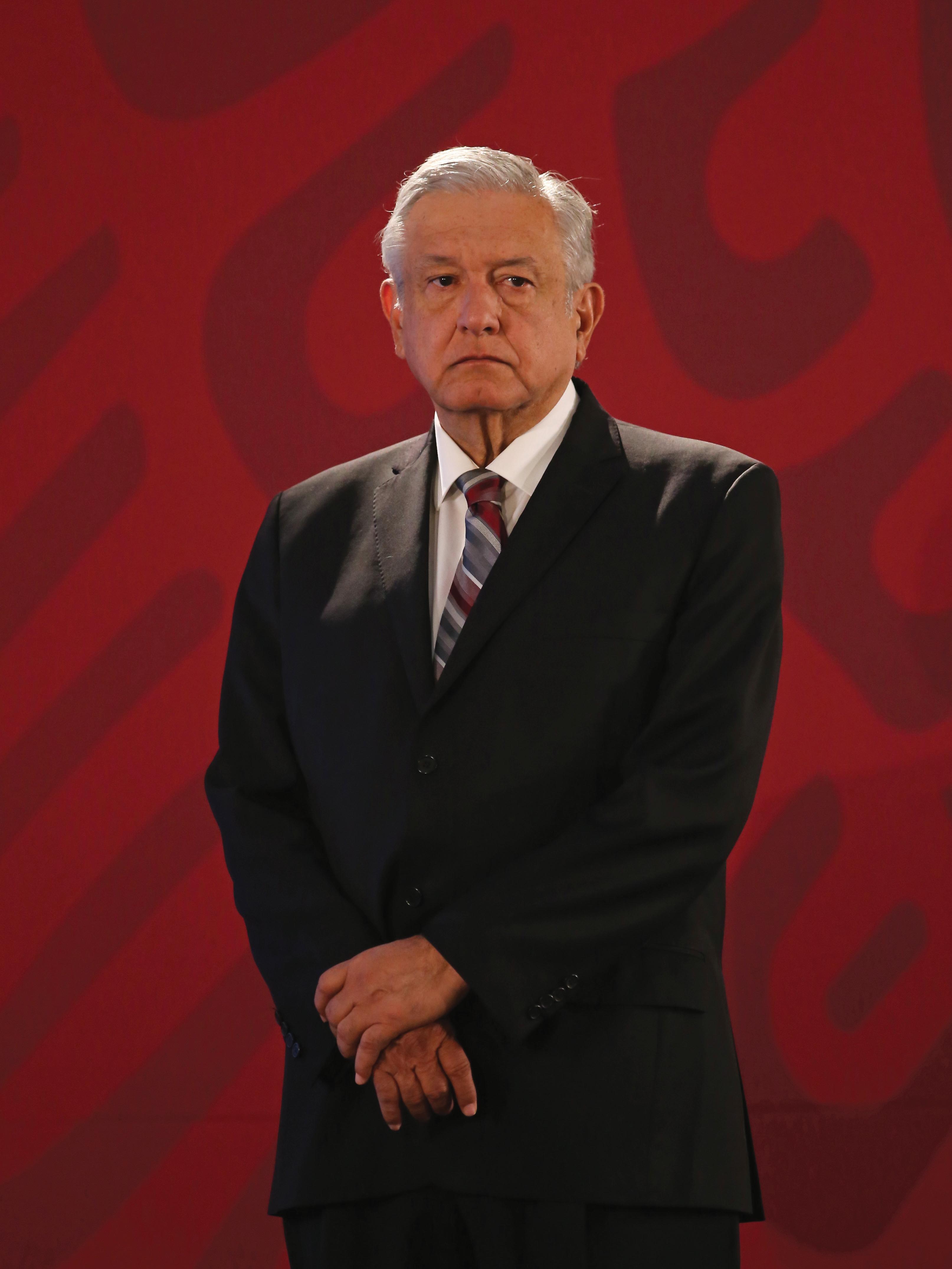
Mexico today finds itself at a crossroads. The crumbling United States–China trade relations present an economic opportunity that Mexico is uniquely positioned to seize. But the question remains: Will President Sheinbaum break away from her predecessor’s policies and forge her own path toward prosperity and transformation, or will she stay bound by the political legacy of Andrés Manuel López Obrador (AMLO), whose shadow still looms large over the country? This article explores the critical opportunities and challenges facing Claudia Sheinbaum as she embarks on her six-year term and the pivotal decisions that could shape Mexico’s future.
The legacy Sheinbaum inherits Before delving into Sheinbaum's prospective path, it is essential to understand the landscape shaped by AMLO, whose six-year term was characterised by bold social spending, attempts at reform, and glaring failures in security policy.
AMLO had come to power promising a “Fourth Transformation,” a reimagining of the nation on par with the War of Independence, the Reform War, and the Mexican Revolution. His vision was one of ending corruption, reducing violence, growing the economy, and expanding social safety nets.
Some of AMLO’s social initiatives, like cash transfers to low-income families, increases in the minimum wage, and expanded pension benefits, successfully lifted over five million Mexicans out of poverty between 2018 and 2022. These policies allowed his approval ratings to remain relatively high, and he forged a strong connection with the workingclass citizens through his frequent public addresses, the three-hour "mañaneras," which became emblematic of his presidency.
These morning press conferences allowed AMLO to directly communicate
with citizens, framing his administration’s narrative and promoting a sense of accessibility and transparency that endeared him to many.
However, there were also notable shortcomings. AMLO’s “hugs, not bullets” policy aimed to reduce violence through a socio-economic approach rather than a militaristic one. It was built on the premise that addressing the root causes of crime—such as poverty, lack of education, and limited economic opportunities—would reduce the appeal of organised crime. The policy sought to prioritise social programmes, create employment opportunities, and expand educational initiatives, with the hope that these measures would offer alternatives to those susceptible to cartel influence.
Despite these good intentions, the policy largely failed to curtail cartel violence, leaving Mexico grappling with an escalating security crisis, with more than 175,000 people murdered and over 43,000 missing during his tenure. While there were some successes, such as increased access to education and cash transfers that helped impoverished communities, these gains were overshadowed by the pervasive violence. The lack of a coordinated law enforcement strategy allowed cartels to strengthen their control over territories.
AMLO’s reluctance to confront cartels head-on was rooted in a belief that addressing socio-economic inequalities would naturally diminish violence, but the lack of tangible results ultimately left the nation more insecure. Economically, his anti-business rhetoric led to stagnation in productivity, low foreign direct investment, and a growing budget deficit.
The budget deficit reached close to 6% of GDP by the end of his term, a level not seen since the 1980s. This, coupled with the underfunding of crucial health services, meant Sheinbaum inherited a
nation with significant challenges.
Claudia Sheinbaum brings to the office a different background and approach compared to her predecessor. A scientist by training, Sheinbaum has shown a keen interest in clean energy and climate policy, setting her apart from AMLO, who was a staunch supporter of fossil fuels and heavily invested in reviving the state-owned oil giant, Pemex. Sheinbaum earned her PhD in Energy Engineering from the National Autonomous University of Mexico (UNAM), one of the most prestigious institutions in Latin America.
During her academic career, she was known for her research in renewable energy, climate change mitigation, and sustainable urban development. Her work at the Intergovernmental Panel on Climate Change (IPCC) even contributed to the organisation's Nobel Peace Prize win in 2007, underscoring her expertise and dedication to environmental issues. Her environmental background indicates that she may pursue policies focusing on green energy and sustainability, marking a departure from AMLO’s focus on energy selfsufficiency through fossil fuels. Sheinbaum’s emphasis on clean energy could represent a transformational shift for Mexico, one that aligns with global trends and opens up new avenues for economic collaboration, especially with countries and corporations keen to invest in renewable initiatives.
Sheinbaum has also demonstrated a different attitude towards the private sector. Unlike AMLO’s business-bashing rhetoric, Sheinbaum has expressed an interest in improving investor confidence and collaborating with private entities, an approach that could help Mexico attract much-needed foreign investment to stimulate its economy.
With Mexico now officially the United States' top trading partner, replacing China amidst escalating USChina tensions, Sheinbaum’s willingness to court private sector investment could position the country as a major beneficiary of nearshoring trends. This could help generate more employment opportunities, boost industrial output, and improve economic diversification, which are essential components for sustained national growth.
But Sheinbaum’s leadership is not without its dilemmas. While her progressive views on climate and business are clear, her support of AMLO’s controversial judicial reforms, which have raised international concerns regarding the erosion of democratic institutions, suggests that she may continue to follow her mentor’s political agenda, at least in part.
The reforms, which propose electing judges directly and cutting the number of lawmakers, have drawn criticism for threatening judicial independence and the checks and balances of the democratic system. Whether Sheinbaum will eventually diverge from these policies in the face of mounting criticism and investor unease remains to be seen.
The outcome of this decision will not only affect domestic politics but could also have significant implications for Mexico’s international reputation, particularly concerning democratic governance and the rule of law.
Mexico’s economic potential is undeniable. With a population of over 130 million and proximity to the United States, the nation is well-positioned to become a powerhouse of manufacturing and industry, especially in the context of US-China tensions.
Nearshoring, the relocation of produc-
Source: Statista
tion facilities closer to target markets, has gained traction. Mexico, with its extensive trade ties to the United States, stands as a prime beneficiary. Nearshoring offers Mexico a unique opportunity to become an industrial hub not just for North America but potentially for global markets, as businesses look for reliable, geographically strategic locations to build supply chain resilience.
In 2023, Mexico surpassed China to become the United States’ top trading partner, with nearly $800 billion worth of goods traded between the two nations. Major companies such as Amazon Web Services and Volkswagen have announced billions of dollars in new investments, reflecting increasing confidence in Mexico as an industrial and technological hub.
These opportunities present an unprecedented economic potential
for Mexico, offering a path to greater growth and development. This surge in foreign investment also has the potential to transform communities, create high-quality jobs, and reduce regional inequalities that have plagued the country for decades.
However, realising this potential is not without challenges. For years, Mexico’s inadequate infrastructure for water and electricity, compounded by security concerns, has hindered its ability to attract large-scale foreign investment. Under AMLO, underinvestment in infrastructure was a critical impediment. Sheinbaum must urgently address these gaps if Mexico is to fully capitalise on the nearshoring trend.
By improving infrastructure and reducing crime, she could create an environment conducive to attracting multinational corporations, diversifying the economy, and facilitating growth. Additionally, targeted investment in digital infrastructure could help integrate Mexico into the modern digital economy, boosting sectors like information technology, services, and advanced manufacturing.
Perhaps the most pressing challenge facing President Sheinbaum is Mexico’s dire security situation. The country has been gripped by a wave of gang violence, with over 30,000 people murdered annually in recent years, making it one of the deadliest non-war zones in the world.
AMLO’s “hugs, not bullets” strategy, which relied on social programmes and avoided confrontation with cartels, ultimately failed to reduce the levels of violence, leaving Sheinbaum with the difficult task of rethinking security policy. A strategy that combines social outreach to communities at risk of cartel influence and decisive law enforcement


may offer a more balanced approach.
During her tenure as the mayor of Mexico City, Sheinbaum demonstrated a pragmatic and multifaceted approach to crime reduction. She worked closely with US law enforcement agencies, increased police surveillance in high-crime areas, and implemented targeted strategies to reduce crime, leading to a 50% reduction in the city’s homicide rate.
This track record suggests that she may adopt a more assertive approach to combating cartel violence on a national level. Her experience suggests that she understands the complexity of crime, not only as a law enforcement issue but also as a socio-economic one, requiring forceful action against violent elements and targeted measures to improve education, employment, and opportunities for youth.
Sheinbaum has already announced a new national security strategy that emphasises intelligence sharing, strengthening collaboration between law enforcement agencies, and creating an enhanced national intelligence agency.
By adopting a strategy that balances aggressive law enforcement with tar-
geted social interventions, she has the opportunity to not only curb violence but also restore investor confidence, a critical factor in stimulating economic growth.
The significance of reducing crime extends beyond national stability. It is also crucial for maintaining a positive international image, encouraging tourism, and enabling greater foreign investment in sectors like manufacturing and services.
One of the biggest hurdles for Sheinbaum will be Mexico’s fragile fiscal position. AMLO’s expansion of social spending, while popular, has placed significant strain on government finances, leading to a budget deficit of 6% of GDP.
Moreover, Mexico’s large informal economy, which employs nearly 60% of the workforce, has hampered the government's ability to collect taxes, with tax revenues amounting to just 17% of GDP, far below the OECD average of 34%.
The informal economy also perpetuates inequality, as workers outside formal sectors lack access to benefits like health care and pensions.
To finance her ambitious social policies, Sheinbaum will need to boost tax collections. This will involve not only reforming tax policy but also tackling the informal economy, a daunting task considering the lack of compliance and distrust in the government among many informal sector workers.
Without significantly improving tax revenue, Sheinbaum will struggle to maintain the level of social investment needed to reduce poverty and provide essential services like healthcare and education. To achieve this, Sheinbaum may need to consider incentives to formalise businesses, such as simplifying tax processes, offering micro-loans, and ensuring legal protections for small enterprises.
Addressing the crisis in Mexico’s health system must be a priority for Sheinbaum. The closure of Seguro Popular, a health insurance programme that covered millions, under AMLO, left over 50 million Mexicans without access to health services by 2022. Sheinbaum has promised to reverse this trend, emphasising in her inaugural speech that healthcare is a right, not a privilege.
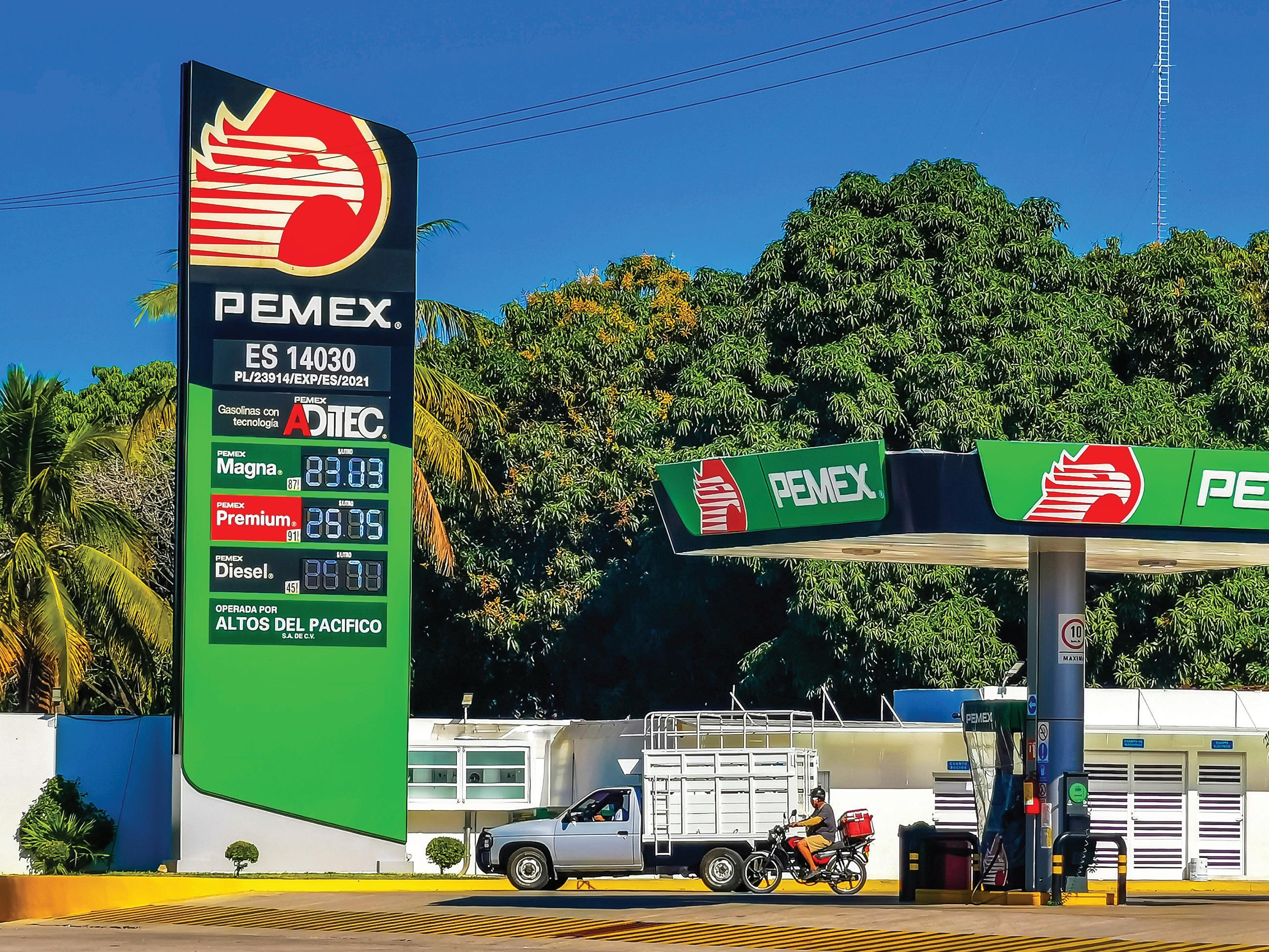
This commitment, however, will require substantial funding, which means reforming Mexico’s tax system and improving tax compliance must be at the forefront of her agenda. Health reform, if effectively implemented, could also serve as a model of success to help bolster public confidence in her administration and garner further support for other social initiatives.
Another economic challenge that looms large for Sheinbaum is Pemex, the stateowned oil company that has become a financial black hole for Mexico. With over $100 billion in debt, Pemex is the world’s most indebted oil company. Under AMLO, it received significant government bailouts to keep it afloat.
The strategy of propping up Pemex, including building the costly Dos Bocas refinery, was aimed at making Mexico energy self-sufficient, but it came at a high price for the nation's finances and its progress towards clean energy. These measures, while politically popular, have drained resources from other critical sectors, including healthcare, education, and infrastructure development.
Sheinbaum’s environmental background suggests that she may prefer a greener energy approach, but her stance on Pemex remains complex. She has publicly supported ramping up oil production, which seems in conflict with her climate-conscious identity.
However, Sheinbaum’s hands may be tied. Pemex is so deeply intertwined with Mexico’s economic stability that
its collapse could have disastrous consequences. Increasing oil production could help Pemex generate more revenue, reducing its dependence on government support, but this approach risks delaying Mexico’s transition to renewable energy. Sheinbaum must navigate between the political need to stabilise Pemex and the necessity of advancing Mexico’s renewable energy capabilities.
Sheinbaum’s challenge will be to strike a balance between ensuring Pemex's financial stability and pursuing green energy initiatives. She has promised to invest $14 billion in renewable energy, but without substantial changes to Pemex’s operating model, Mexico’s clean energy ambitions may remain out of reach. Perhaps a gradual shift, where Pemex
becomes a hybrid entity focusing on fossil fuel extraction and investing in renewable projects, could allow Mexico to transition without economic shock.
Claudia Sheinbaum’s presidency also represents a significant step forward for women in leadership in Mexico. Her inauguration marked a turning point in a country where politics has long been a male-dominated domain. The statement that “It’s time for women” signifies not only a break from the past but also an opportunity for Mexico to benefit from diverse leadership perspectives. Her leadership could inspire women across the country, especially in rural and marginalised communities, to engage more actively in politics and pursue leadership roles.
Sheinbaum's approach to governance, which draws on her scientific background and emphasises data-driven decisionmaking, could introduce a new era of leadership style that prioritises evidence over rhetoric.
Her election also paves the way for other women in Mexico to aspire to political leadership, breaking down barriers in a society still grappling with significant gender inequality. Furthermore, Sheinbaum’s visibility as a female leader has a powerful cultural impact, challenging traditional gender norms and reshaping the political landscape to be more inclusive.
She has inherited a country full of contradictions: a nation with vast economic potential, yet hamstrung by organised crime and corruption; a society with a rapidly growing middle

class, yet still plagued by inequality; and a country rich in natural resources, yet failing to capitalise on green energy opportunities. As the world watches, Sheinbaum has the chance to set Mexico on a new path of prosperity, security, and justice.
But success will depend on her ability to make difficult choices. Breaking from AMLO’s legacy on issues like judicial reform, Pemex, and the clean energy transition could open new possibilities for the country, but it would require standing up against entrenched political structures and risking her current popularity. The task before her is monumental: balancing the books while expanding social services, reducing cartel violence while stimulating economic growth, and championing a clean energy future while stabilising Pemex. Each of these challenges requires not only strategic planning but also political courage and the ability to inspire a nation to embrace change.
Mexico's new leader must navigate complex relationships with her predecessor’s political influence, with her country’s security apparatus, and with international investors and neighbours. If she manages to strike the right balance, Sheinbaum could well be remembered as the president who led Mexico into a new era, one defined by opportunity, progress, and unity.
For now, the world watches and waits as Sheinbaum begins her journey to reshape Mexico’s destiny. A successful presidency could turn Mexico into a model for sustainable development, equitable social policy, and inclusive leadership, potentially setting a precedent for other nations facing similar challenges in an increasingly turbulent world.
Rabeh, under Mohammed Alsolami's leadership, aims to expand its services and reach new local and global markets

Mohammed Alsolami, an entrepreneur, AI technology consultant, and distinguished researcher in AI and fintech, represents technological leadership and financial innovation in Saudi Arabia.
After a long journey towards development, working on advanced tech projects, and pursuing postgraduate studies in artificial intelligence and robotics, he decided to turn his expertise and ideas into a tangible reality.
In his quest to identify opportunities that fill market gaps and deliver real value, Mohammed Alsolami recognised the need for an advanced financial platform that provides innovative solutions to support entrepreneurs and investors. This realisation led to the founding of "Rabeh,” a oneof-a-kind financial platform designed to empower individuals and businesses to achieve their investment aspirations with ease and efficiency.
Rabeh has emerged as a technological revolution in the financial world, by offering services like crowdfunding, crowd investment, and an innovative system for real-time ownership exchange. This is built to enhance efficiency, security, and transparency, making it the ideal destination for supporting small and medium-sized enterprises.
Rabeh goes beyond traditional financial platforms by leveraging cutting-edge technology to act as an aggregator of funding solutions and a realtime exchange platform for investments. At its core, Rabeh combines AI, blockchain, and datadriven analytics to provide a seamless, secure, and innovative experience for both investors and entrepreneurs.
Innovation is at the core of Rabeh's success. The platform uses advanced technologies like AI to analyse data and make smart investment decisions. It also provides users with an interactive dashboard to manage their investments effortlessly.
One of Rabeh’s standout features is its focus on real-time ownership exchange, allowing investors to buy and sell shares with full transparency and
speed. This innovation has captured the attention of investors and entrepreneurs worldwide.
Rabeh uses advanced AI algorithms to analyse market trends, evaluate investment opportunities, and provide real-time recommendations to users. By leveraging machine learning models, the platform identifies potential risks and helps investors make informed decisions based on historical data and predictive analytics. The AI engine also matches investors with projects that align with their financial goals, risk appetite, and industry preferences.
Every transaction on Rabeh gets recorded on a blockchain ledger, ensuring transparency and preventing fraud. Automated smart contracts streamline funding processes, enforce compliance, and ensure secure ownership transfers. The use of blockchain guarantees a tamper-proof record of all transactions, building trust among users.
Rabeh’s real-time ownership exchange allows investors to buy and sell equity stakes in startups with speed and ease, creating liquidity in what is traditionally an illiquid market. With blockchain integration, ownership transfers and settlements are completed instantly, eliminating delays and reducing transaction costs.
The platform’s cloud-based
infrastructure ensures reliability and scalability, enabling Rabeh to support thousands of users and transactions simultaneously. Advanced encryption protocols protect sensitive financial data, ensuring user privacy and compliance with global regulations.
Entrepreneurs and investors can manage portfolios, monitor performance, and access analytics through intuitive dashboards. Users can tailor their dashboard experience to focus on key metrics that matter most to their financial goals.
Rabeh
Rabeh aggregates diverse funding solutions, making it a one-stop shop for entrepreneurs seeking capital and investors looking for opportunities. Entrepreneurs can raise funds from a pool of small investors, democratising access to capital.
The platform connects startups with institutional investors, providing access to larger funding pools and mentorship. Rabeh's technology also enables cross-border funding, allowing entrepreneurs to tap into international markets and investors to diversify their portfolios.
By automating complex processes like due diligence, compliance checks, and contract execution, Rabeh reduces the time and costs associated with securing funding and managing investments. Entrepreneurs, including those in underserved markets, can access
funding opportunities without the barriers of traditional financial systems.
The platform offers tools for realtime performance tracking, enabling stakeholders to make agile decisions and optimise returns.
Rabeh is not just a platform but a financial ecosystem that integrates innovation, accessibility, and sustainability. It wants to build bridges between investors and entrepreneurs from different regions, fostering innovation and economic growth, apart from making sophisticated investment tools accessible to a broader audience, including first-time investors.
The venture supported over 30 startups in its first year, contributing to job creation and strengthening the local economy. Apart from achieving a financial valuation exceeding 30 million SAR in a short period, Rabeh is also crafting successful exit strategies for startups. The company is on track to surpass a valuation of 100 million SAR in the coming days.
Rabeh, under Mohammed Alsolami's leadership, aims to expand its services and reach new local and global markets. The vision is not just to provide a financial platform but to create a comprehensive ecosystem that supports innovation and economic sustainability.

ANALYSIS CHRISTIE AUCTION TECHNOLOGY
Artists worry that work produced by artificial intelligence is diluting their market and hence diminishing possibilities for human producers
Christie's is pushing limits—and buttons—with its first-ever auction dedicated solely to artificial intelligence-generated art, at a turning point for the art market. Dubbed "Augmented Intelligence," the event boasts 34 AI-assisted pieces and sparked intense controversy since over 6,000 artists signed an open letter calling for its cancellation.
The legal scene is still in flux. Are works produced by artificial intelligence transforming inventions or are they derivative works violating copyright law? Courts haven't decided unequivocally yet
Running from February 20 to March 5 in New York, the auction featured modern artists like Refik Anadol, Vanessa Rosa, and Sougwen Chung as well as pieces by pioneers in artificial intelligence art including Harold Cohen.
The collection seeks to question conventional ideas of artistic authorship in a time when robots are progressively part of creative activities. Deeper concerns, meanwhile, lurk beyond the surface: Are artificial intelligence models using artists? Is this the dawn of a fresh creative renaissance or a deliberate action by digital interests to upset the art market?
The rapid evolution of artificial intelligencegenerated art in recent years can trace its roots back to the 1970s, when Harold Cohen's AARON programme marked the first step toward machineassisted creativity. Using neural networks and
generative algorithms, artificial intelligence tools create amazing, occasionally frightening pieces of art today. The works at Christie's span several digital, some physical, some both forms.
Alexander Reben's "Untitled Robot Painting 2025," one of the most divisive pieces, alters as bids come in with a robotic arm painting its ultimate shape. To guide robotic brushstrokes, some artists such as Sougwen Chung use motion tracking and EEG headgear.
Refik Anadol, whose "Machine HallucationsISS Dreams" is included in the collection, argues his data originates from publicly accessible NASA photos, therefore negating claims of intellectual property infringement.
The creative process is itself changing. By evaluating and reinterpreting historical works, photography, and abstract visual aspects, artificial intelligence algorithms let artists interact with data sets in fresh ways.
Some view artificial intelligence as a collaborative tool rather than a tool, pushing boundaries in generative design. For conventional artists, however, the whole concept of robots creating art feels like an existential challenge—one that would make human creativity extinct.
The opposition has been quick and relentless, though. Signed by hundreds of artists, the open letter claims that art created by artificial intelligence is based on pilfers. AI models such as Stable

Diffusion, Midjourney, and DALL-E were trained on large datasets including copyrighted works— without permission or pay.
"These models, and the businesses behind them, exploit human artists, using their work without permission or payment to build commercial AI products that compete with them," the letter read.
Artists worry that work produced by artificial intelligence is diluting their market and hence diminishing possibilities for human producers. Christie's auction is seen by them as a risky precedent, supporting a system that lets technology companies profit off of unpaid labour.
For many, the issue goes beyond the competition artificial intelligence presents to include more general consequences for creative authenticity.
Could the part AI plays in art cause originality to fade? Years of creating original styles and approaches by artists find machine-generated work flooding galleries and internet venues. Many worry that without their knowledge or control, their artwork is being repacked under fresh names. The difference between human-made and machine-generated works is blurring as artificial intelligence-generated art rises in popularity.
The legal scene is still in flux. Are works produced by artificial intelligence transforming inventions or are they derivative works violating copyright law?
Courts haven't decided unequivocally yet. Though some lawsuits are pending, there is no agreement on whether teaching artificial intelligence current art counts as fair use or infringement.
The AI sector contends that machine learning algorithms synthesis new outputs by evaluating patterns, not "copy" images in a conventional sense. But that difference seems intellectual to artists. What counts is that, although produced at a fraction of the time and expense, AI-generated works are sometimes exactly like those painstakingly made by people.
Intellectual property law has faltered in keeping pace. Some law academics contend that, given the user bears ethical responsibility, artificial intelligence models should be handled as any other instrument. Others contend that artificial intelligence firms ought to answer for teaching their models on copyrighted works without permission.
The ambiguity around AI-generated works has caused concern among galleries and collectors, many of whom are not sure how to classify these pieces regarding ownership rights.
Issues of cultural appropriation have also emerged. Indigenous artists withdrew from a Brisbane art competition in 2024 because of concern that works created by AI could replicate their forms without appreciating their cultural relevance. Is it theft if artificial intelligence systems
ANALYSIS CHRISTIE AUCTION

can replicate brushstroke, voice, or trademark style of an artist?
The evolution of originality
The debate surrounding AI-generated art revolves around the fundamental question of what constitutes an artist, extending beyond mere copyright concerns. While some perceive AI as a tool akin to a paintbrush or camera, augmenting human creativity rather than replacing it, others view it as a threat to artistic integrity.
Proponents of AI in art emphasise the continued importance of human artists, who curate, refine, and guide AI's output. As technology advances, the lines between artist and coder blur, with some artists embracing AI as a creative collaborator, using algorithms to shape their concepts. Conversely, others reject AI-generated art as a soulless imitation devoid of human intent.
Pindar Van Arman's "Emerging
Faces" exemplifies this shift. The artwork features two AI agents: one generating a face, the other disrupting the process of facial recognition. It prompts contemplation on whether machines can develop aesthetic sensibilities or if human involvement is essential for creativity. As AI's capabilities expand, so do the philosophical questions surrounding artistic expression and authorship.
Reinvention or regulation?
Some advocate a middle ground whereby ethical rules, open data use, and financial models that pay artists whose work advances artificial intelligence training are established. One possible blueprint offered by the open-source software movement is where licencing systems let contributors share in group advantages.
The development of ethical AI training guidelines, which demand
businesses to acquire permission before downloading publicly available artworks for training uses, is one suggested fix. Another is financial pay for artists whose works are used to train artificial intelligence models, thereby establishing a royalty-based system guaranteeing creators share in the gains.
Big Tech has a mixed record on self-regulation, but businesses like IBM have pioneered more exacting methods for artificial intelligence ethics. Could the art scene match? Transparency in AI-generated work could be a positive start toward making sure collectors and viewers know how works were created.
The Christie's auction is not just a sales event; it is a referendum on the future of creativity. AI is transforming the very concept of art, regardless of whether it is embraced or opposed. The issue extends beyond ownership of the final product to encompass
control over the creative process itself.
For artists, the choice is clear: adapt or risk obsolescence. However, adaptation must not equate to capitulation. The art industry must demand legal clarity, hold AI developers accountable, and ensure that technology enhances rather than undermines human creativity.
The battle over AI art is fundamentally about safeguarding the essence of artistic expression, not merely about machines. This struggle is far from over. The Christie's auction debate marks not the end but the beginning of a protracted and challenging dialogue between AI and human creativity—a dialogue that will shape the future of art.
The Christie's auction is more than a high-profile sale; it is a defining moment in the intersection of artificial intelligence and artistic expression. The controversy surrounding the event reveals the depth of concern about AI’s role in creativity, intellectual property, and the broader art market. While AI-generated art presents exciting possibilities, it also raises fundamental ethical and legal questions that must be addressed before it is widely accepted.
A key takeaway from this debate is that AI-generated art is not inherently problematic—it is how AI is trained and how the results are used that sparks controversy. The unauthorised use of human-created works to train AI models is the crux of the issue. Artists, whose work has been scraped from the internet without their consent, are rightfully frustrated.
However, an outright rejection of AI in art may not be the solution. History has shown that new technologies—photography, digital tools, and even computer-generated
A breakdown of the most popular AI art tools among artists (In Percentage)
DALL-E 2

Source: aiprm.com
imagery (CGI)—have faced initial resistance before being integrated into artistic practices.
Many artists are already finding ways to use AI as a collaborative tool rather than a replacement. The challenge now is to establish a framework that ensures ethical AI use while promoting innovation.
Legal clarity will play a crucial role in shaping the future of AIgenerated art. Courts worldwide are currently grappling with copyright implications, and while no definitive rulings have emerged, it is clear that intellectual property laws must evolve to reflect this new reality.
The creation of licensing structures, similar to those used in music sampling, could be one approach. Artists whose works contribute to AI training datasets could receive royalties, ensuring that their labour is not exploited without compensation.
Beyond legal considerations,
transparency is essential. Artists and collectors alike need to understand whether an artwork was created by a human, an AI, or a hybrid of both. Some platforms are already implementing AI disclosure policies, but industry-wide standards must be established.
Labelling AI-generated works and ensuring that datasets are ethically sourced will help maintain trust in the art market.
On a cultural level, the discussion about AI-generated art extends beyond ownership and legality—it touches on what it means to be creative. Art is not simply about output; it is about intent, interpretation, and the human experience.
While AI can generate images, music, and even literature, can it truly create art in the way a human does? The answer to this question will shape how society chooses to engage with AI in artistic spaces.
Ultimately, AI-generated art represents both a challenge and an opportunity. The technology will continue to evolve, and artists, collectors, and institutions must decide how to navigate this shift.
The Christie's auction is not the final word in this debate, but rather the beginning of a larger conversation.
If handled responsibly, AI could become a powerful tool that enhances rather than diminishes human creativity. However, without clear ethical guidelines, it risks undermining the very foundation of artistic expression. The art world must now act to shape the future before AI does it for them.


Georgian startups are attracting the attention of technologists worldwide
The small Caucasian country of Georgia has emerged as the new tech hotspot. In 2020, only 1,971 IT companies were operating in the nation, with 79% of them being locally owned. Fast forward to 2024, the tally has risen to 24,117, with 84% now being international.
A recent study by Galt & Taggart, Georgia’s leading investment banking and management firm, highlights the information and communication technology (ICT) sector as the country’s fastest-growing industry since 2022. This growth has been driven largely by the IT sub-sector, which recorded a turnover of GEL 2.4 billion ($816 million) in 2023 – a significant boost to Georgia’s economic landscape. Foreign companies are now increasingly relocating to Georgia, with many of them moving their entire operations. Currently, 72 companies are classified as large or mediumsized by the small Caucasian country's government, while the majority of the remaining businesses are foreign sole proprietors.
The sector’s growth was initially spurred by tax incentives introduced in 2020. To strengthen Georgia’s appeal as a regional hub and attract multinational firms, the Caucasian country's government lowered income tax rates to 5% for companies with international status.
Georgia’s Innovation and Technology Agency (GITA) in August 2024, announced about launching of an information technology sector development project in the country’s regions. Within the scope of the "Do IT with the EU" project financed by the European Union, the GITA will hold information meetings in 10 regions of Georgia, aiming to strengthen regional IT ecosystems, develop the information technology sector and strengthen digital skills across the country.
"Do IT with the EU" is an IT ecosystem development project implemented by GITA and supported by the European Union, enabling over 1300 individuals to acquire international certifications and enhance their competitiveness in the global tech market.
As per Kakha Samkurashvili, head of sector research at Galt & Taggart, while tax incentives were vital, the war in Ukraine reshaped the global IT landscape, creating unforeseen opportunities for Georgia.
“Following the war in Ukraine, many IT companies and developers relocated to Georgia, primarily from Belarus and Russia. The surge in code production and the number of developers in the country directly aligned with the peak influx of migrants,” Samkurashvili says.
According to various studies, the peak of emigration to Georgia – totalling approximately 100,000 people – was recorded in the first and second quarters of 2023.
Samkurashvili noted that it was during this period that the IT sector experienced its highest growth rate.
In fact, the Georgian government, recognising the importance of creating a hub of technological excellence in the South Caucasus, in December 2023, passed laws that grant "International Company Status" to overseas technology companies, offering exemptions on property and dividends tax and a reduced 5% tax rate on profits and personal income.
The country also runs a "Virtual Zone" for the IT sector. The zone is known for conferring benefits including zero corporate tax and no VAT. Georgia supports international businesses with smooth company registrations, fast access to new bank accounts and high levels of privacy.
Georgia also operates an FDI programme, offering cashback payments for investing companies. Lineate, a New Yorkheadquartered global software consultancy joined the programme last November after making an investment of $700,000 and creating at least 50 jobs at its new base in Tbilisi, Georgia’s capital.
Talking about GITA, the agency has invested $14 million in around 240 startups since 2018, helping to create a pool of globally scalable tech companies. The top beneficiaries have reportedly raised 10 times the level of GITA’s investment through additional private capital.
GITA’s grant programme has emerged as the most powerful innovation engine in the country, targeting first-time entrepreneurs with financial support, training, mentoring, networking opportunities, and access to Silicon Valley experts.
Notably, GITA offers "Startup Matching Grants" of up to $60,000 with just 10% co-financing and "Innovation Grants" for regions of up to $10,000, making it easier

for aspiring entrepreneurs to kickstart their ventures.
"Georgia’s tech sector is booming and has doubled in scale since 2016, employing 36,707 people in 2022, a rise of 20% yearover-year. Georgia’s information and communications (ICT) sector grew 49.9% (in terms of GDP) between 2021 and 2022, according to the National Statistics Office of Georgia," reported Bloomberg back in December 2023.
Georgian startups are attracting the attention of technologists worldwide. At "Web Summit 2022," one of the world’s largest technology events, Georgia-based AI platform Theneo fended off competition from 2,300 startups to win the prestigious PITCH contest. As a measure of the winner’s potential, 2021’s PITCH winner, medtech startup Smartex, has since raised $25 million in funding. Theneo has already raised $1.5 million in US investment.
"The growing maturity of Georgia’s

technology ecosystem was confirmed in 2021 with the first foreign acquisition of a homegrown startup, Pulsar AI. An advanced conversational AI platform that enables car dealerships to engage with customers, it was bought by American automotive software giant SpinCar, now known as Impel. Pulsar AI was one of the first Georgian startups to be supported by GITA," Bloomberg added.
The country’s Association Agreement with the EU, which includes a "Deep and Comprehensive Free Trade Area" and visafree travel, has further enhanced its appeal to entrepreneurs and investors seeking access to European markets.
Talking about the flourishing Georgian startup scene, Tether, an international Blockchain giant, invested $25 million in the ecosystem last year, covering the entire CIS region from its Tbilisi office.
Marco Dal Lago, Head of Expansion at Tether, praised Georgia’s entrepreneurial spirit and digitisation efforts.
“Georgia is an English-speaking country, so Gen Z and Millennials interact and speak excellent English. It’s full of talent, with many universities and technology-driven individuals who have studied abroad or have even built startups,” he noted, while adding, "The National Bank of Georgia is interacting with a lot of industry players to create a regulatory environment open to all parties. These continuing interactions should allow digital-asset companies to come to Georgia, making it a neutral state where investment flows and entrepreneurs can find a safe place to foster economic growth.”
The nine tech parks managed by GITA provide inclusive spaces for idea generation and business development, benefiting up to 32,000 individuals, including 52% females, between 2020 and 2023 alone.
GITA's efforts extend beyond financial support, with significant investments in Georgia's education system to enrich the country's startup ecosystem at its roots.
Apart from supporting universities where students learn about business and develop digital skills, the agency closely collaborates with top universities in Georgia, establishing new educational courses, pre-acceleration programmes, hackathons, and tech boot camps. Some of the prominent examples are Business and Technology University offering a hardware product prototyping course with GITA and Kutaisi International University is doing summer camps.
The Georgian startup ecosystem is also benefitting from the presence of an active angel investor network, Axel, the Georgian Angel Investor Network, which is a member of the European Business Angel Network and the Global Business Angel Network.
Along with GITA, this network has been crucial in connecting startups with potential angel investors, organising events and nurturing a vibrant investment culture within the ecosystem. The 2024 chapter of the Investment Ecosystem Conference brought together up to 500 angel investors, 3,000 guests, and over 30 speakers, further solidifying Georgia’s position as an emerging startup hub. In the same year, a partnership was forged between GITA, the Bank of Georgia, and 500 Global, a world-renowned accelerator and venture capital firm.
Around 500 Global has rebranded its accelerator programme in Georgia to “500 Global in Eurasia,” reflecting its commitment to nurturing startups across the region. In partnership with GITA and Bank of Georgia, 500 Global has successfully accelerated up to 70 startups across five batches since 2020. The latest
batch of the programme featured nine tech startups from six countries, focusing on web3 investment, AI-powered talent acquisition, and educational technology.
GITA has recently announced significant developments and initiatives to foster the growth of the Georgian startup ecosystem as part of its GITA 2.0. These initiatives include launching new early-stage acceleration programmes, additional tax incentives for innovative startups and SMEs, establishing Excellence Centres in priority technology areas, and creating a comprehensive digital platform called “Start-Up in Georgia.”
GITA will be mentoring 160 startups annually through four early-stage acceleration programmes, which will incorporate grants and the participation of top international accelerator experts to guide the programme. Additionally, it will offer new tax incentives, including 0% tax rates for innovative startups, 500% tax credits, and 30% cashback for innovative startups and SMEs.
The prioritisation of key technology areas, including Artificial Intelligence (AI) and Agritech, and the establishment of Excellence Centres to support research-based innovation and R&D commercialisation, are all set to signal to the world that Georgia is committed to advancing the region’s technological capabilities.
Russia’s full-scale invasion of Ukraine in 2022 impacted one of the leading international companies, Exadel. The war transformed the company’s newly opened Georgian office into one of its major strategic locations.
“We had our offices in Belarus and Ukraine, but the war has brought significant changes and challenges. While we have managed to keep our offices open,
the situation for developers working in Ukraine is far from easy; periodical power outages and other disruptions make the work difficult. Additionally, there is an emotional impact on everyone,” said George Khoshtaria, a marketer at Exadel, while interacting with World Finance.
Exadel, an international technology company with over 25 years of experience in the digital market, entered Georgia in 2021.
According to Khoshtaria, there were a few reasons why Exadel initially decided to enter the Georgian market.
“One of the main reasons is the tax incentives offered to international companies. The second is the high proficiency in English among developers, who are generally considered some of the strongest. Our clients are American and European companies that require highly qualified developers for international projects, and we can find such talent in Georgia. This is why Exadel operates in the country," Khoshtaria said.
The Ukraine conflict has now proved the strategic importance of the Georgian office, as it became essential to relocate some operations from Ukraine and Belarus.
Georgia, beyond being a base for companies like Exadel, has also become a new home for thousands of foreign developers from Belarus.
International companies have also created numerous opportunities in the Georgian socio-economic set-up, where the average nominal annual salary is GEL 24,000 ($8,750) and the unemployment rate stands at 13.7%. By 2023, the number of employees in Georgia’s IT sector reached 30,200, a sharp increase from just 5,000 in 2021.
The average annual salary in the industry too has doubled, now standing at GEL 83,280 ($30,400). Nika Kapanadze, an economist at the Policy and Management

Consulting Group (PMCG), states that the arrival of international companies has played a crucial role in the country’s economy.
“International IT companies serving clients across different continents hire Georgian personnel and conduct operations locally. This effectively acts as an export of labour, and it is crucial that these individuals are physically present in Georgia. The money generated stays within the country’s economy, contributing significantly to its growth,” he said.
Lineate is another international software development company that entered the Georgian market in 2022, establishing a regional hub to expand its business across Europe.
With an investment of $14 million, the company has contributed to the country’s technological development by creating 200 new jobs, apart from launching the Lineate Dev School programme to support aspiring developers. The company collaborates with schools and leading Georgian universities to promote education in the field.
Giorgi Tsikolia, Vice President at Lineate outlined several reasons the

company established its regional office in Georgia.
“The company found hiring qualified staff in Georgia highly attractive. Additionally, the tax system is quite flexible, especially regarding technology.
Furthermore, Georgia’s geography provides the opportunity to access both European and Asian markets,” Tsikolia said.
However, the official also noted the importance of monitoring geopolitical risks.
He said, “We, like all international businesses engaged in the region, are concerned about the escalation of hostilities across the wider geography. Similarly, the company is actively monitoring political developments in Georgia."
In March 2024, the ruling Georgian Dream party reintroduced a Russianstyle draft law on transparency of foreign influence, making it mandatory for nongovernmental organisations receiving over 20% of their funding from foreign sources to register with the Ministry of Justice as organisations serving the
interests of a foreign power.
Source: Statista



Although President Salome Zourabichvili vetoed the law, Parliament overruled her decision. Despite protests and international condemnation, the Speaker of Parliament signed the law on June 3, 2024.
The protests last year lasted nearly two months and were met with excessive force by government. The crackdown and the contentious law have strained Georgia’s relations with the West. The country’s EU accession process has stalled, along with the promised financial assistance.
The United States, on the other hand, imposed sanctions on two high-ranking Georgian officials for their involvement in human rights abuses during the violent suppression of protests. The US State Department also introduced visa restrictions on more than 60 individuals and their families, citing their role in undermining democracy in Georgia.
In the October 2024 parliamentary elections, the ruling Georgian Dream party declared victory, igniting further protests across the country, along with international condemnation, over alleged election fraud. These developments have
sparked widespread concern in Georgia, with fears that the impact will extend beyond politics, affecting the business environment and the overall well-being of the population.
Kapanadze is convinced that the overall political environment must remain stable, with no ambiguity regarding Georgia’s Western orientation.
“I wouldn’t say that companies already established here will leave, but the real concern is that talent may start to exit the country as they no longer feel comfortable. We are talking about high-income individuals who seek a comfortable lifestyle. Now, with discussions around cancelling the visa-free regime with Europe, this could deliver a significant blow to the entire economy, especially the IT sector,” Kapanadze explained, while further emphasising that maintaining Georgia’s reputation is key to becoming a regional IT hub.
“We are the connecting link between the West and the East. If this connection is severed with either side, the potential to thrive as a hub will disappear,” he concluded.
Petroleum Trading Lao currently deals with five categories of products: diesel oil, Benzene Regular 91, Benzene Super 95, bunker oil, lubricant oil and petrochemical products
Petroleum Trading Lao Public Company (PTL), established by prominent business figures Chanthone Sitthixay and his better half Savanhthong Phongsavanh, has achieved outstanding goals in terms of ensuring Laos' overall socio-economic development. The company supplies over 265 million litres of fuel to its consumers annually through its 118 service stations and five branches across the country. Petroleum Trading Lao operates five fuel storage sites with a total storage capacity of 5.5 million litres.
Regarding the company's leadership, both Chanthone Sitthixay and Savanhthong Phongsavanh have extensive experience in various types of businesses, including the
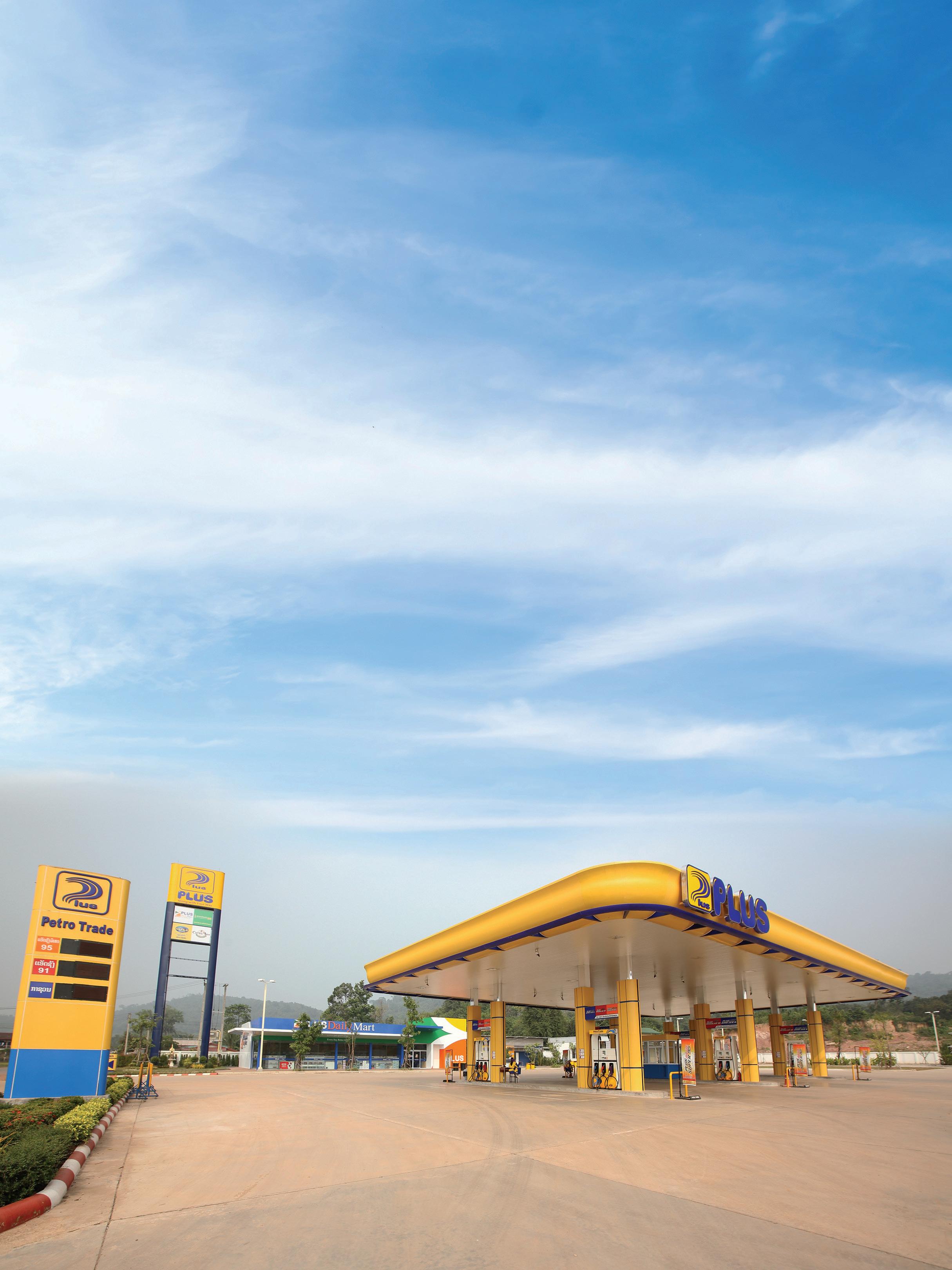
import/export of a wide range of products in Laos. PTL was established in 2008 and has been the second-largest company in the market by market share and revenue since 2011.
Petroleum Trading Lao currently deals with five categories of products: diesel oil, Benzene Regular 91, Benzene Super 95, bunker oil, lubricant oil and petrochemical products. The company sells petroleum through its own retail gas stations under the "PLUS" brand, which currently operates 110 stations across the country. These stations are managed under two models: Company Owned, Company Operated (COCO) for 30 stations, and Dealer Owned, Dealer Operated (DODO) for 90

stations. Additionally, the company also directly sells its oil-based products to project clients, industrial factories, and wholesalers in Laos.
PTL is the first company in Laos to be certified for outstanding international service quality. At present, the company has 300 fuel trucks. Furthermore, under Petro Trade, it is listed as Khouanchay Trading Export-Import Company Limited, which has brought various consumer products to meet market demand through its 20,000 retail stores across the country.
Since 2009, PTL has experienced rapid growth due to the vision of its founders and the executive team, who focus on controlling the quality of products and services. The company imports petroleum from well-known global suppliers through Thailand, Singapore, Vietnam, and Malaysia.
In 2012, the company launched a new type of station designed to meet the daily needs of people in cities, providing convenient, quick, and safe services. PTL has since
expanded its stations, increasing the total number of gas stations to cover the entire country, making it the second-largest in Laos for two consecutive years.
In 2013, the company increased its registered capital from LAK 75.60 billion to LAK 350 billion. This increase in registered capital was aimed at expanding additional stations, improving product quality control, and enhancing organisational efficiency to meet international standards (ISO 9001:2015, 14001:2015, and 45001:2018), and to become a professional organisation capable of serving the ASEAN Economic Community (AEC). PTL also improved its gas transport system and enhanced employees’ knowledge. From 2014 to the present, the company has continued to maintain high-quality products and develop services to improve its reputation. The depots now can store up to 5,610,000 litres of oil domestically, and the company leases two seaport terminals in
Vietnam with a storage capacity of up to 100,000 metric tons. The total number of gas stations is 110.
The company has also increased its registered capital by issuing common shares through an initial public offering (IPO) on the Lao Securities Exchange. Petrotrade was also in the news recently for signing a Memorandum of Understanding (MoU) with the government, local authorities, and foreign countries, including the concession project agreement for the Vung Ang Seaport project in the Republic of Vietnam. Additionally, the company is involved in the Vung Ang Seaport Laos-Vietnam Development State Enterprise in partnership with the Lao administration.
PTL has signed an agreement to develop a 2,000 MW coal power plant in the Boualapha district of Khammouane province. It will also conduct a feasibility study for a railway construction project in Khammuan province, a project that will connect to the Vung Ang Seaport.
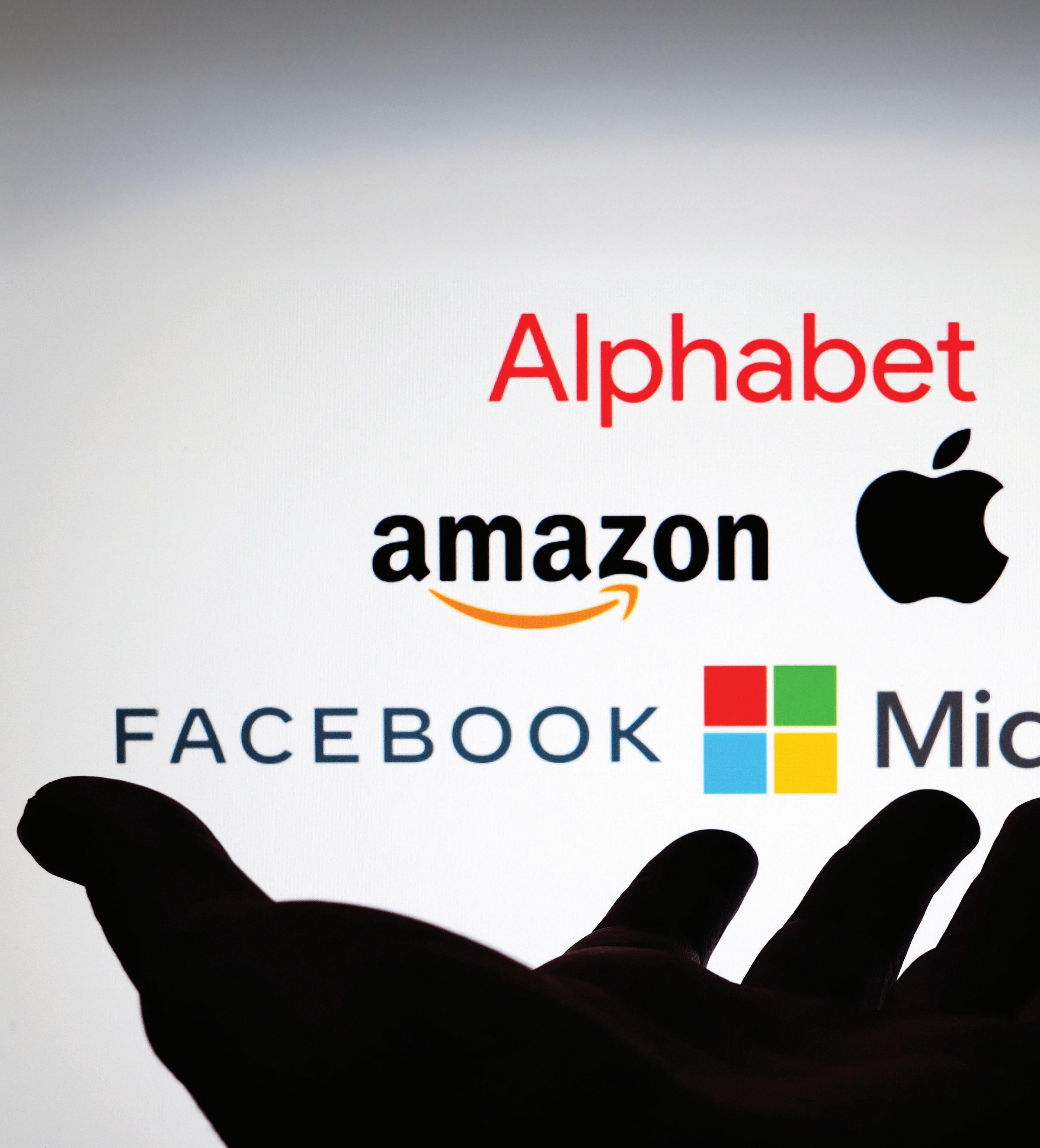

For the EU, competition is just as important as competitiveness when it comes to regulating big tech
IF CORRESPONDENT
The main tool used by regulators to address big tech issues is antitrust legislation. Can they enhance competitiveness without hindering creativity?
September 10, 2024, was a legal catastrophe for Apple and Google. This was a rare victory for the European Union's (EU) regulatory framework in its ongoing battle with big tech. While Google was unable to appeal a €2.4 billion fine for abusing its dominance in online searches, the European Court of Justice decided that Apple should reimburse the Irish tax authorities €13 billion in overdue taxes.
This was not a short-term victory for the EU's former competition commissioner, Margrethe Vestager, a fierce opponent of big tech to her detractors and a champion of fair competition to her allies.
The EU is not alone in its efforts to control the companies that dominate digital search and advertising (Google), e-commerce (Amazon), social networks (Meta), and cellphones (Apple). There is an ongoing global wave of regulatory crackdowns on the dominant digital companies, extending from the United States to India. Governments use antitrust laws, an outdated weapon against this new foe, and the threat of mergers as the last punishment to force violators to comply.
Big tech is the target of such a strong reaction for four reasons. One is the longstanding worry among antitrust scholars and regulators that competition in the tech sector is dwindling as a result of major corporations using their power to hinder new competitors, which stunts economic growth and innovation.
Regulators like Vestager and her US counterpart Lina Khan consider themselves contemporary counterparts of the first US president to take on monopolies, Theodore Roosevelt.
Christopher Sagers, a specialist in antitrust law at Cleveland State University, argues that the antitrust activity of the early 20th century serves as a precedent for the increasing attention Big Tech is receiving due to the rapid changes in technology.
Politics also comes into play. Scepticism toward elites, large corporations, and the media is the foundation of both left and right populism. Tech companies and their executives, like Mark Zuckerberg, the founder of Facebook, serve as prime examples of this.
The 10 Biggest Tech Companies in the World
Rising geopolitical tensions and deglobalization are also forcing governments to control multinational firms, with antitrust laws essentially turning into protectionist instruments. Measures against US IT businesses may be connected to EU concerns about the bloc's decline in competitiveness, which were articulated in a recent report written by former ECB chief Mario Draghi. Platform economies have finally reached a critical point. The degree of horizontal and vertical integration these businesses have attained is remarkable given the growing convergence of digital technology. When you think of Google, it is not only a business but also an
ecosystem that encompasses email, mobile operating systems, and internet search, all within its domain.
The valuation of its parent firm, Alphabet, which holds more than 4% of the S&P 500 stock market index, reflects that. Amazon has created its own e-commerce empire, but Facebook and Apple are similar in their extensive businesses.
Governments are facing pressure to create equal opportunities for software developers and Amazon's suppliers. Regulators are now compelled to act before it's too late due to the emergence of AI.
However, because the consequences are uncertain and the actions taken may be ineffective, this complexity is precisely what makes antitrust litigation against computer firms difficult.
Big tech now has to contend with authorities that have a robust antitrust agenda after decades of unchecked expansion.
Jonathan Kanter, the head of the Department of Justice's (DoJ) antitrust unit, has made it his goal to crack down on digital oligopolies, and Lina Khan, the chair of the Federal Trade Commission (FTC), established herself as a prominent scholar with a seminal paper on Amazon's monopolistic practices.
Regulators believe that antitrust laws have been underutilised for a long time, especially when it comes to possible emerging competitors.
According to John Yun, a former FTC executive and antitrust law expert who teaches at George Mason University, there is a belief that conglomerates are becoming more significant in terms of the scrutiny they merit and that mergers are too permissive.
For the EU, competition is just as important as competitiveness when it comes to regulating big tech. The primary

target of this regulatory onslaught at the moment is Google. The DoJ suggested in October 2024 that dismantling the company would be one way to disrupt its monopoly on internet searches.
Judge Amit Mehta declared that the company had engaged in "monopolistic" behaviour in its quest for search supremacy and had broken antitrust laws.
Google may be forced to provide solutions, like sharing search data with rival companies or even selling off its Chrome browser and Android smartphone operating system, which it uses to advertise its search engine.
Importantly, it might have to renounce a $20 billion exclusivity deal with Apple that sets Google as the default search engine in Safari, the company's browser.
We anticipate a ruling by August, despite Google's anticipated appeal to the Supreme Court.
The antitrust issues with Alphabet don't stop there. A separate DoJ action has also been filed against the company for engaging in anti-competitive behaviour in its digital advertising division. Despite its less well-known nature compared to its dominance in search engines, advertising effectively regulates
supply, demand, measurement, and online ad auctions, making it the company's true asset.
Furthermore, a San Francisco court ordered Alphabet to make Android available to competitors in October 2024, allowing Android apps to be sold on app stores other than Google Play and be paid for using different methods.
According to Sagers from Cleveland State University, Google may be an exception even though break-up orders are uncommon because courts dislike them and governments primarily use them as a negotiating tool to scare
businesses into making concessions.
The company has been accused of a variety of anti-competitive practices and has established power in several industries, so "the situation that Google currently finds itself in maybe uncommonly favourable to a breakup remedy," he says.
He contends that the government's entire thesis is that Google leverages its control of various components of the "ad stack" to drive out rivals and raise costs, making the separation of its ad tech division the most likely course of action. They may be less inclined to act in an anti-competitive manner if the various components are divided up and given to different owners.
Digital platforms have created network effects, which means that they offer a service whose appeal is based on the strength of the crowds: the more people using it, the better it is. This explains why there haven't been many tech breakups. Since the resulting companies would not be able to achieve prior efficiencies or might even attempt to combine again, breaking them up is impracticable and costly.
"The government might argue that if Chrome and Android were broken off into separate firms, which don't directly profit from search engine ad revenues, they would no longer have the incentive to give preference to Google search over competing search engines," says Sagers, indicating that a structural remedy for Google's search dominance would make sense in this particular case.
Apple is facing a DoJ antitrust action for using its dominating position in the US smartphone market—roughly two out of every three cellphones sold in the US are iPhones—to make it more difficult for customers to switch to third-party software and hardware.
The FTC is also pursuing antitrust complaints against Amazon and Meta, alleging that the latter has stifled competition from other shops on its e-commerce platform and favoured its own goods and services, while the former has monopolised social media through its acquisitions of Instagram and WhatsApp.
More concerningly, the regulator has opened an enquiry into digital pricing discrimination, which has the potential to upend one of the digital economy's main tenets: how businesses utilise user data to determine personalised prices on the internet.
The lack of pertinent precedents contributes to the regulatory dilemma. No tech firm has experienced a similar destiny since the dissolution of the US telecom giant AT&T forty years ago.
The demise of Bell Labs, a research centre, is cited by some as one of the reasons why the US was left without a major player in telecom technology, allowing foreign competitors to emerge, even though others think that the separation increased competition in certain areas of the market that drove the internet explosion of the 1990s.
Another risk is that oligopolies can gradually reorganise, as was the case with AT&T, according to Sagers, “Lax merger enforcement allowed the companies that had been broken up to slowly knit themselves back together into larger and larger companies, until once again just a handful of firms controlled all of the communications.”
Other antitrust tools could include requiring interoperability and data portability: “Both might effectively break the impact of network effects that is cementing the market power of large companies,” says Luise Eisfeld, a digital platform expert and finance professor at HEC Lausanne.
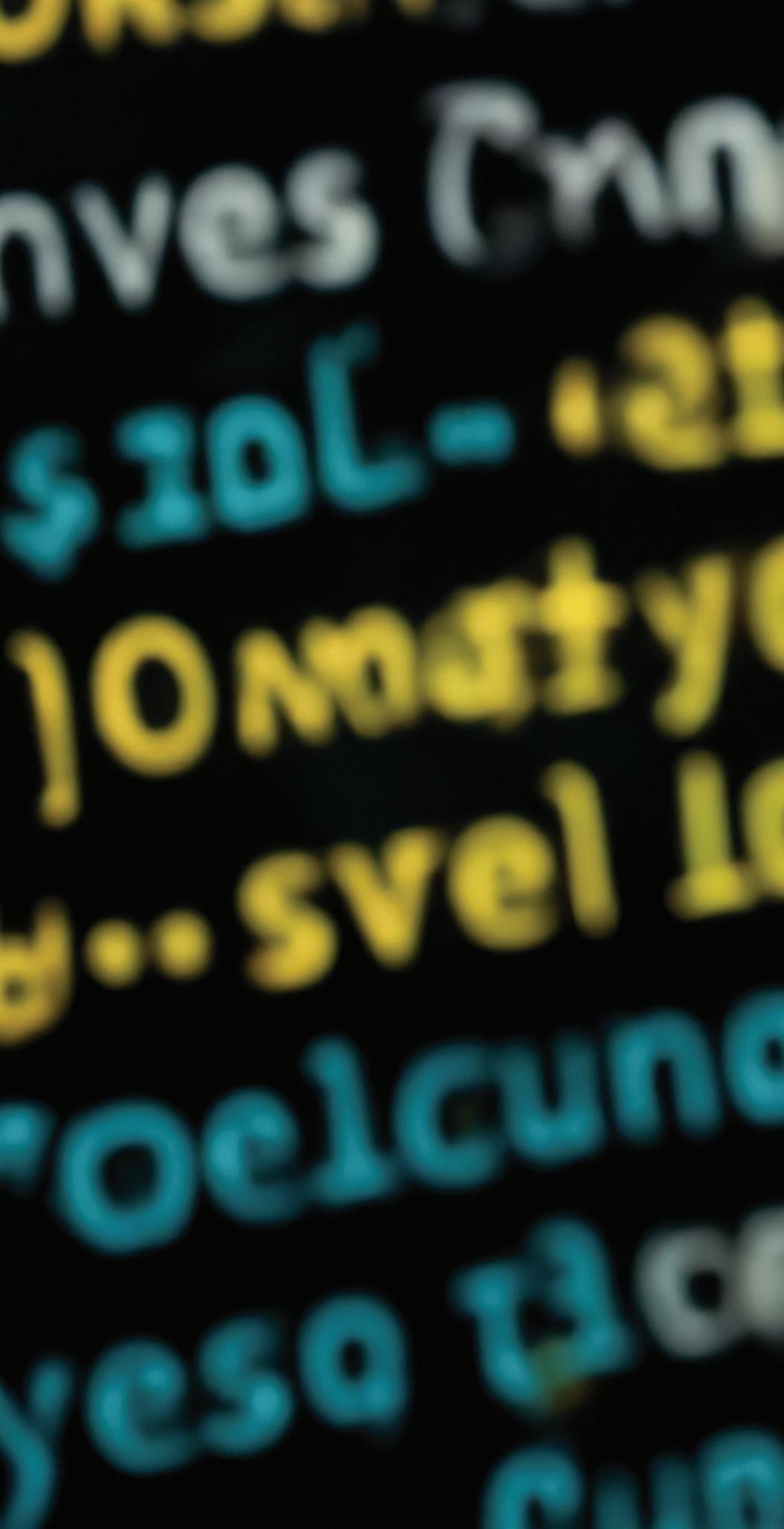
Many critics have accused the EU of using antitrust law as a protectionist instrument because they believe that regulating big tech is as much about competition as it is about competitiveness. The phrase "competitiveness" is used to suggest that we should combat large, non-EU firms in order to permit EU corporations to combine and concentrate, which is extremely risky.
Claire Lavin, a researcher at the antitrust think tank Open Markets Institute, warned that in practice, this approach could inadvertently enable EU-based oligopolies or monopolies to thrive, ultimately harming businesses and consumers. It may also pave the way for the rise of so-called “EU champions,” raising concerns about protectionism disguised as competition policy.
For possible infringement of the EU's Digital Markets Act (DMA), which attempts to stop IT giants from abusing their dominant position and promoting the growth of innovative businesses, the Commission opened an enquiry against Apple, Meta, and Alphabet this spring.

It identifies "gatekeepers," or platforms with at least 45 million users in the EU and a turnover of at least €7.5 billion, as possible offenders. The Commission is looking into whether the businesses permit app developers to provide customers options outside of their storefronts. Google is also being criticised for favouring its own services over competitors in its search results, despite having paid €8.25 billion in EU fines in the past ten years.
The company owns several tools, such as the ad management platform Google Ad Manager, the exchange AdX, and the buying platforms Google Ads and DV360. This creates a conflict of interest that can only be resolved by selling these tools, according to the Commission's claim in a different case that it is using unfair business practices to protect its ad tech business.
Business breakups may potentially disrupt a growing EU tech ecosystem, which the Draghi study identifies as a source of future growth.
Oles Andriychuk, a professor at the University of Exeter who specialises in
competition law and digital marketplaces, believes that "it could backfire, generating criticism and even cancellation of so many new ideas that get developed on the basis of traditional competition law."
Facebook's parent company, Meta, could potentially face fines for purportedly attempting to regulate classified advertising. EU regulators anticipate that the company undercuts competition by connecting Facebook and Marketplace, an e-commerce site.
The company has also come under fire for charging users for ad-free versions of its social networks and using data gathered from third parties to sell consumers advertisements. In addition to its tax issues in Ireland, Apple was hit with its first antitrust fine of around €1.8 billion in March for giving preference to its own music streaming service over rivals.
Vestager led a trust-busting campaign against tech corporations, lobbyists, politicians, and even Eurocrats during his ten years as the EU's antitrust director.
According to Andriychuk, "The European Commission found it increa-
singly difficult to meet the higher evidentiary standards set by the European Court of Justice in its current composition, but the Commission still prevailed in a number of cases."
Teresa Ribera, her replacement, has joined a new commission whose goal is to support the establishment of large digital companies in the EU, as outlined in the Draghi report. In competition cycles, industrial policy terminology had a poor reputation for many years.
Andriychuk notes that people have begun to rediscover the connection between industrial policies and competition since its partial restoration. Ribera will also need to strike a balance between competing priorities, though.
The first superpower to use antitrust laws to limit the influence of its IT companies was China. All of this began in late 2020 when Alibaba co-founder Jack Ma made an anti-government speech.
In addition to China's financial regulator forcing the company to restructure in order to comply with
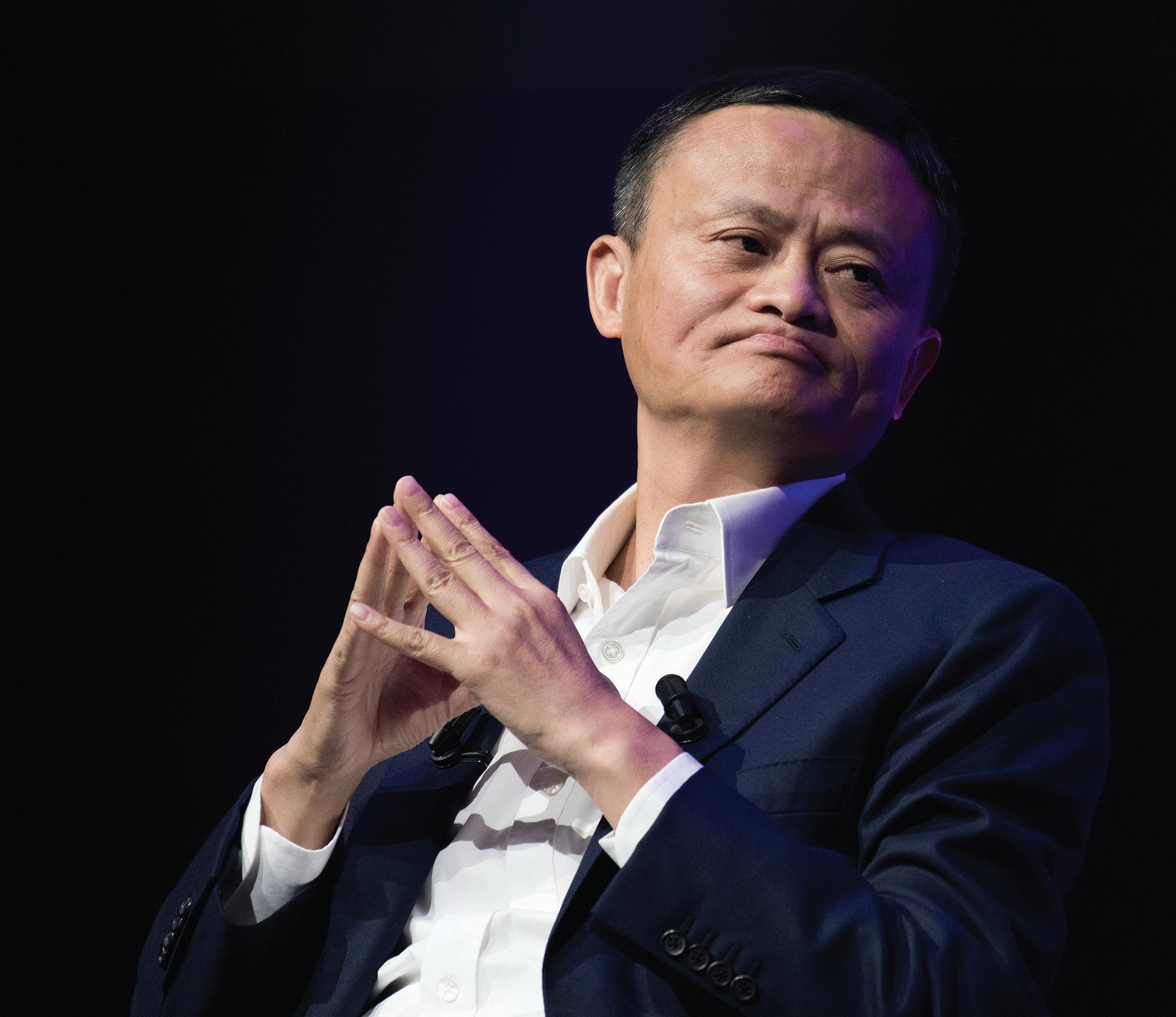
financial regulations and suspending Alibaba's sister company Ant Group's initial public offering (IPO), Jack Ma's rebellious attitude infuriated the authorities to the point that he had to leave the public spotlight.
Wendy Chang, a specialist in Chinese digital policy at the think tank Mercator Institute for China Studies (MERICS), contends that the group's aggressive foray into finance, which went against the government's goal to maintain control of the sector, may have been the catalyst for the intense response.
Alibaba was also the subject of an enquiry by China's competition commi-
ssion, which fined it a record ¥18.2 billion (£1.96 billion) for abusing its dominance in e-commerce. This was only the start of a larger crackdown.
Chinese authorities forced the nation's largest tech companies, such as Tencent Holdings, Meituan, the food delivery company, and ByteDance, the owner of TikTok, to alter their monopolistic tactics after they issued guidelines to curb digital monopolies.
Chang claims that the government's preference for manufacturing investment over services was one factor behind the crackdown. After regulators looked into earlier merger cases and fined Alibaba,
Tencent, and ride-hailing behemoth Didi Global for failing to report deals for antitrust reviews, there was a sharp decline in tech mergers and acquisitions.
Another regulatory guideline advocating for a more robust model of development for the digital sector marked the official conclusion of the clampdown.
Authorities acknowledged the significance of tech platforms for economic growth even as they upheld their commitment to combat monopolies.
One long-term effect is that the Chinese government now has representation on the boards of significant digital platforms, which allows them to influence their

strategy and even obtain their data. Chang asserts that a significant decline in stock market value has already caused considerable harm.
The majority of impacted businesses have not yet recovered, which limits their capacity to develop and expand in industries that the government disapproves of, such as gaming, virtual currencies, and financial services.
Artificial intelligence has evolved beyond the realm of science fiction since ChatGPT's debut in 2022. Globally, billions of people are already using generative AI, which creates texts, images, and movies. Microsoft, Amazon, and Google have taken note, purchasing hundreds of AI start-ups and providing cloud services and cash to AI engineers in return for licenses and stock.
Because creating sophisticated AI models requires expensive processing hardware, energy, and data, established tech companies have an advantage over smaller rivals, which raises fears that they may also control this industry.
One example is Microsoft-backed OpenAI, the company behind ChatGPT. But, AI is also predicted to upend industries where big tech now controls the majority, like search, where OpenAI is creating SearchGPT, an AI-powered search engine that might challenge Google's hegemony.
Restrictions on Google's use of thirdparty data to train its AI models are among the remedies proposed by the US DoJ in its lawsuit against the company, which raised fears that it would utilise its distinct dominance in important areas to create an AI empire.
Should antitrust action be taken against the emerging AI behemoths before it's too late? Given the substantial obstacles for new entrants, some believe that is essential.
“The current dynamics of the AI ecosystem give incumbent tech giants like Alphabet, Amazon, and Microsoft the ability and incentive to entrench their power in AI markets and suppress meaningful competition,” says Jack Corrigan, a researcher at Georgetown University’s Centre for Security and Emerging Technology, while adding, "Competition authorities seem to be aware of these changes. They can keep the market for AI products from becoming as stagnant as the markets for other digital technologies by closely watching how these companies act and stepping in as needed."
Some believe that governments should intervene by providing public resources to reduce the reliance of AI developers on large technology companies.
competitive behaviour stricter. This could include looking into breakups.
While regulators globally have ramped up their efforts to curb the power of big tech, the balance between promoting competitiveness and facilitating innovation remains delicate. Antitrust actions, like those in the European Union and United States, are aimed at preventing monopolies from stifling new competition, but they also risk stifling creativity and technological growth.
The cases against companies like Google, Apple, and Amazon highlight the complexity of regulating industries marked by rapid innovation and network effects. As AI and other emerging technologies grow, regulators face new challenges in ensuring fair competition without hindering the very innovation that drives technological progress.
Moving forward, policymakers must carefully navigate this intricate landscape to create a fair, competitive environment that allows both new and established players to thrive.
Lavin of the Open Markets Institute says that another way to stop oligopolies from controlling AI is to make the laws that control mergers and other anti- editor@ifinancemag.com
Established in 1967, Al Ahli Bank of Kuwait (ABK) has transformed itself into one of the leading Kuwaiti banks in the MENA region, now offering simpler banking. The bank provides personal, corporate, and private banking services, which include a wide array of products and services, as well as a broad range of local, regional, and global investment solutions.
ABK was recently honoured with the title ‘Best Investor Relationship Bank – Kuwait – 2024’ by International Finance. This recognition highlights the bank's commitment to excellence and its strong reputation within the financial community.
Abdulla Al Sumait, Acting Group Chief Executive Officer, and Abdulaziz Jawad, Chief Strategy Officer,
proudly accepted the award during a distinguished ceremony held in Dubai, attended by numerous esteemed entities and institutions.
Expressing his gratitude for this recognition, Al Sumait said, "This award reflects our distinguished record in developing investor relations and our ongoing efforts to adopt transparency in disclosing the bank's operational results and developments."
ABK’s strong management, coupled with its focused strategy, has contributed to its stability and continued expansion across the Gulf region, as well as into markets in Egypt and the UAE.
Al Sumait emphasised that continuous engagement with the investment community, both locally and globally,
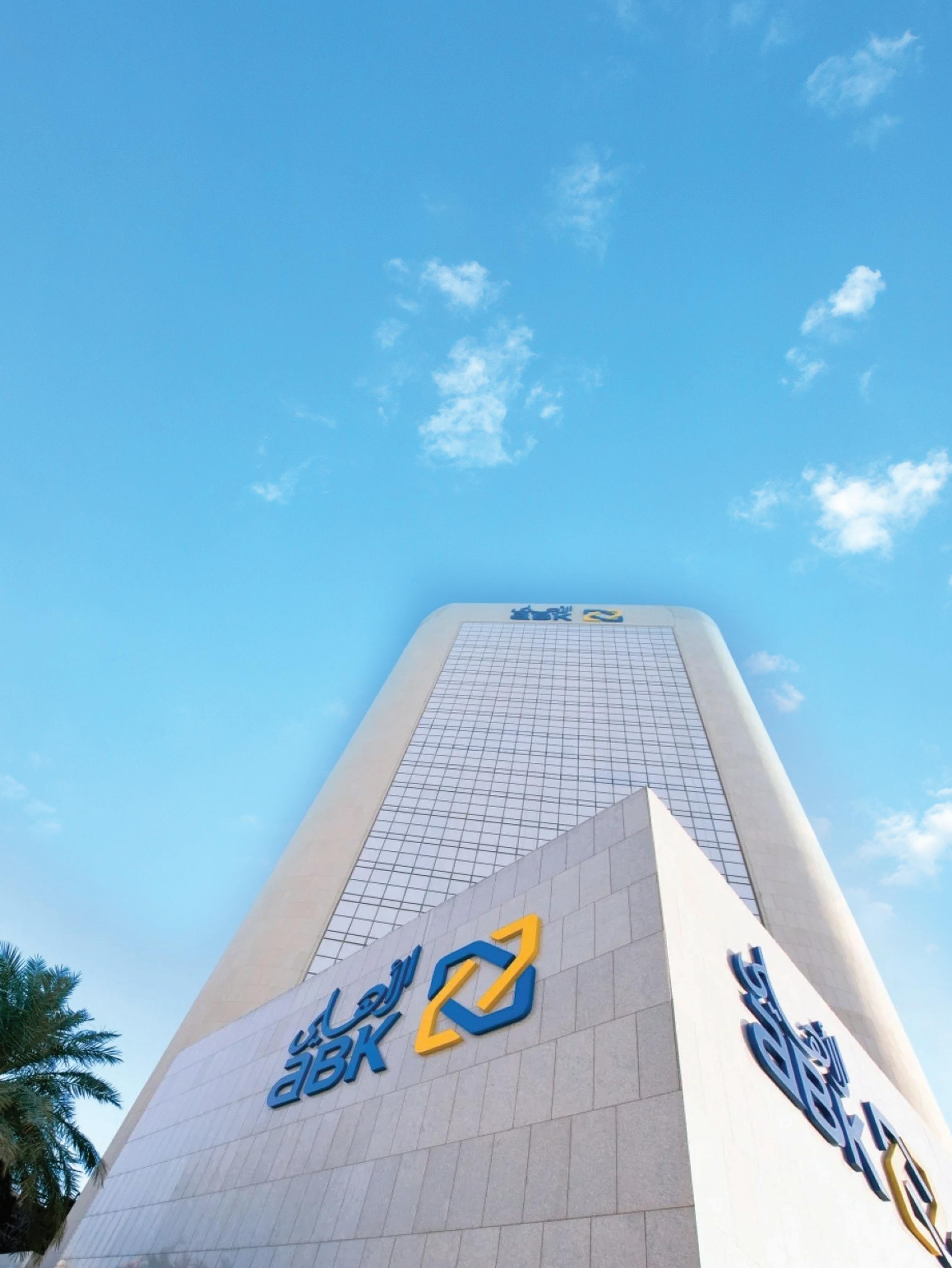
Al Ahli Bank of Kuwait currently operates 28 branches in the country and 47 between the UAE and Egypt
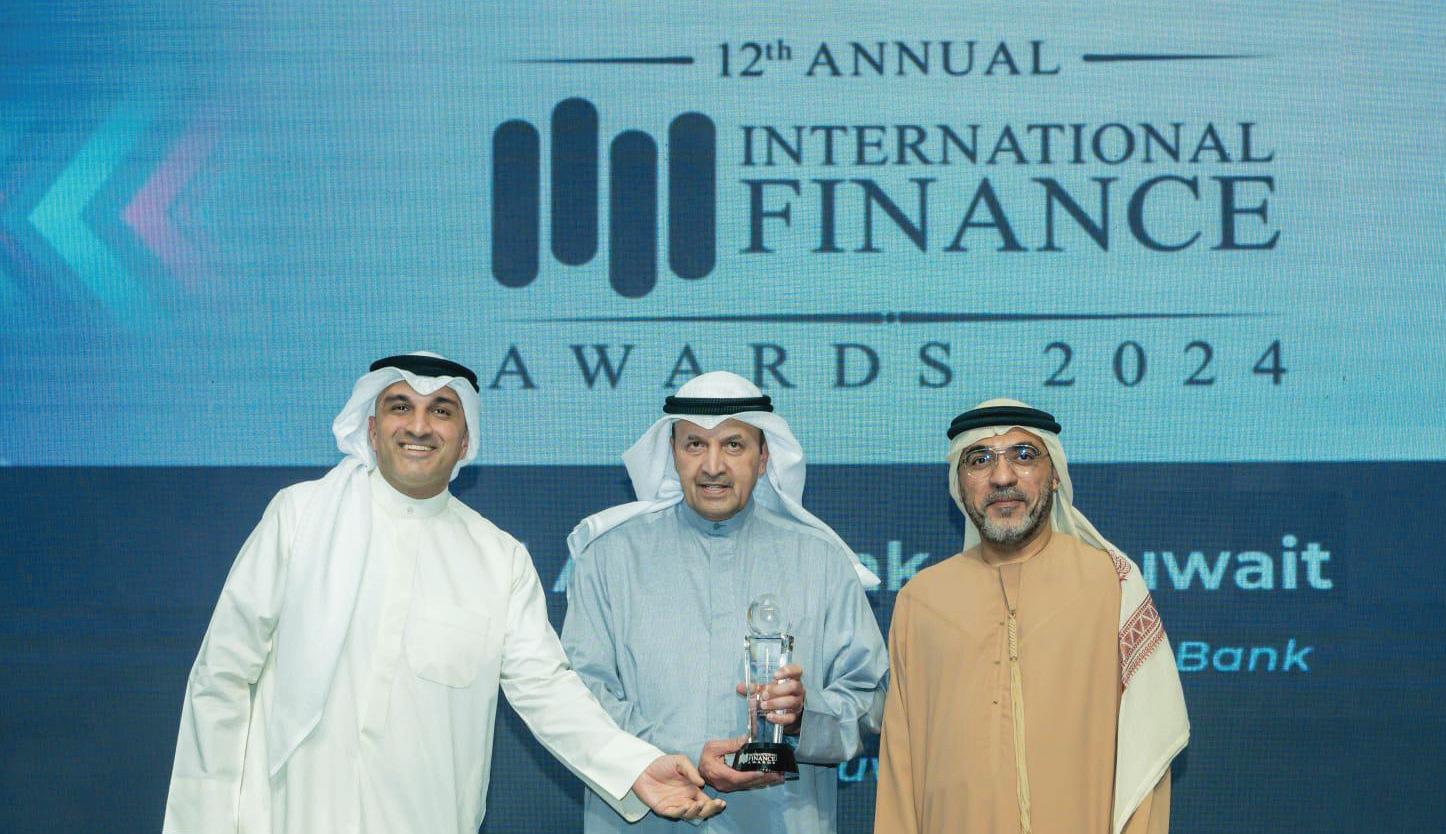
has been crucial in building and reinforcing robust relationships with investors. This is achieved through consistent communication with the Investor Relations Unit and active participation in various events and conferences.
The Acting Group CEO also highlighted ABK’s significant achievement in successfully issuing USD 300 million AT1 bonds in 2024. This marked the bank’s return to capital markets for the first time since 2018, with a remarkable coverage ratio exceeding 4.5 times the offered amount, showcasing strong trust and confidence from investors in the bank’s stability.
Al Sumait concluded by thanking International Finance for its recognition, which reflects the great confidence and leading position that the bank enjoys in the banking sector. He added that ABK will continue to work on enhancing investors’ confidence in the coming period, which remains one of the bank’s top priorities.
ABK currently operates 28 branches in the country and 47
between the UAE and Egypt. The financial institution’s long-term regional aspirations are evident through the development of strategic alliances with world-class partners. Among these is ABK’s relationship with Emirates Skywards, with whom the bank established the country’s first co-branded credit card partnership in 2002, offering cardholders the opportunity to earn and redeem Skywards Miles.
On his part, Chief Strategy Officer Jawad added that the IF award is a testament to the many advancements ABK has experienced in 2024, such as its upgrade to the Premier Market on Boursa Kuwait. This was made possible due to the bank's adherence to the regulatory requirements set forth by Boursa Kuwait and the Capital Markets Authority.
He reiterated the bank's commitment to meeting investor needs through comprehensive disclosures regarding operations impacting financial indicators and ensuring value for investors, traders and clients alike.
"ABK actively participates in various events and conferences to connect with investment groups, collaborating closely with Boursa Kuwait and other entities," he added. Jawad highlighted that the bank is dedicated to employing best practices in investor relations, which has proven effective in establishing trust and credibility with analysts and shareholders. He noted that the bank follows a policy of transparency in external communications, adhering to the highest international standards.
ABK has also instituted quarterly online analysts' conferences on financial results to facilitate dialogue and responsiveness to enquiries. Jawad stressed that ABK will continue to develop strategic plans aimed at providing superior services and improving operational efficiency while enhancing communication with investors, financial analysts, and portfolio managers. This will further accentuate the bank's dedication to transparency and the open disclosure of its business performance.
The ports which are facing problems in Africa are exacerbated by corruption, bureaucratic delays, and inconsistent regulatory frameworks
A year after the armed conflict between Israel and Hamas broke out, which spread across the Middle East like wildfire, the standoff, is not showing any sign of settling down. Fears of an all-out war still linger around the region after Jerusalem expanded its strikes and incursions into Lebanon and Syria in 2024, followed by Iran launching its air strikes on Israel.
Yemen-based Houthi fighters have carried out nearly 100 attacks on ships crossing the Red Sea in what they describe as solidarity actions with Palestinians. In response, shipping firms have diverted vessels from the Suez Canal to longer routes around Africa
However, the one industry that suffered the most from the crisis has been global merchant shipping. Both the Suez Canal and the Red Sea have become collaterals here. Egypt lost around $7 billion in revenues from the Suez Canal in 2024. The loss has been more than 60% of the canal’s revenues in 2024 compared with 2023.
Yemen-based Houthi fighters have carried out nearly 100 attacks on ships crossing the Red Sea in what they describe as solidarity actions with Palestinians. In response, shipping firms have diverted vessels from the Suez Canal to longer routes around Africa, disrupting global trade by delaying deliveries and sending costs higher.
The attacks by the Houthis have caused a significant shift in global trade. Ships using the
Asia-Europe and Asia-Atlantic trade routes have been forced to avoid the Suez Canal and the Bab El-Mandeb strait, leading them to divert their shipping routes around Africa's Cape of Good Hope. This change has had a devastating impact on Egypt, which relies heavily on the Suez Canal as a key source of foreign currency.
Is Africa missing the bus?
Diversions of the global shipping through the Cape of Good Hope route was what African ports needed to play a bigger role in the transportation industry. The rerouting has seen ships travel longer distances, adding an average of 14 days for a vessel to sail from China to Europe. These additional 11,000 nautical miles have disrupted global trade and added operational costs for merchant vessel liners.
Estimates show that each diversion adds approximately $1 million in fuel costs, with more going towards insurance premiums and security measures.
“The risks in the Red Sea are not short-term; they are now ingrained in shipping logistics forcing long-term adjustments,” Bilal Bassiouni, Head of Risk Forecasting at South Africa-based Pangea-Risk said.
"For African ports, especially those that are strategically located on the maritime route around the Cape of Good Hope, the Red Sea diversions should have presented an opportunity for a boom
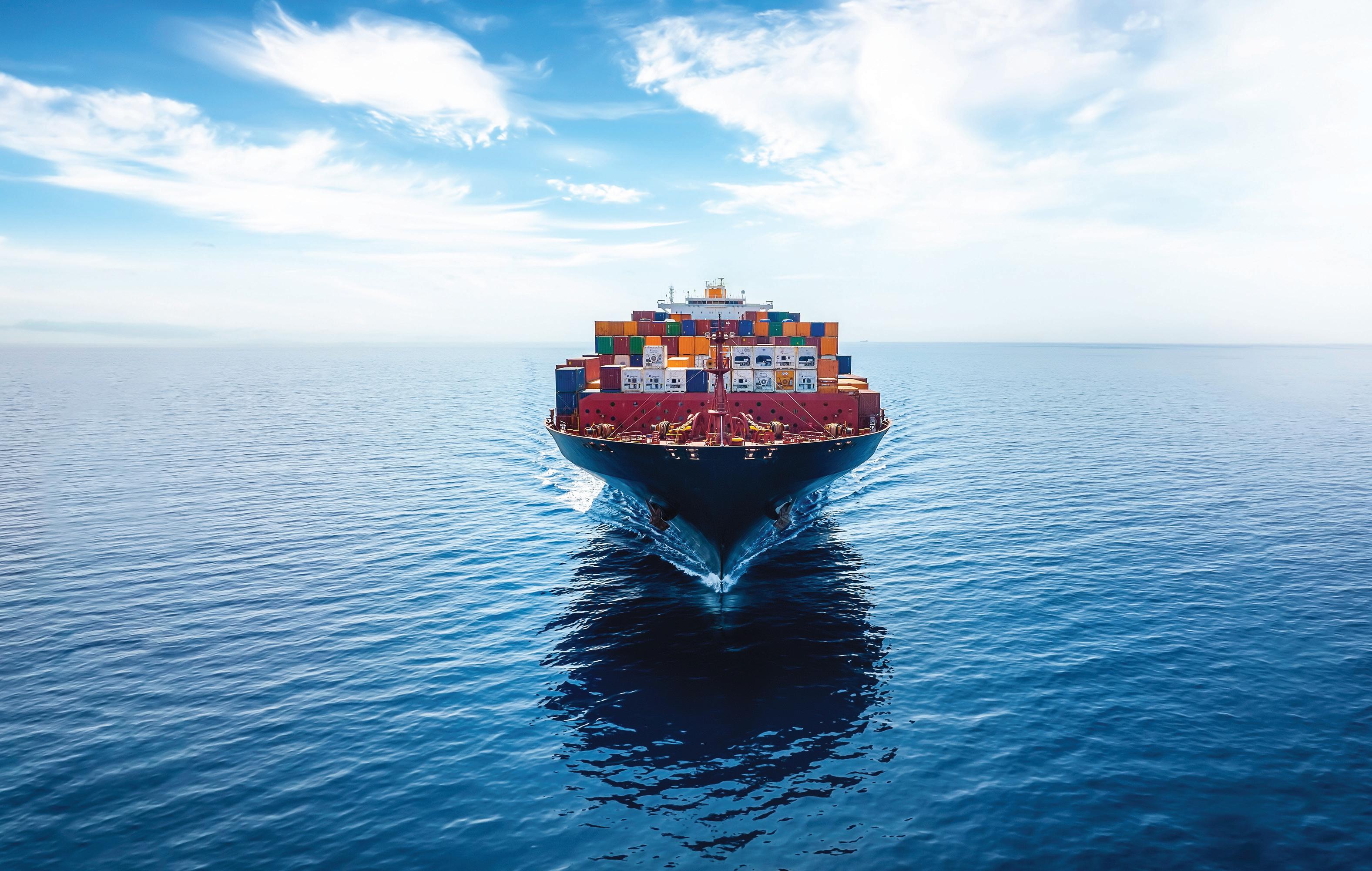
from offering restocking and bunkering services. Durban, Cape Town and Gqeberha in South Africa, Toamasina in Madagascar, Port Louis in Mauritius, Maputo in Mozambique and Walvis Bay in Namibia are among ports that have the potential to seize the moment," he added.
Data reveals that over the six-month period to May 2024, maritime trade through the Cape of Good Hope route surged by a staggering 125%. The number of container ships and LNG tankers using the route went up by 260% and 180% respectively. Other major African ports also witnessed increased traffic, including Mombasa in Kenya, Dar es Salaam in Tanzania and Beira in Mozambique.
George VanDyck, Lecturer at the Plymouth Business School, University of Plymouth, however, added that African ports were caught off guard by the sudden traffic surge. Blame poor infrastructure and operational bottlenecks, which have made it impossible for the continent to capitalise on the opportunities presented by the crisis, particularly restocking and bunkering.
Many ports are struggling with outdated equipment, insufficient storage facilities and a shortage of skilled workers.
Moreover, inadequate investment in expansions and development has resulted in inefficiencies that are slowing down operations, contributing to long
wait times and congestion.
The ports which are facing problems in Africa are exacerbated by corruption, bureaucratic delays, and inconsistent regulatory frameworks. Additionally, high logistics costs and limited connectivity between ports and inland transport networks contribute to inefficiencies. To make matters worse, the lack of deep-water facilities means that most ports on the continent cannot accommodate larger vessels.
The ports of Durban and Cape Town have become the poster boys of Africa’s deeply rooted infrastructural and operational inadequacies. A sharp increase in traffic by 328% from December 2023 to March 2024 ignited unprecedented congestion at the two facilities, literally bringing operations to a standstill.
Durban, South Africa’s biggest container seaport that handles approximately 60% of traffic, was the worst impacted. At one point, about 80 vessels were reportedly forced to wait offshore for weeks as the logjam crisis paralysed operations.
“South African ports seemingly lost their credibility in extending support services to vessels diverting through the Cape of Good Hope,” says Francois Vrey, Professor Emeritus in the Faculty of Military Science at Stellenbosch University, South Africa, while identifying that one critical area in which African ports have failed to rise to the occasion
is on bunkering services.
The increased sailing distances have led to a surge in demand for bunkering services. Ports such as Port Louis, Walvis Bay, and Maputo have attempted to position themselves as refuelling hubs. However, they have encountered challenges in managing larger volumes, which have been exacerbated by fuel supply shortages and inadequate refuelling facilities.
Durban, the largest bunkering hub in South Africa, was expected to reap maximum benefits from the bunkering boom. Despite making progress in expanding capacity, limited investments in advanced infrastructure and services have denied the port a competitive edge. Elements like storms, severe winds and high waves have further worsened the situation.
Another big setback arrived for the African shipping industry in 2024 when a deal between South Africa’s state-owned logistics company, Transnet, and a company owned by Filipino billionaire Enrique Razon to expand and run Durban container port was put on hold. The decision in the Durban High Court was taken in October in response to an application after AP Moller-Maersk (APM Terminals) challenged the awarding of the deal to ICTSI, the Filipino port operator.
The likelihood of an all-out war in the Middle East may force the global merchant shipping industry to be dependent on African ports for an indefinite period. The continent has the chance to tap future windfalls.
However, the continent needs to prioritise investment in ex-

panding port infrastructures, improving logistics networks and upgrading equipment to handle larger volumes of traffic. Besides, governments must improve the regulatory frameworks, strengthen regional cooperation and provide incentives for private sector involvement. A fiasco like the one involving Transnet must not be repeated.
Infrastructure: Another mess Africa also needs to focus on enhancing the integration of ports with railways and road networks, which is critical in guaranteeing better connectivity between ports and inland markets. However, budgetary constraints and competing national interests force most governments to decide against mobilising the required resources.
South Africa alone requires a mind-boggling $9.2 billion to address the infrastructure woes
plaguing its ports and rail network. Namibia, which has made significant offshore oil discoveries, needs $2 billion to expand port infrastructures.
Even though the continent has seen the capacity of its ports grow significantly over the years, a 2024 report from the Africa Finance Corporation said that these expansions, upgrades and investments have not led to better inland logistics and supply chains.
Since 2005, African ports have received an estimated $15 billion in investments, allowing them to accommodate larger ships and offload more cargo for transportation across the continent.
According to the African Development Bank, port development led to increased traffic. Between 2011 and 2021, containers passing through African ports increased by nearly 50%, from 24.5 million to 35.8 million.
However, Africa Finance Corporation's 2024 report claims that the “state of Africa's Infrastructure,” the increased capacity has yet to lead to an efficient logistical supply chain across the continent. As per the analysts, African governments have neglected road and railway networks, which are unevenly distributed, of poor quality and underused, which limits their usefulness.
In the words of Gabriel Sounouvou, a specialist in logistics and supply chain management based in Guinea, "bad roads make it hard to do business in Africa, especially outside coastal areas."
The road corridors are not suitable for truck movements.
Jonas Aryee, head of Maritime Economics and International Trade Modules at Plymouth University in England, said human factors also make it difficult to transport goods across Africa.
"Some countries are still not opening up, and they're protecting their local industries from those of their fellow African countries. You will find several roadblocks — from police, from customs, from gendarmes — in many countries when goods are going through. And it's made the cost of doing business in Africa so high,” Aryee said.
The Africa Finance Corporation further showed that the continent has 680,000 kilometres of paved roads, just 10% of the total found in India, which has a similar population but one-tenth the land area.
The experts noted that the roads connecting African countries have
remained in bad shape because the governments have not formed a joint team to invest in, build and manage highways that could improve the free flow of goods and people.
African governments are also failing to raise massive resources, thereby being forced to bring on board global operators not only to invest but also to take over the running and management of ports with the sole objective of improving efficiency.
Francois Vrey, Professor Emeritus in the Faculty of Military Science at Stellenbosch University, South Africa, contends that while port infrastructure investments are
critical, Africa must be conscious of the risk of overinvestments to avoid creating white elephants in the pursuit of short-term gains.
Kenya’s Lamu port offers a classic example of such irrational investments. While the government committed $367 million to build the first three berths that were commissioned in 2021, the port that was expected to become a transhipment hub is today largely a white elephant. Since its commissioning, less than 70 vessels have called at the facility.
Investments in port infrastructure are essential for Africa to compete effectively on a global scale. This is particularly important, as the World Bank’s Container Port Performance Index (CPPI) for 2023 shows that none of Africa’s ports are ranked among the top 100 in the world.
The Port of Berbera in Somaliland is the highest-ranked African port, coming in at position 103 globally. While improving infrastructure is crucial, Africa must also enhance maritime security to make its ports more appealing.
There is still much work to be done for the continent’s ports, but addressing these issues could position them at the forefront of global maritime trade.


Elon Musk’s DOGE project directed the firing of hundreds of FAA employees
Maverick tech billionaire Elon Musk, who has also become an influential figure in the Donald Trump administration (as the DOGE boss), has now fixed his gaze on the United States Federal Aviation Administration (FAA). As the “spearhead” of the “Department of Government Efficiency” (DOGE), Musk seeks to transform air travel, a sector "riddled with a baggage of regulation and oversight."
Musk, who, apart from owning Tesla and SpaceX, possesses a private pilot’s certificate, has locked horns with the American aviation watchdog.
"In a moment charged with peculiarity, Musk shared his bewilderment on social media over the non-linear flight path of a commercial jet. The post ignited conversations about the intricate calculus that governs flight paths, highlighting Musk’s missteps in understanding a system he aims to revamp," a report from Science Magazine summed up the whole thing in these following words.
Elon Musk vs FAA
Conversations on X (formerly Twitter and also owned by the Tesla and SpaceX chief) show Elon Musk and his allies are overlooking variables like weather conditions, air traffic nuances, and federally dictated air highways—factors that dictate the journeys of commercial aircraft, aspects that prioritise safety and efficiency above speed.
SpaceX engineers have already entered the scene to "help" the FAA modernise its air traffic control under the Trump administration. Secretary of Transportation Sean Duffy said in an X post that the deadly January 29 crash between a US Army Black Hawk helicopter and an American Airlines flight landing at Reagan Airport in Washington served as "a heartbreaking wake-up call that improvements must be made."
A spokesperson for the Department of Transportation reportedly told Reuters

that SpaceX engineers tapped as part of Musk's DOGE team at the FAA are serving as special government employees and will be kept separate from the FAA's Office of Commercial Space Transportation, which handles regulations for the company, to avoid any conflicts of interest.
In an email to the employees, Acting FAA Administrator Chris Rocheleau said that the DOGE team would be visiting more FAA facilities, including FAA headquarters, after stops at the Air Traffic Control Command Centre and Potomac TRACON in Warrenton, Virginia.
Former Secretary of State Hillary Clinton (whom Trump defeated in the 2016 Presidential Election) was among critics to claim Musk's team was inappropriately gaining special
access to the FAA. Duffy told Fox News that the SpaceX engineers had gone to the FAA on February 24 to "just observe and would craft a phased approach on how we might be able to fix the American system."
He added, "It’s not just SpaceX. We’re going to ask everyone else to come in that’s smart and bright and loves America to think through the process. We’re like using a rotary phone. We’re spending 90% of our money to keep the rotary phone working from back in the 1980s as opposed to thinking, well, we use cell phones today. We have such antiquated, old equipment that no one has fixed. Donald Trump has said, fix this system, make it work, keep people safe."
As part of his outreach effort,
Duffy will visit Air Traffic Control Command Centres across the United States to talk with FAA employees about "the critical need to upgrade the existing air traffic systems."
The DC crash, which killed all 67 people aboard both craft, happened nine days after President Donald Trump was sworn in as the 47th president. It was the deadliest American aviation disaster since 9/11.
In another X post, Duffy rejected what he described as the "growing media narrative that there are more aeroplane crashes now in Trump's presidency than under Biden."
He asserted that there were 57 aviation incidents in the United States during President Joe Biden's first month in office, "compared to 35 under Trump," while stating, "the
Number of air carriers in the United States from 2023 to 2025

need for immediate improvement to our safety infrastructure is long overdue."
Criticisms galore
Elon Musk did qualify for a private pilot certificate in 2002. However, as mentioned in the article's beginning, the tech billionaire and his allies have been overlooking the crucial variables that control the safety and efficiency of commercial aviation.
One very good example to validate this was the supply chain company CEO Ryan Petersen sharing a screenshot of the projected flight path of a United Airlines flight from San Francisco to Houston on X, which hewed close to the southern US border with Mexico.
“Why is this plane not flying in a straight line?” Petersen wondered. Musk replied, “It should be.”
"While both men appeared to suggest there was something irregular or suspicious about the flight plan, this was not the case. Planes may take certain less direct routes due to weather, air traffic, or any number of factors. Indeed, Musk’s own private jet has flown on curved trajectories, as captured in screenshots of flight records shared on X by Jack Sweeney, a software engineer who has worked for Ame-
rican Airlines and the aviation consultant UberJets, and famously aroused Musk’s ire by tracking the movements of his private jet with ElonJet, a network of social accounts. Sweeney posted the flight path that Trump’s plane took from Southern Florida to Texas in November ahead of a SpaceX launch, which for a while hugged the coastline of the Gulf of Mexico instead of tracing a straight line over the body of water," reported Rolling Stone magazine.
“There are countless reasons why a flight might not follow a straight path — weather, regulations, or optimising fuel efficiency by following favourable winds,” Sweeney stated on X.
Sweeney told the magazine that Petersen and Musk appeared to be “jumping to conclusions” to “push a point that our system is outdated, which, there’s definitely things that can be updated.”
However, he added, "It’s a complex system currently in place, and there are reasons things were designed the way they were, including with established routes in the sky that function as aerial highways. It takes time for things to get updated properly.”
The software engineer also felt that Musk’s DOGE has not taken into
account these technicalities, while it seeks to slash away at vital federal agencies, including the FAA.
“That predicted line that is on that picture is usually [navigational] points picked by the dispatchers or the pilot,” Sweeney mentioned, while referring to Petersen’s screenshot.
He found further flight data that showed the flight route was initially straight but adjusted to avoid turbulence.
Scott Manley, a science educator, physicist, and licensed private pilot, offered another potential reason for the curved route between the two cities, which he said adds about 50 miles, or 12 minutes to the trip.
“The US military has a huge chunk of airspace it randomly closes to let their pilots train or to test new weapons,” he wrote in a post on X, sharing a map screenshot with a circle drawn around an area west of Bakersfield, California.
According to reports, Musk’s DOGE project directed the firing of hundreds of FAA employees. The White House has claimed that none of the workers who were fired were performing safety-critical functions. Musk backed it with his X post, which stated, “To the best of our knowledge, no one affecting safety has been fired.”
However, when Rolling Stone spoke with several current and former FAA workers, the latter mentioned that the vital jobs the fired employees were doing included air traffic control support, obstacle impact that studies and identifies hazardous obstacles (like new buildings and cranes) to inform flight paths around the country, keeping drunk or reckless pilots out of the skies, and airman certification that
decides whether pilots are medically fit enough to fly their aircraft. Are SpaceX employees, who are going to replace these professionals in the FAA, are aware of the complexities associated with these roles?
On January 20 (the day of Donald Trump’s inauguration), Michael Whitaker stepped down as FAA administrator after clashing with Elon Musk.
The SpaceX CEO publicly called on Whitaker to resign after the FAA fined the company for failing to get approval for launch changes.
Whitaker was only a year into the top job and had several years left in his term. While Trump appointed Chris Rocheleau, a top executive for an aviation business association, as acting FAA administrator, there is no clarity yet on when the aviation watchdog will get its new full-time boss.
Elon Musk has been a bitter critic of Whitaker. The SpaceX boss has complained many times about the FAA, including a September 2024 outrage after the agency levied a $633,000 fine for launching missions with unapproved changes. The FAA also fined Starlink after the SpaceX subsidiary failed to submit safety data before launching satellites in 2022.
However, the biggest issue here is the FAA suffering from underfunding and outdated technology. In 2023, an expert panel's report found that the watchdog's increasing reliance on overtime to staff air traffic control facilities was putting air safety at risk. The agency has fielded hundreds of complaints from air traffic workers describing dangerous conditions
from staff shortages to dilapidated buildings.
Now Musk wants retired air traffic controllers to consider returning to work amid staffing shortages, but to ensure that, a federal law needs to be reformed. The law requires air traffic controllers to retire by "the last day of the month" in which they turn 56.
The Transportation Secretary can exempt controllers "having exceptional skills and experience" from automatic separation, but only until that person is 61. The retired air traffic controllers, before they rejoin, also must pass annual medical examinations with strict physical requirements, like having 20/20 vision, sufficient hearing, and proper blood pressure levels.
While Duffy has announced a plan to "supercharge" controller hiring (by simplifying the existing hiring process and increasing starting salaries), the newly-appointed Transportation Secretary also plans to "make an offer" to air traffic controllers to let them stay longer, past the mandatory retirement age of 56.
However, the National Air Traffic Controllers Association, the union that represents the country's air traffic controllers, told Flying Magazine that Duffy's suggestion was not the answer to filling thousands of shortages.
"The solution to the ATC staffing crisis is a long-term commitment to hiring and training and the retention of the experience of all the highly skilled, highly trained air traffic controllers," the union said, noting that in 2026, just dozens of air traffic controllers across 35 facilities will reach 56.
While the FAA has tried to boost recruitment efforts amid ongoing
staffing and retention issues, the process of recruiting air traffic controllers is a long and strenuous one. Including training, it takes three years, while the attrition level constantly remains on the higher side.
According to reports, Starlink may secure a multibillion-dollar contract to overhaul the US air traffic control communication system, potentially displacing the long-standing contractor Verizon. The FAA is preparing to cancel its $2.4 billion deal with Verizon and shift the work to the SpaceX subsidiary, according to The Washington Post. The news got further corroborated by both Bloomberg and The Associated Press.
And if things pan out as claimed by the media outlets, there will be serious accusations of favouritism, cronyism, and conflicts of interest against Elon Musk. Why so? The SpaceX boss has raised concerns over the Verizon system, claiming without evidence that it is “not working and putting air travellers at serious risk.” In one of his X posts, the tech billionaire argued that the Verizon communication system was “breaking down very rapidly,” adding that the “FAA assessment is single digit months to catastrophic failure, putting air traveller safety at serious risk.”
"The FAA had been scheduled to begin disbursing funds for the Verizon contract next month (March 2025), but SpaceX’s team reportedly recommended that Starlink be awarded the deal instead," reported The Washington Post.
However, the process of shifting

the contract from one contractor to another needs a proper procedure, and while senior FAA officials are said to have refused to approve the proposal, Elon Musk’s team is now looking to seek assistance from a Trump-appointed official within the agency.
As per Bloomberg, Musk has reportedly approved a shipment of 4,000 Starlink terminals to the FAA, and one such terminal has already been installed at the FAA's ATC technology lab in New Jersey. There will be a new programme "TDM X," with the goal being to have the upgrades fully functional in 12-18 months.
Speaking to Bloomberg, an FAA spokesperson confirmed that testing has been completed for one Starlink terminal in Atlantic City (New Jersey) and two other terminals at nonsafety-critical sites in Alaska.
“The FAA has been considering
the use of Starlink to fix telecommunication connections to provide more reliable weather information at remote sites, including in Alaska,” the spokesperson added.
Hitting back at the DOGE chief, Verizon said that “the FAA systems currently in place are run by L3Harris and not Verizon.”
Musk later corrected himself and said that L3Harris is responsible for the “rapidly declining” system.
“Our company is working on building the next-generation system for the FAA which will support the agency’s mission for safe and secure air travel. We are at the beginning of a multi-year contract to replace antiquated, legacy systems. Our teams have been working with the FAA’s technology teams, and our solution stands ready to be deployed. We continue to partner with the FAA on achieving its modernisation objectives,” Verizon stated.
Elon Musk and DOGE will be under some scrutiny in the coming days. While they need to find a quick fix to the problem of recruiting a massive number of air traffic controllers in a short period, apart from making sure that FAA gets its house in order, any increased participation from SpaceX and Starlink in this process will be seen as a potential "Conflict of Interest."
It’s a tightrope situation and DOGE has already entered into it proactively through its decision of downsizing the FAA workforce. There is no backing out from here.
Through its comprehensive security solutions, SAFE aims to create an environment where businesses can thrive, and new opportunities can flourish
The National Security Services Company (SAFE), owned by the Public Investment Fund (PIF), is setting its sights on becoming the premier security company driving economic development in Saudi Arabia. With a vision anchored in excellence, innovation, and national pride, SAFE is committed to redefining the standards of security services while contributing to the Kingdom's broader economic ambitions under Vision 2030.

A vision for excellence
SAFE aspires to be recognised as the best in the security industry, not just within the Kingdom but also globally. This ambition stems from a deep understanding of the evolving security landscape and the critical role it plays in enabling sustainable economic growth. By adopting cutting-edge technologies, promoting a culture of continuous improvement, and investing in the development of Saudi talent, SAFE is poised to lead the transformation of the security sector.
Catalysing economic development
Security is a cornerstone of economic prosperity. SAFE recognises that robust and reliable security services are
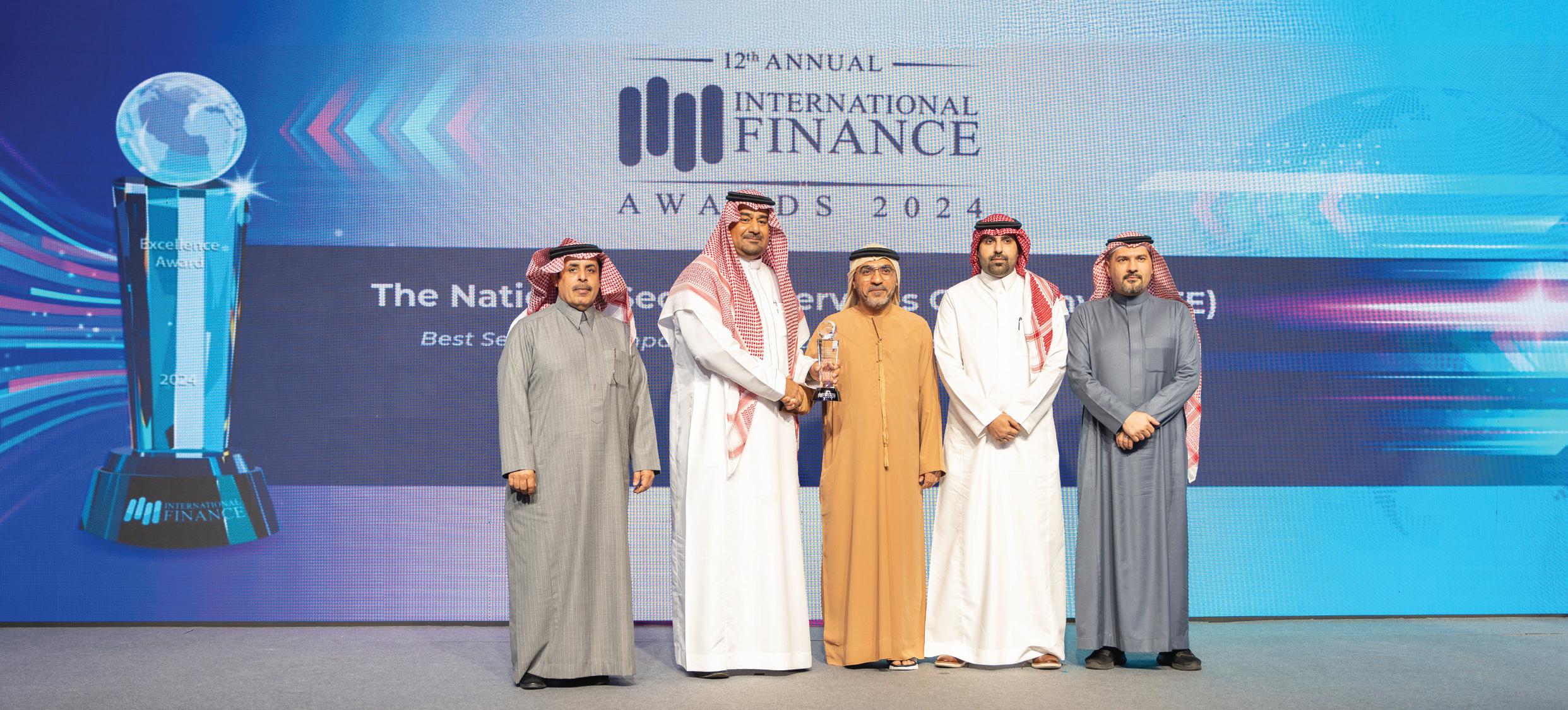
essential for boosting investor confidence, ensuring the safety of critical infrastructure, and supporting the smooth functioning of businesses. Through its comprehensive security solutions, SAFE aims to create an environment where businesses can thrive, and new opportunities can flourish.
SAFE is strategically positioned to contribute to Saudi Arabia's economic diversification efforts. By developing a thriving security industry, SAFE not only enhances the safety and stability of the Kingdom but also supports job creation, encourages local investment, and strengthens the private sector.
One of SAFE's core commitments is to empower Saudi nationals by providing them with worldclass training and development opportunities. Through specialised programmes tailored to the unique needs of the security industry, SAFE is building a skilled workforce that can meet the highest standards of professionalism and expertise. By prioritising the recruitment and development of Saudi talent, SAFE is contributing to the Kingdom's Saudization goals and ensuring that its workforce reflects the nation's values and aspirations. This focus on human capital development not only enhances the quality of services
provided but also reinforces the company's role as a catalyst for economic and social progress.
In a rapidly changing world, innovation is key to staying ahead. SAFE leverages advanced technologies such as artificial intelligence, surveillance systems, and data analytics to deliver cutting-edge security solutions. By integrating these innovations into its operations, SAFE ensures that its clients benefit from the most effective and efficient security measures.
This commitment to innovation extends beyond technology. SAFE continuously seeks to refine its processes, adopt best practices, and anticipate future challenges. This proactive approach enables the company to remain at the forefront of the security industry while consistently exceeding client expectations.
SAFE serves as a strategic partner for businesses and government entities across Saudi Arabia, going beyond the role of a mere security provider. By understanding each client's unique needs, SAFE delivers tailored solutions that address specific security challenges. Whether safeguarding critical infrastructure, protecting high-profile events, or ensuring the safety of individuals,
SAFE’s expertise and dedication set it apart as a trusted partner.
Supporting Vision 2030
SAFE’s vision aligns seamlessly with the goals of Vision 2030, Saudi Arabia’s ambitious roadmap for economic diversification and social transformation. By facilitating a secure environment, SAFE enables the Kingdom to attract foreign investment, promote tourism, and support the growth of new industries. Furthermore, the company’s emphasis on innovation and talent development contributes directly to the objectives of creating a knowledge-based economy and empowering Saudi citizens.
As Saudi Arabia continues its journey toward a brighter future, SAFE stands as a symbol of progress and resilience. Its commitment to excellence, innovation, and national development positions it as a key player in realising the Kingdom’s aspirations.
The National Security Services Company is a leader in progress, innovation, and economic empowerment, going beyond the role of a typical security provider.
Guided by the vision of becoming the best security company contributing to economic development, SAFE is reshaping the security landscape in Saudi Arabia and beyond.


Energy majors in the US have spent large amounts in increasing their oil and gas production
Immediately after his election win last year, United States President Donald Trump made his mind clear on the future direction of the American energy industry. The phrase "Drill, Baby, Drill" was used for oil and gas exploration and extraction. However, oil majors are concerned that increasing oil and gas output even further could create a glut and drive prices down, a development they want to avoid at any cost.
On his first day in office (January 20, 2025), President Trump declared an energy emergency, stating, “The integrity and expansion of our Nation’s energy infrastructure is an immediate and pressing priority for the protection of the United States’ national and economic security.”
In January 2025, Trump also signed several executive orders, including one on energy that includes a wide range of provisions aiming to “unleash America’s affordable and reliable energy and natural resources," thereby ending the Joe Biden administration’s pause on the approval of new LNG exports.
It also commenced processes to ease regulations on oil and gas production. Trump also signed an order to lift restrictions on oil, gas, and mineral production in Alaska and announced plans to establish an inter-agency working group to determine and implement measures to expedite oil and gas development.
The executive order focuses on the "national interest to unleash” America’s affordable and reliable energy and natural resources," which will in turn, rebuild America’s economic and military security.
The Trump administration has "clear policy goals" for the United States to meet the energy needs of Americans, by exploring federal lands and water, including the Outer Continental Shelf, for energy exploration and production to solidify the United States as a global energy leader. The government will also use the energy sector reforms as a means to create jobs, apart from ensuring prosperity and strengthening supply chains in the United States by establishing the world's largest economy as the leading producer and processor of non-fuel minerals including rare Earth minerals.

The executive order also speaks on arming the "American Energy Security" to an extent, where across the states, an abundant supply will be readily made accessible to protect the Trump administration's economic, national and military needs. However, the order also eliminates the Biden government's electric vehicle mandate to promote "true consumer choice for essential economic growth and innovation, remove the regulatory barriers to motor vehicle access, and terminate state emission waivers that
function to limit sales of gasolinepowered automobiles."
Energy efficiency regulations will be rolled back, involving lightbulbs, dishwashers, washing machines, gas stoves, water heaters, toilets and shower heads to safeguard Americans’ freedom to choose from a variety of goods and appliances and promote market competition.
"The Trump administration will ensure that all regulatory requirements for energy are grounded in clearly applicable law. The global effects of
a rule, regulation or action will be reported separate from its domestic costs and benefits to promote sound regulatory decisions and prioritise the interests of Americans," states the order further, while mandating all agency heads to review existing regulations to identify those that impose an undue burden on domestic energy resources (particularly, oil, natural gas, coal, hydropower, biofuels, critical minerals and nuclear energy resources), and to develop a plan to suspend, revise or rescind such measures.
Source: Statista
The executive order, in effect, has put an end to all activities, programmes and operations associated with the American Climate Corps, which was entrusted to fight the battle against climate change. All the heads of executive departments will now undertake efforts to eliminate delays with their respective permitting process and use all authorities, including emergency authorities, to expedite their federal permits, including a potential revision or reimagining of the National Environmental Policy Act (NEPA) process. The executive order will also prioritise accuracy in environmental analyses through the end of the "Interagency Working Group" on the Social Cost of Greenhouse Gases.
One of the most significant sections of the executive order is Section 7, which terminates the "Green New Deal,” by directing all agencies to immediately pause the disbursement of funds appropriated through the Inflation Reduction Act (IRA) or the Infrastructure Investment and Jobs Act (IJA), including but not limited to funds for electric vehicle charging stations made available through the National Electric Vehicle Infrastructure Formula Programme.
"Although Section 7’s effect on the renewable energy tax credits under the IRA is unclear, it appears that the order is aimed at targeting grants, loans and contracts under the IRA and IJA, not tax credits. The IRA’s direct pay mechanism under Section 6417 of the Internal Revenue Code is not likely to be affected by this language since direct pay is a statutory method for
claiming a tax refund and not a grant, loan or contract. If the executive order is interpreted to halt direct pay, it will likely be subject to considerable legal scrutiny and ultimately be overturned as taxpayers sue for direct pay payments that they are entitled to by statute," observed United States-based law firm McGuireWoods.
Additionally, the secretary of energy will restart reviews of applications for approvals of liquified natural gas (LNG) export projects as expeditiously as possible, apart from considering the economic and employment impacts on the United States and on the security of allies and partners that would result from granting such applications.
The executive order also requires the secretary of the interior, secretary of agriculture, administrator of the Environmental Protection Agency, chairman of the Council on Environmental Quality and heads of other relevant agencies to revise undue burdens on the domestic mining and processing of nonfuel minerals.
Since Alaska holds an abundant and largely untapped supply of natural resources including energy, minerals, timber and seafood, the Trump administration has now directed the United States departments and agencies to maximise the development and production of natural resources (including LNG) efficiently and effectively on federal and state lands in the region. Federal departments and agencies are directed to prioritise the development of Alaska’s liquified natural gas potential.
While the new executive order has given a massive playing field for the oil and gas majors, several of these ventures have already warned about not looking to increase production unless prices increase significantly. In 2024, American oil and gas production rose to record highs. Crude output increased by 260,000 bpd monthon-month, to a record 13.46 million bpd, in October, in line with demand growth, according to the US Energy Information Administration (EIA). In 2024, drilling operations became more efficient, allowing for greater output. However, weaker-than-expected demand growth in several parts of the world, particularly China, contributed to lower oil prices.
Many oil and gas companies have shown support for Trump’s executive orders, which make it easier to conduct operations, including new exploration projects and production increases. However, several oil executives have said these new policies will not lead to an immediate output boost, stating concerns over oil prices. While Trump hopes to help reduce inflation by decreasing energy prices for consumers, many oil companies are hesitant to increase output without the guarantee of higher oil and gas prices.
Ron Gusek, the president of oil field services company Liberty Energy, said, “What you are seeing is a huge amount of positivity. But it’s too early to say that that’s going to translate into a change in actual activity levels here in North America.”
American energy majors have spent large amounts in increasing their oil and gas production in recent years. Things have only accelerated since 2022 in the wake of the Russia-Ukraine
war and subsequent sanctions on Moscow's energy trade, which created an oil and gas shortage around the globe and drove prices up, with Europe particularly feeling the pinch hard.
In addition, with the International Energy Agency’s warning that the demand for fossil fuels will decline from 2030, many oil and gas companies are exploiting their resources while global demand remains high. However, after several years of spending, many are reluctant to invest more without a guarantee of a return.
According to the EIA, Brent Benchmark crude oil prices are expected to average $74 per barrel in 2025, marking a decrease from $81 in 2024.
However, with Trump being the US President, several customers have shown interest in signing long-term deals for US gas exports, according to Ben Dell, a managing partner of the energy investment firm Kimmeridge.
Dell noted, “People want to be early and in the forefront of signing up for US products to try and stave off potential tariff threats.”
Trump threatened to introduce 25% tariffs on Canadian and Mexican products, including energy. The Republican also said that he planned to introduce the tariffs on his first day in office.
Following announcements of strong retaliatory measures from Ottawa and Mexico City, Trump has decided to pause his plans. The world's largest economy will now pursue negotiations to address its bilateral concerns with its North and Latin American neighbours. If tariffs on oil and gas are introduced in the coming weeks, they could drive up energy prices and increase reliance on domestic production.
"We still expect Canadian oil producers to eventually bear most of the burden of the tariff with a $3 to $4 a barrel wider-than-normal discount on Canadian crude given limited alternative export markets, with US consumers of refined products bearing the remaining $2 to $3 a barrel burden. We estimate Canadian natural gas exports to the US might drop by a modest 0.16 billion cubic feet per day (bcfd) as a result of 10% import tariffs, with little if any impact on US gas prices," stated Goldman Sachs on the prospects of Washington imposing tariffs on Ottawa.
According to analysts at Scotiabank, United States-based exploration and production companies are expected to target 5% production growth in 2025, and flat to slightly lower year-over-year capital expenditures. This is except ExxonMobil, which has plans for a large increase in production.
Talking about ExxonMobil, the energy major has announced plans to increase its oil and gas output by 18% by 2030, with a focus on expanding its operations in the United States and Guyana. The plan includes raising annual project spending to $2833 billion from 2026 to 2030. The company recently acquired US shale producer Pioneer Natural Resources. Exxon also plans to boost earnings by $20 billion and increase cash flow by $30 billion over the next five years.
This financial boost will support Exxon’s expansion plans in oil and liquefied natural gas (LNG) production, while also driving shareholder returns. The venture is already benefitting from its profitable Guyana operations and its growing US shale business. CEO Darren Woods has stated that

the increased project spending would "generate returns of more than 30% over the life of the investments."
The company intends to triple its production in the Permian Basin, the leading US shale field, to 2.3 million barrels per day (mbbl/d) by 2030. Additionally, Exxon aims to produce 1.3mbbl/d from its Guyana operations. Overall, ExxonMobil's oil and gas output is projected to reach 5.4mbbl/d, marking an 18% increase from the current 4.58mbbl/d.
The company plans to add two projects in Guyana by 2030, aligning

with its previous statement of seven to ten projects. Its LNG target remains at 40 million tonnes per annum. These targets aim to reassure shareholders that returns can be maintained despite fluctuations in oil market prices.
However, if we talk about the bigger picture, Wall Street expects American oil and gas companies to keep a lid on spending in 2025, while focussing more on generating shareholder returns, despite Trump's "Drill, Baby, Drill" call.
While Trump's oil and gas production maximising agenda has skyhigh ambitions, the reality is that the
industry has been driving down costs and increasing production by using more efficient technology rather than drilling many new wells. Producers are also contending with lower global oil prices as the post-COVID demand rebound runs its course, amid China's economic slowdown.
During an interaction with Reuters, Rob Thummel, senior portfolio manager at Tortoise Capital, "We expect most oil and gas producers to remain disciplined with capital expenditures. However, less regulation will make it easier to increase drilling activity if
commodity prices reach levels that are too high."
Another American energy major, Chevron, recently reported Q4 earnings below Wall Street estimates as weak margins dragged its refining business into a loss for the first time since 2020.
Chevron CEO Mike Wirth said that the post-COVID surge in fuel margins had run its course, and the downtrend is set to continue in 2025.
The second-largest American oil producer, one of the first companies to heed Trump’s executive order renaming the Gulf of Mexico the “Gulf
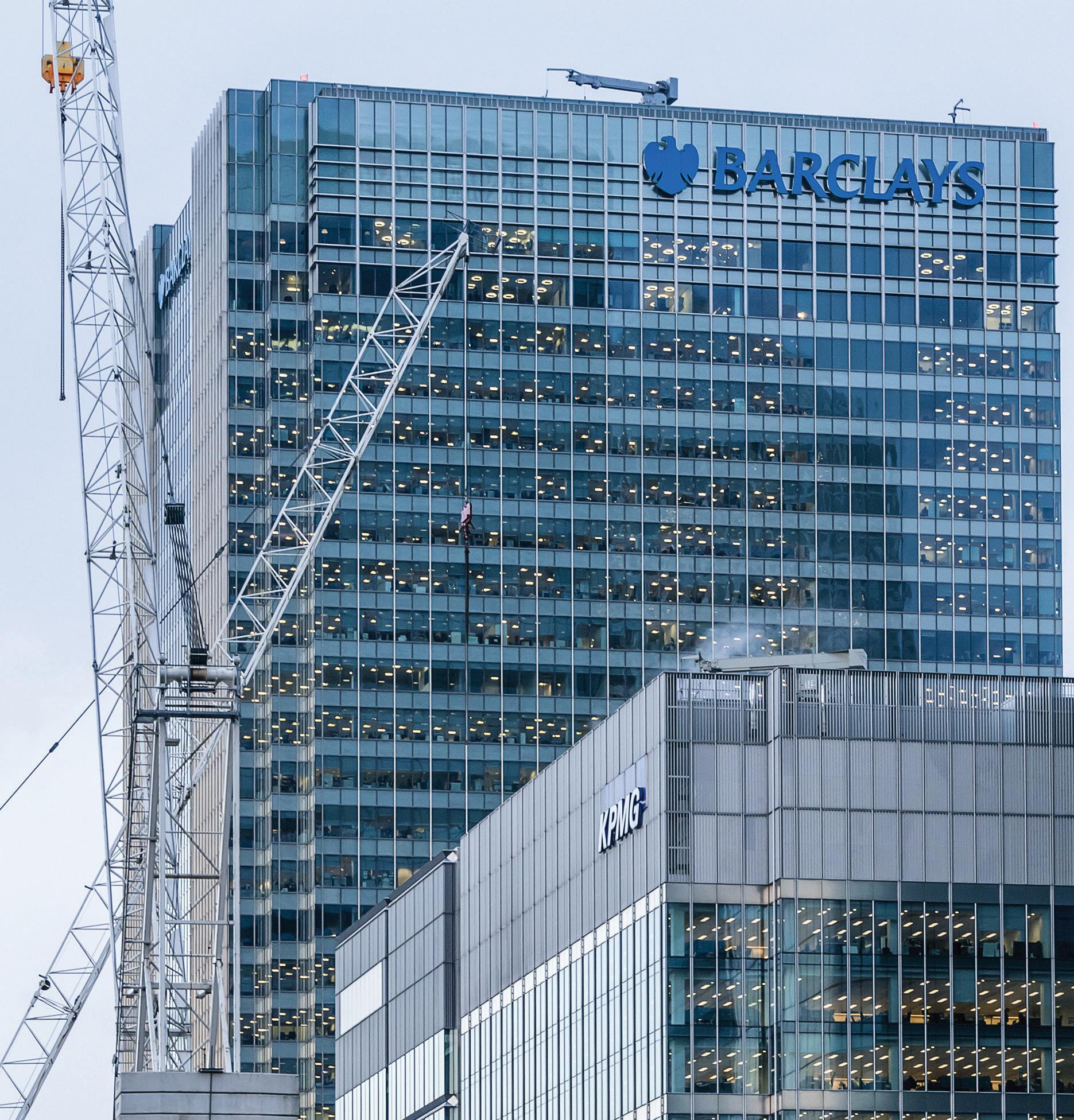
of America,” posted adjusted earnings per share of $2.06, way below Wall Street’s $2.11 estimate. Chevron’s downstream business lost $248 million in Q4, compared with a profit of $1.15 billion in the same period a year ago.
In a note, RBC analysts said profit from the company’s oil and gas exploration and production unit rose to $4.3 billion from $1.59 billion a year ago when the figure included charges, but the US business missed consensus estimates.
“A relatively soft set of numbers. With the strong run, CVX has had relative to peers over recent months, we expect these results to be taken as disappointing,” they remarked.
Chevron further noted a trend in the conventional energy sector: refining margins softening in both American and international markets, but weak jet fuel demand aggravating troubles for the American energy majors' domestic businesses.
The company has also remained locked in a bitter arbitration battle with Exxon over its proposed $53-billion takeover of Hess, which owns a 30% stake in Exxon’s Guyana holdings.
"Producer ConocoPhillips could also grow oil and gas production in the low single-digit percentage in 2025 to focus on returning cash to shareholders," Barclays said.
In December 2024, the company completed its $22.5 billion buyout of smaller peer Marathon Oil, which had been under a Federal Trade Commission review. According to Scotiabank analysts, this could swing its performance up.
"Occidental, meanwhile, is expected to report $730.9 million in adjusted
profit for the fourth quarter, up from $710 million in the same quarter last year. The oil producer closed its acquisition of CrownRock in August and its capex this year is expected to total $7.44 billion, up from $6.9 billion last year," Barclays continued, while adding, "For Diamondback Energy, Raymond James analysts expect the company to choose free cash flow over growth after its acquisition of Endeavor. Profit is expected to come in at $977 million, up from $854 million in the same quarter last year. Production growth is expected to be flat with lesser spending in 2025."
Rob Thummel, a senior portfolio manager at Tortoise Capital, said “We expect most oil and gas producers to remain disciplined with capital expenditures. However, less regulation will make it easier to increase drilling activity if commodity prices reach levels that are too high.”
"Despite Trump’s best efforts to immediately push oil and gas production up, it appears that the American fossil fuel producers will only increase output if the price is right. The introduction of several executive orders favouring oil and gas will make it easier to develop new projects and produce more if oil majors desire. It could also encourage more customers to invest in American oil and gas, to avoid tariffs on foreign energy products.
However, it is unlikely to have an immediate effect on the oil and gas output-related activities in the world's largest economy, which is already at a record high, unless the Brent Benchmark looks set to increase," noted Oilprice.com.
The slogan "Drill, Baby, Drill" is simply unattainable, especially considering that profit margins for fuel sales dropped significantly across the industry in 2024. This decline was driven by a fading surge in postpandemic demand and a slowdown in economic activity in both the United States and China.
However, there is a development that could brighten the prospects for energy sector players. As the demand for artificial intelligence (AI) continues to rise, data centres are becoming essential components of the 21stcentury tech ecosystem. These data centres provide the computational power necessary to train complex algorithms and manage vast amounts of data. Consequently, there is an estimated need for an additional 47 gigawatts of power capacity across the United States by 2030.
Notably, approximately 60% of this US demand is expected to be met by natural gas, thereby creating significant growth opportunities for oil and gas suppliers. Globally, the demand for natural gas will rise substantially, with some analysts forecasting up to 50% market growth over the next five years.

Huawei Technologies will likely begin mass shipments of its advanced 910C artificial intelligence chip to Chinese customers as early as May, with some sources even suggesting that some shipments of these chips have already been made.
The development comes at a time when Chinese AI companies are scrambling for domestic alternatives to the H20, the primary AI chip that Nvidia had, until recently, been allowed to sell freely in the Chinese market. Recently, the chipmaker was told by the Donald Trump administration that sales of the H20 would require an export licence.
For Nvidia too, this move will now hurt its efforts to stay engaged with China's booming AI industry. Chinese companies, including Tencent, Alibaba and TikTok parent ByteDance, have been ramping up orders for H20 chips due to booming demand for low-cost AI models from startup DeepSeek.
a single package through advanced integration techniques. This means that the semiconductor will have double the computing power and memory capacity of the 910B, apart from possessing incremental improvements like enhanced support for diverse AI workload data. H20, on the other hand, has lower computing capabilities than other Nvidia chips. However, its ability to connect to memory chips and other computing chips at high speeds remains high.
Seeking to limit China's technological development, particularly advances for its military, Washington has cut China off from Nvidia's most advanced AI products, including its flagship B200 chip. The H100 chip, for example, was banned from sale in China in 2022 by the American authorities before it was even launched. This resulted in Huawei and Chinese GPU startups such as Moore Threads and Iluvatar CoreX going after indigenous solutions. The Institute for Progress, a nonpartisan think tank, recently also argued for restricting H20 chips, writing that Chinese firms were likely building such systems.
now become the hardware of choice for (Chinese) AI model developers and for deploying inference capacity," said Paul Triolo, a partner at consulting firm Albright Stonebridge Group.
As per the reports, in 2024, Huawei distributed samples of the 910C to several technology firms and started accepting orders. China's SMIC is reportedly manufacturing some main components of the GPUs using its N+2 7nm process technology, although its chip yield rates are low. At least some of Huawei's 910Cs currently use chips that were made by Taiwanese contract chip manufacturing giant TSMC for Chinabased Sophgo.
The Commerce Department has been investigating TSMC's work for Sophgo after one of its TSMC-made chips was found in a 910B processor.
The Taiwanese venture made nearly three million chips that matched the design ordered by Sophgo, according to Lennart Heim, a researcher at RAND's Technology and Security and Policy Centre in Arlington, Virginia, who is tracking Chinese developments in AI.
Huawei's 910C, a graphics processing unit (GPU), represents an architectural evolution rather than a technological breakthrough, according to sources familiar with the product's design. The GPU also achieves performance comparable to Nvidia's H100 chip by combining two 910B processors into editor@ifinancemag.com
The Commerce Department's latest export curbs on Nvidia's H20 "will mean that Huawei's Ascend 910C GPU will


